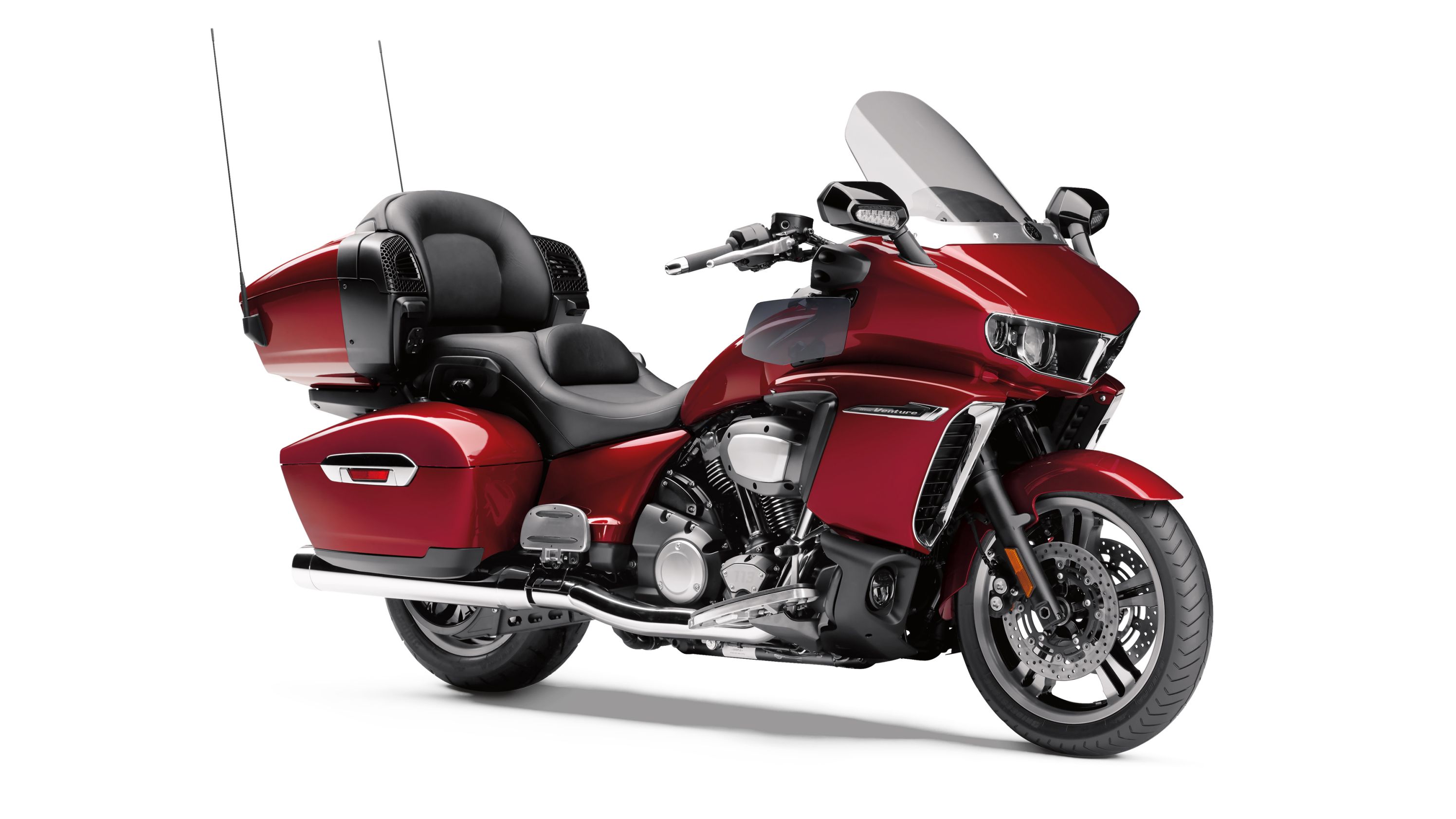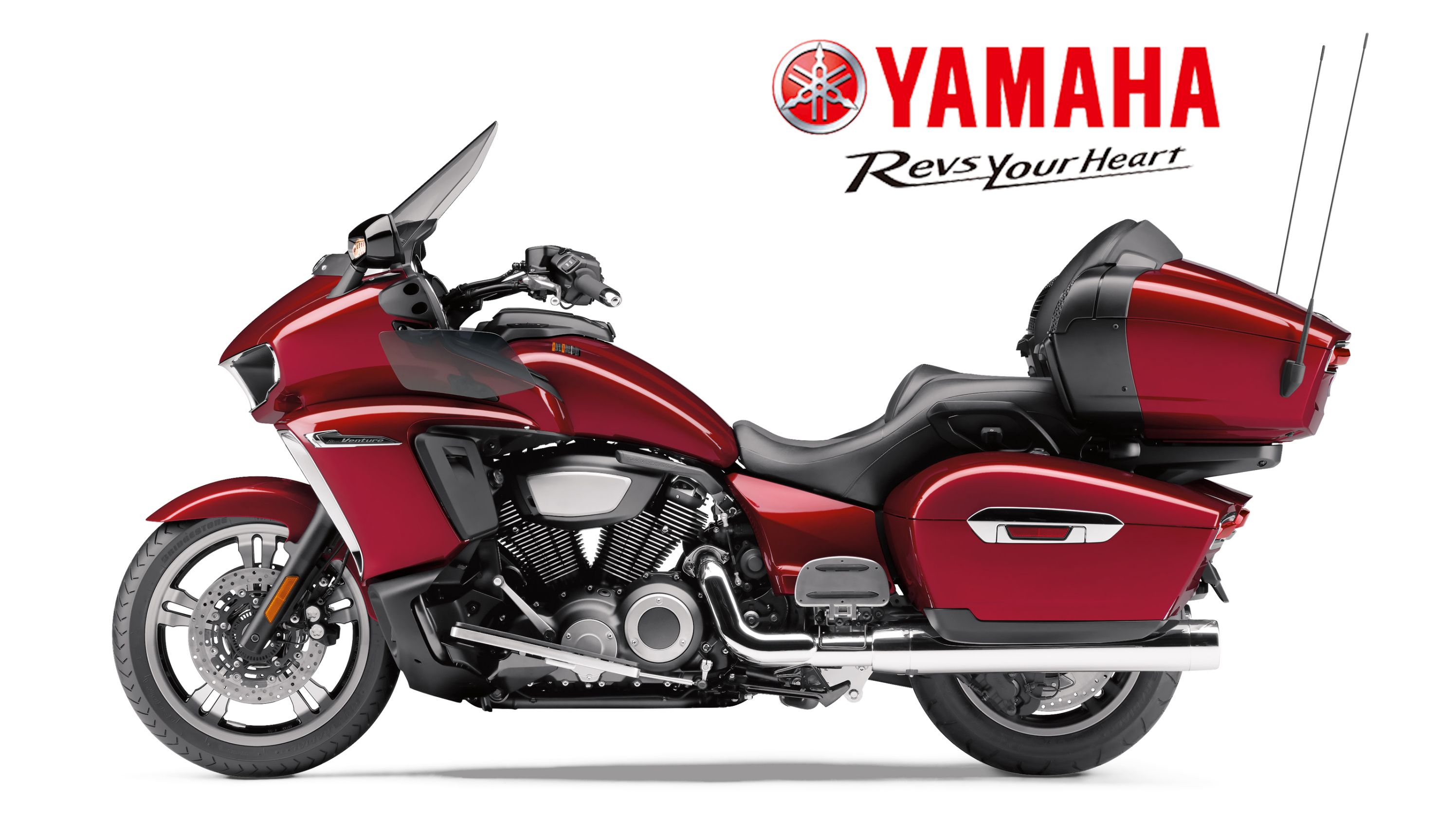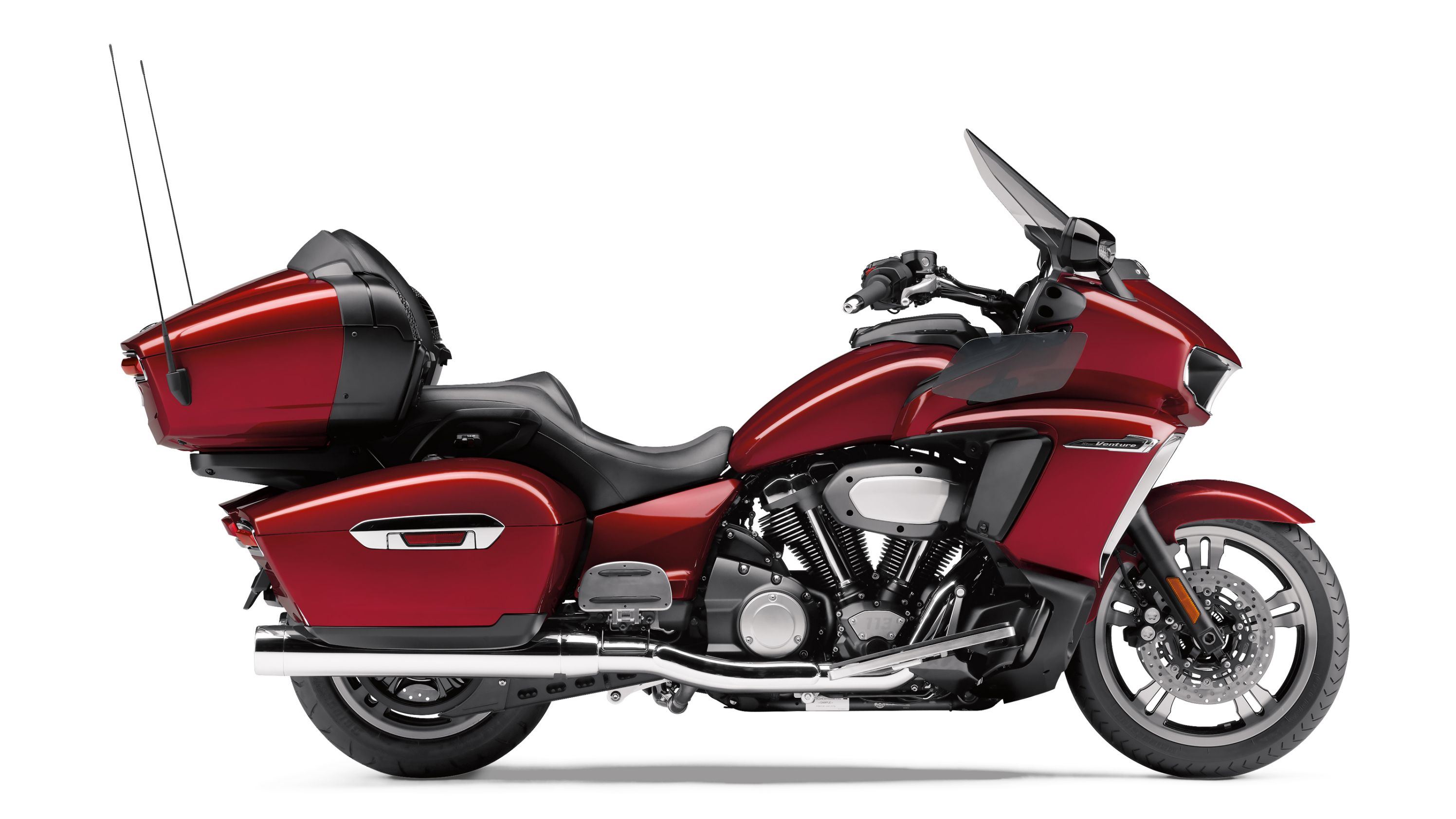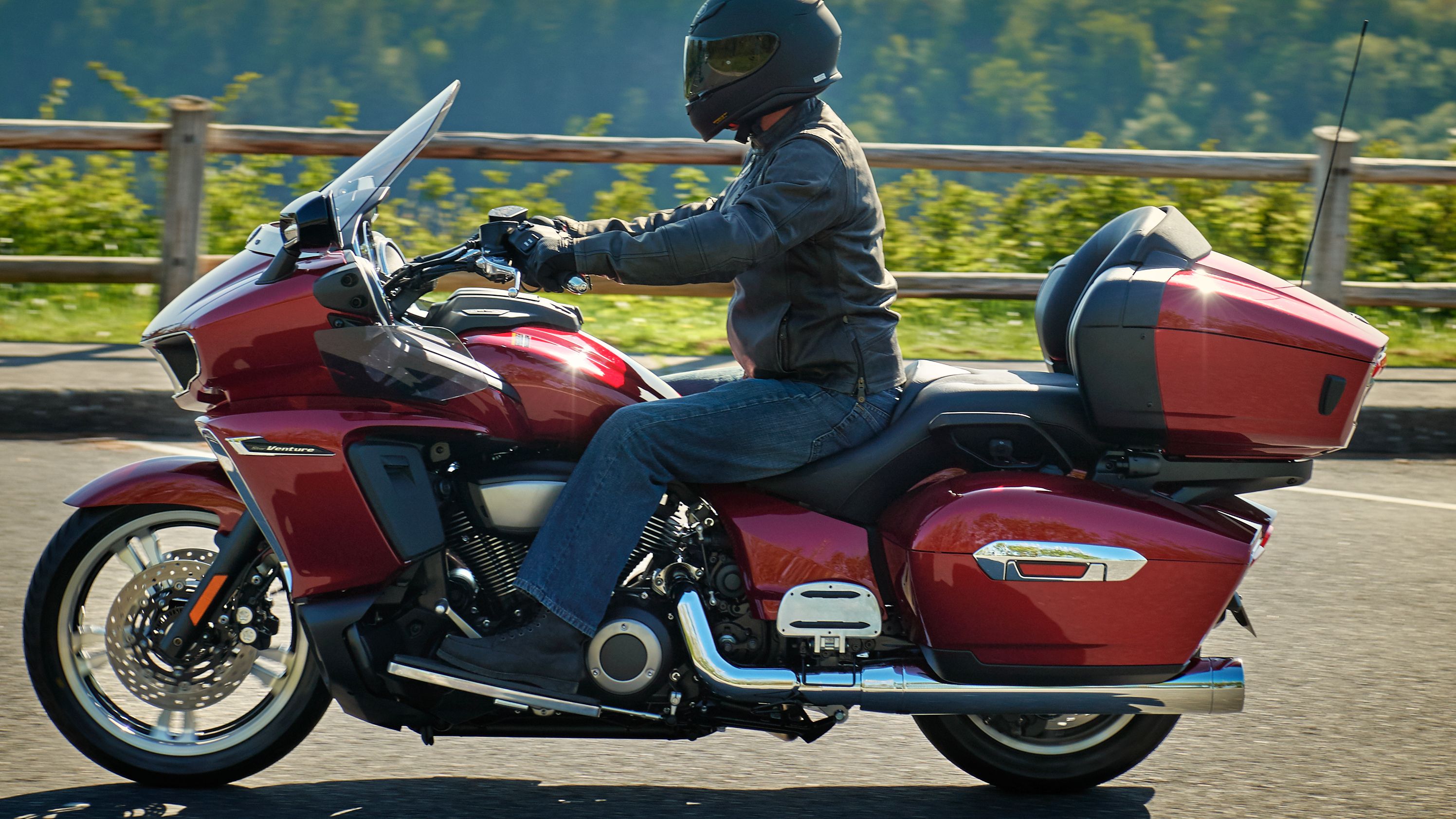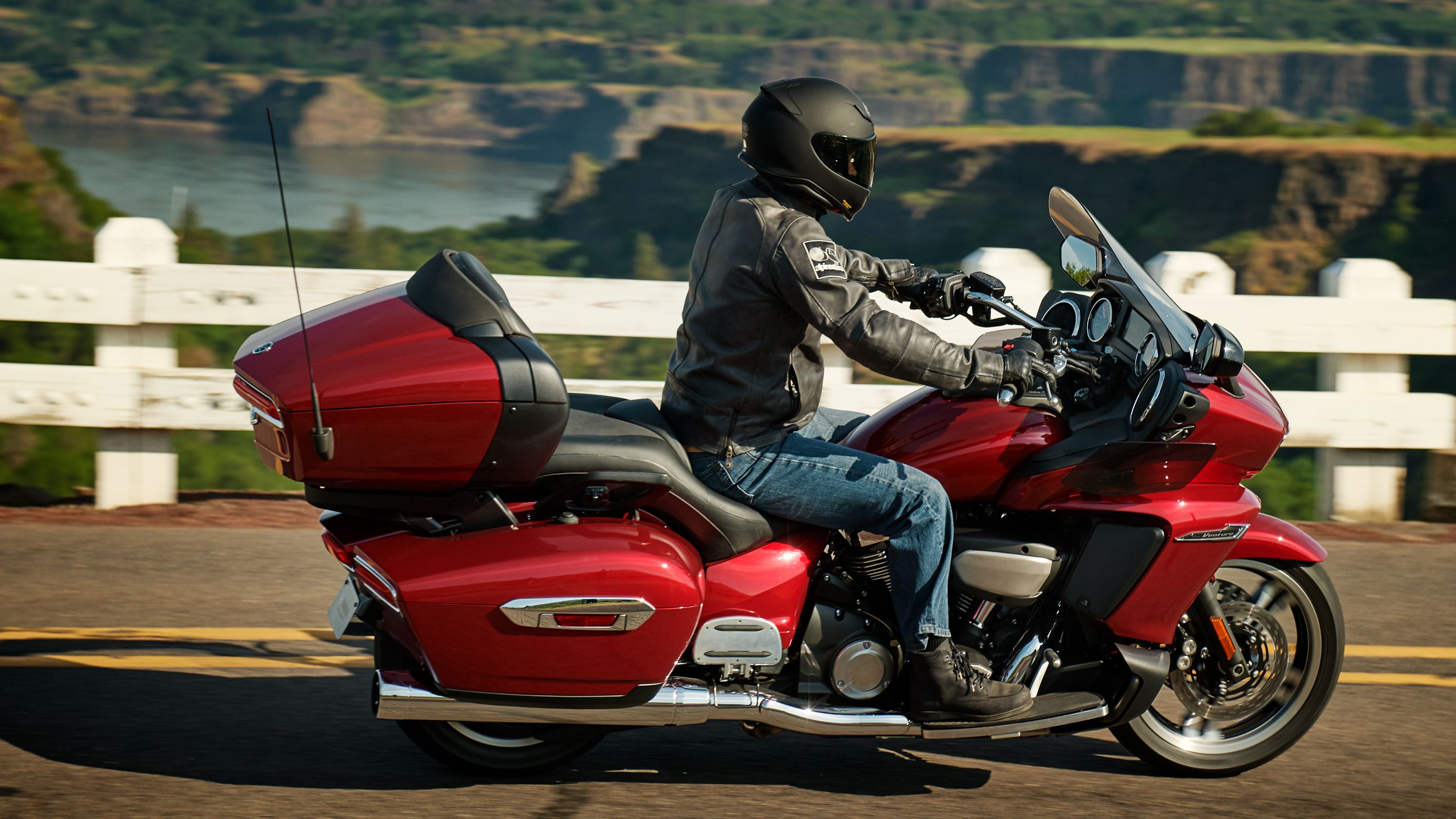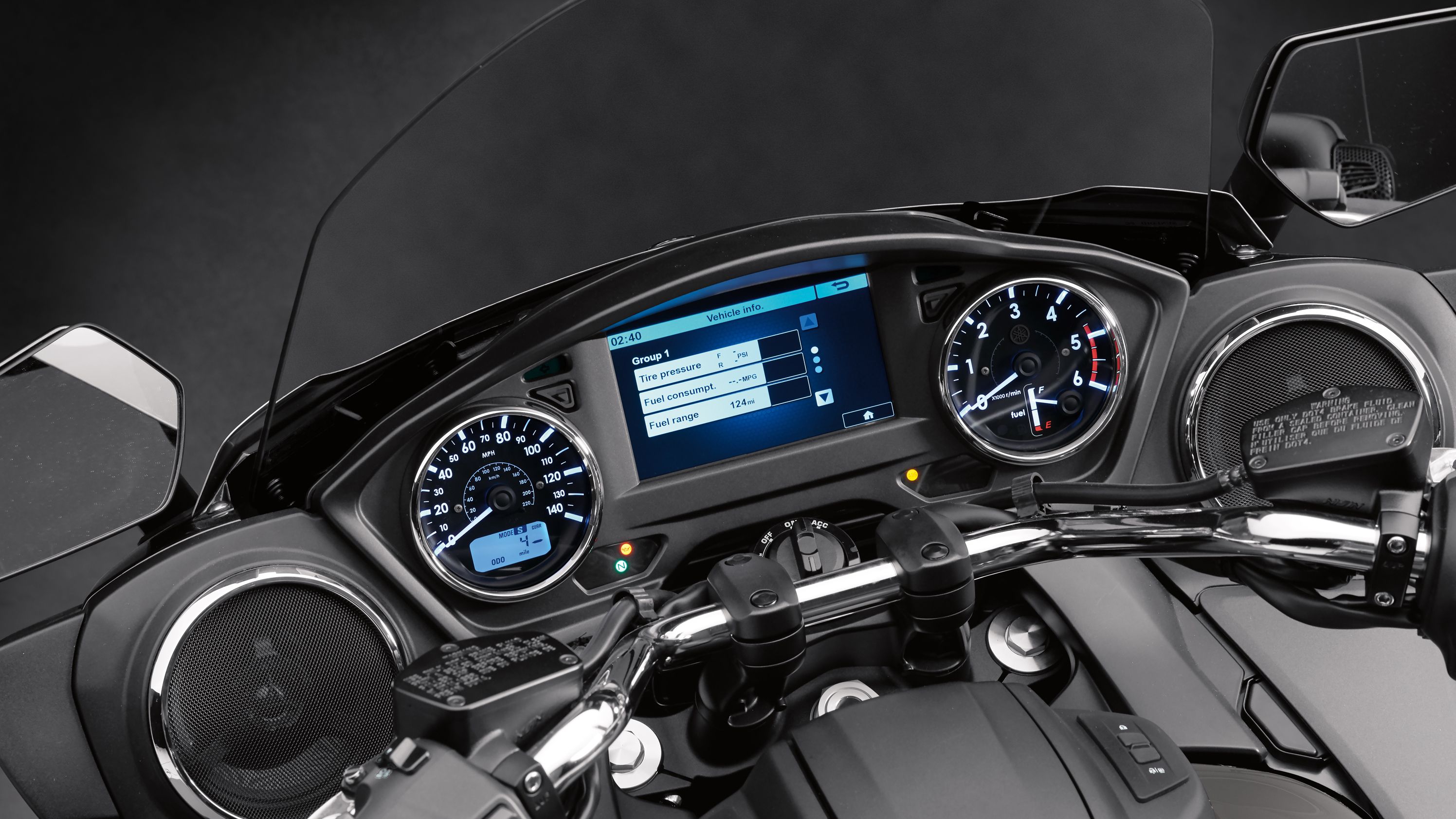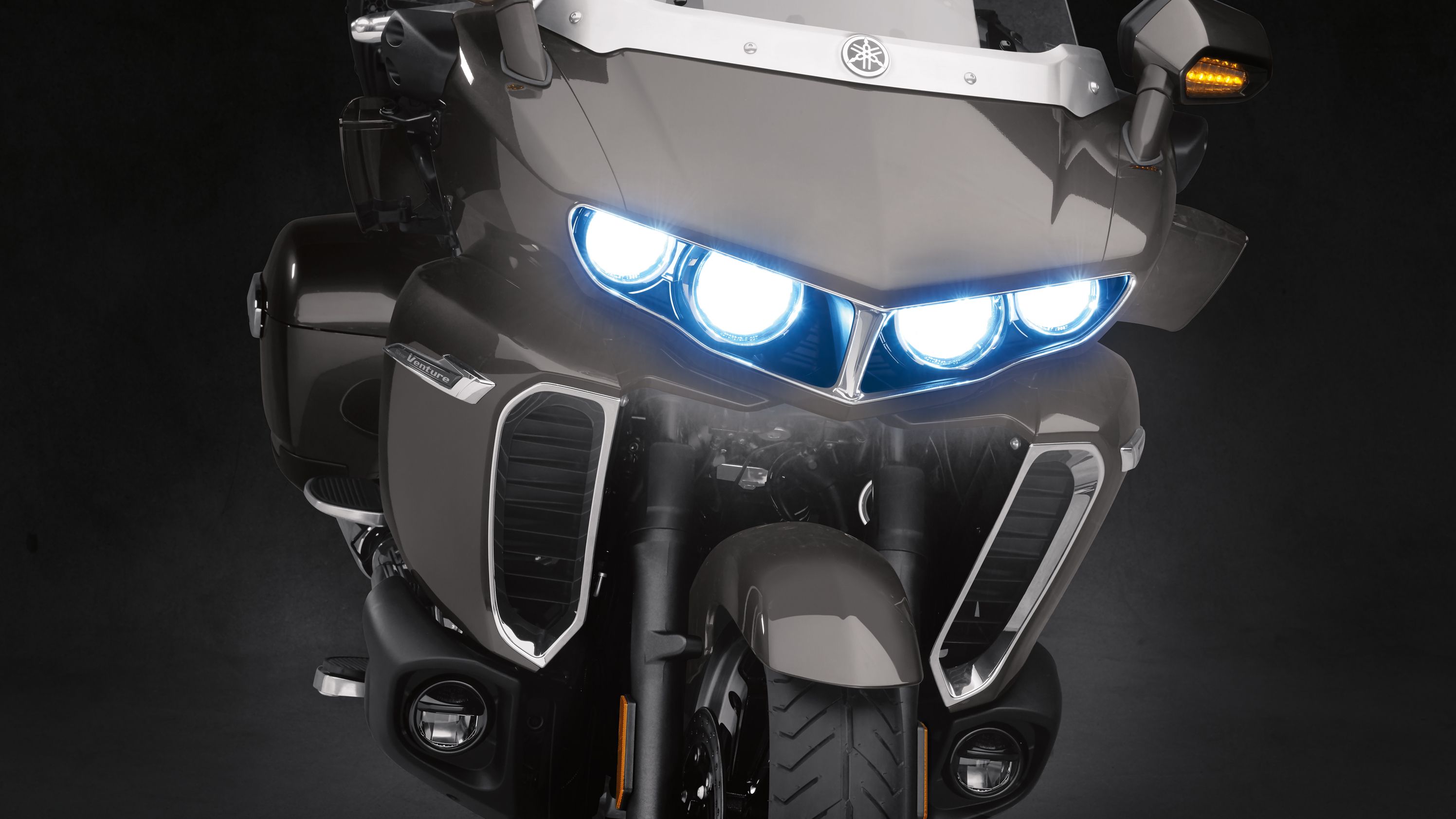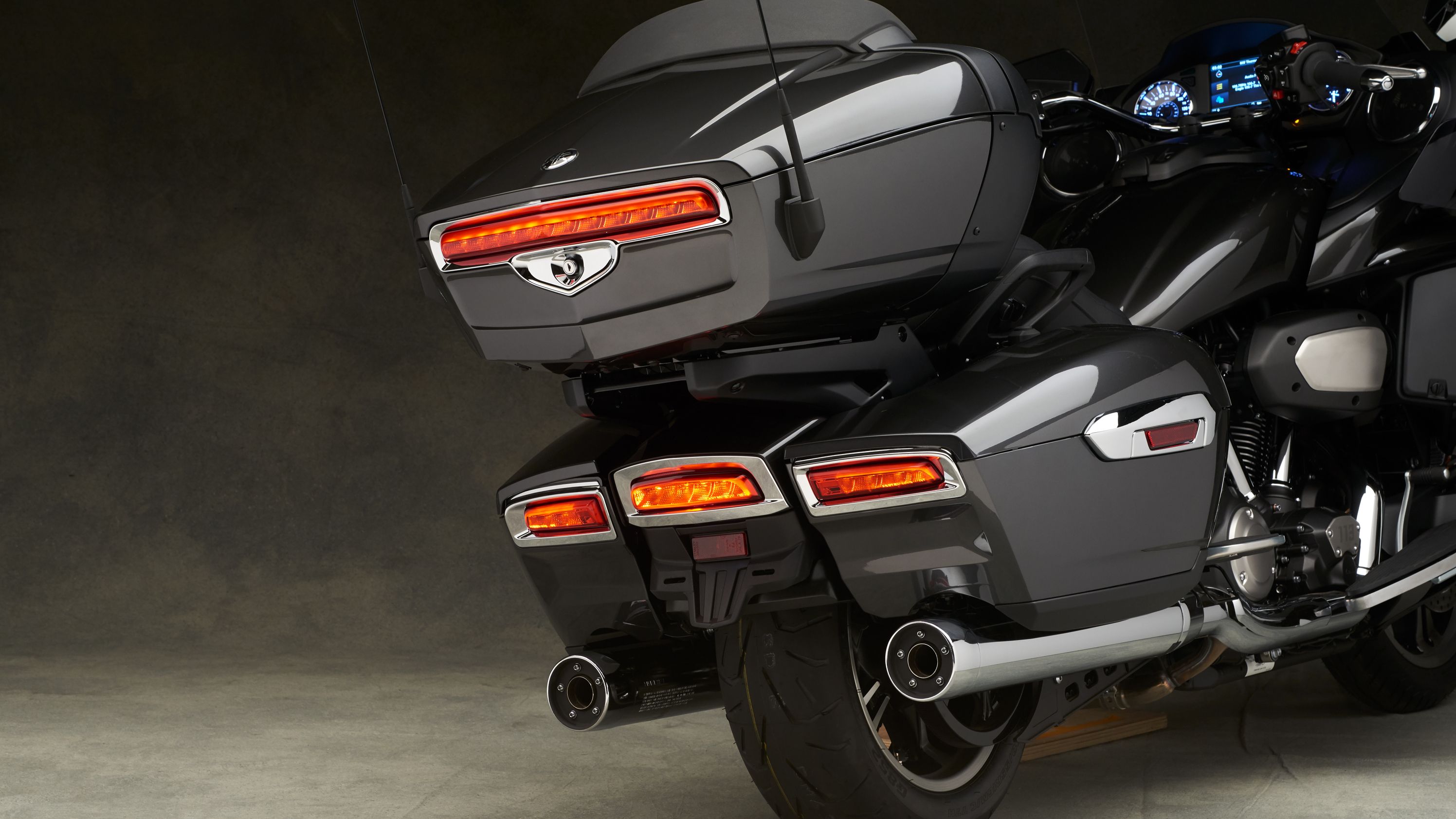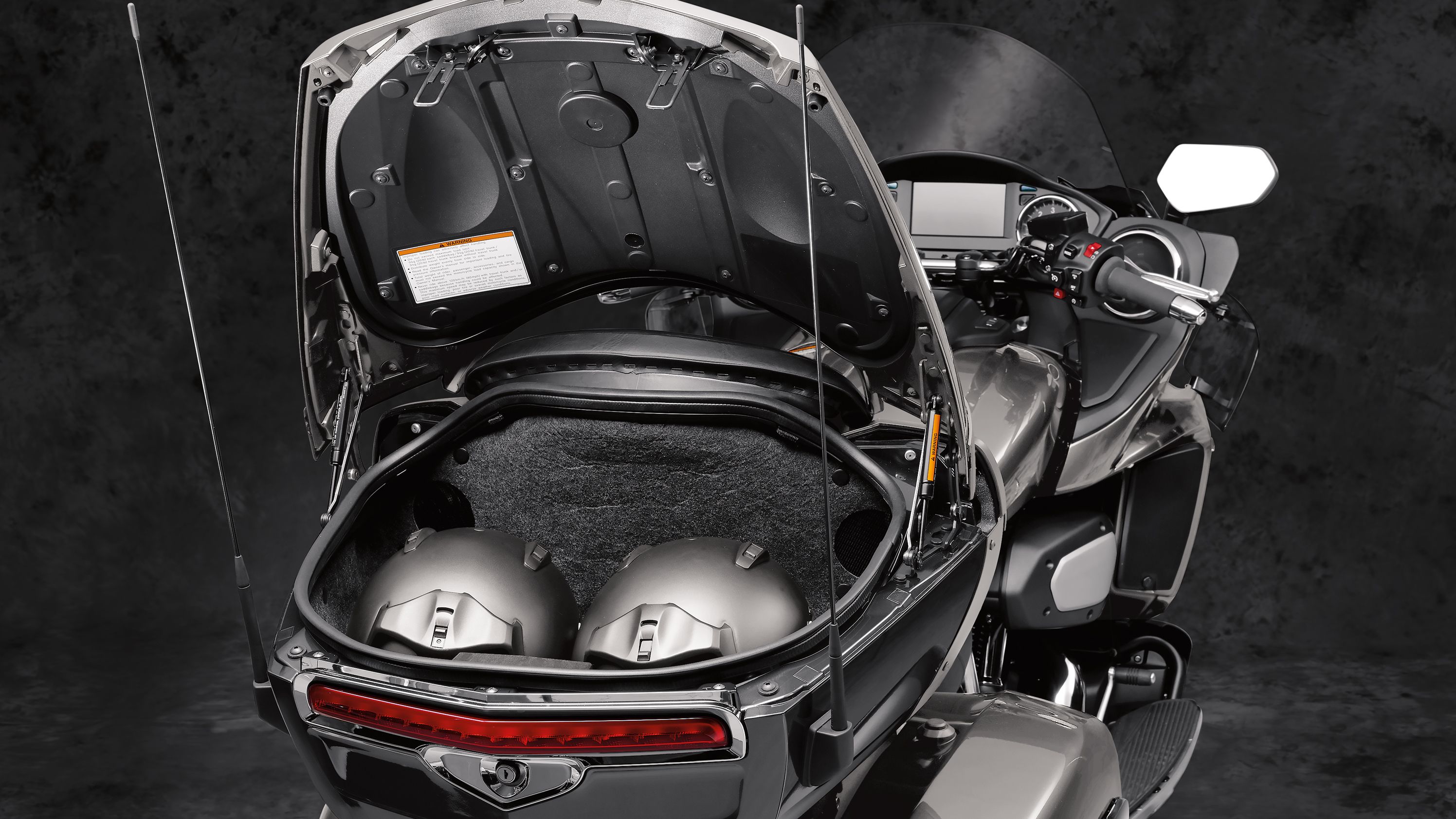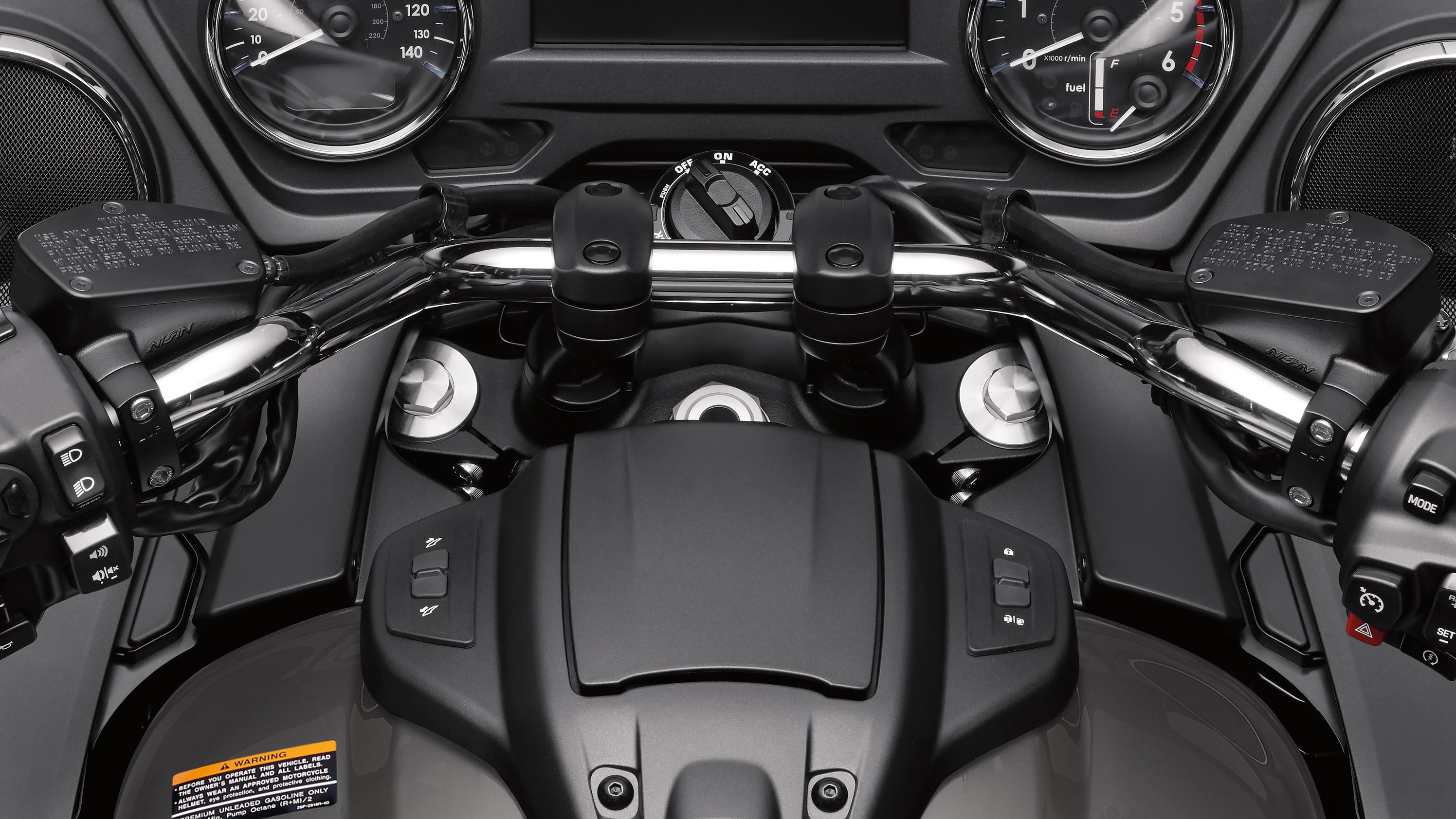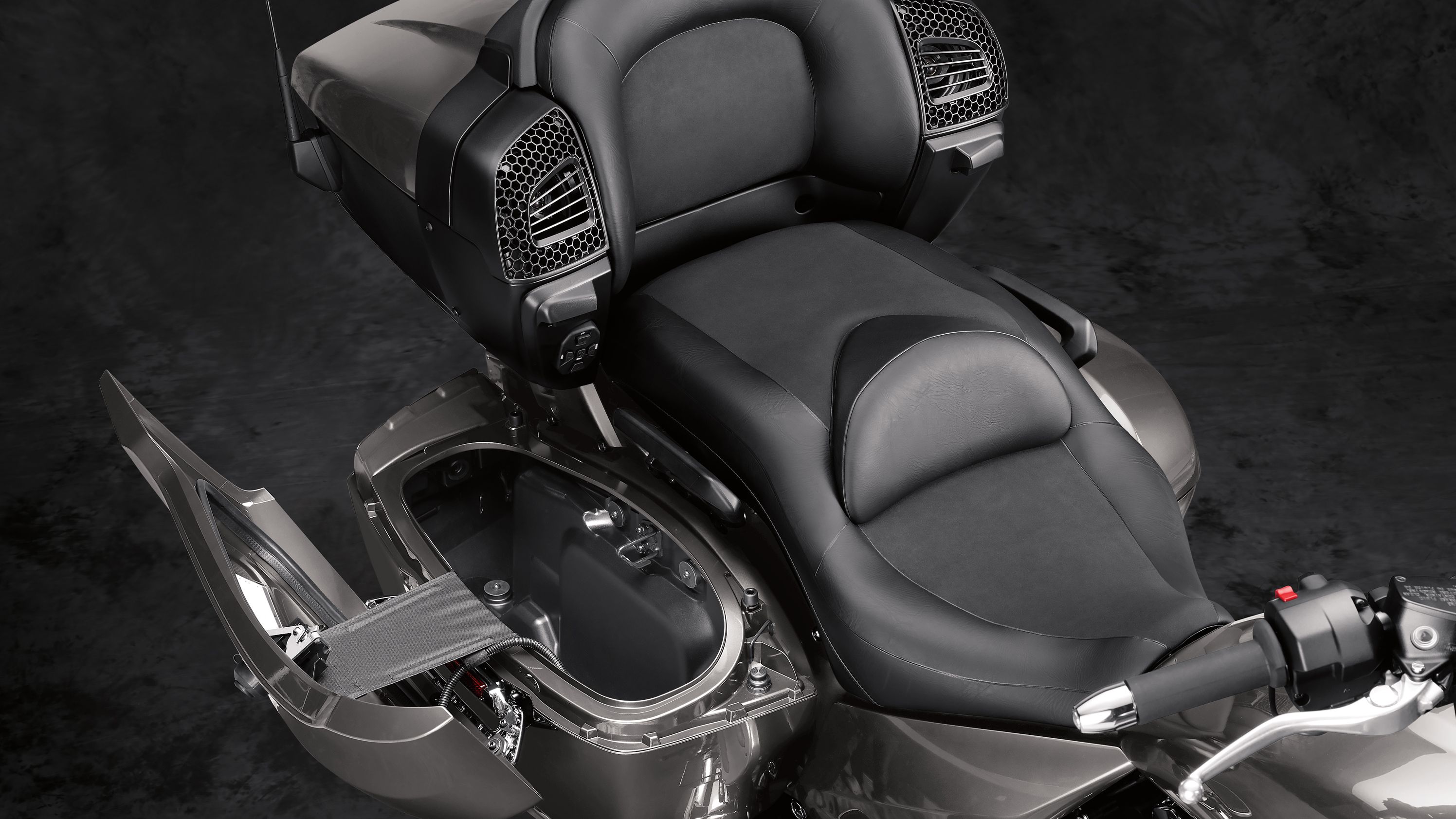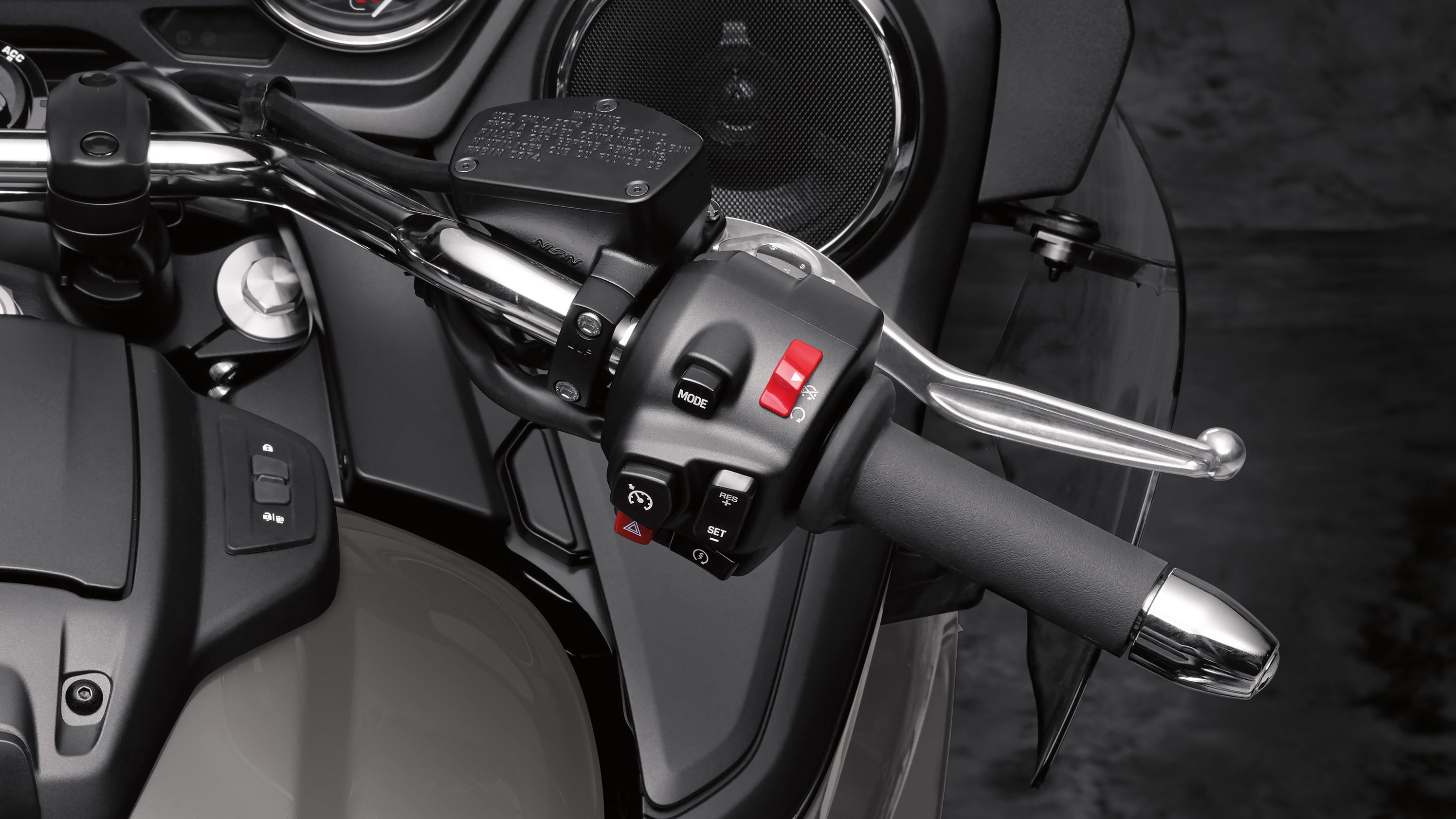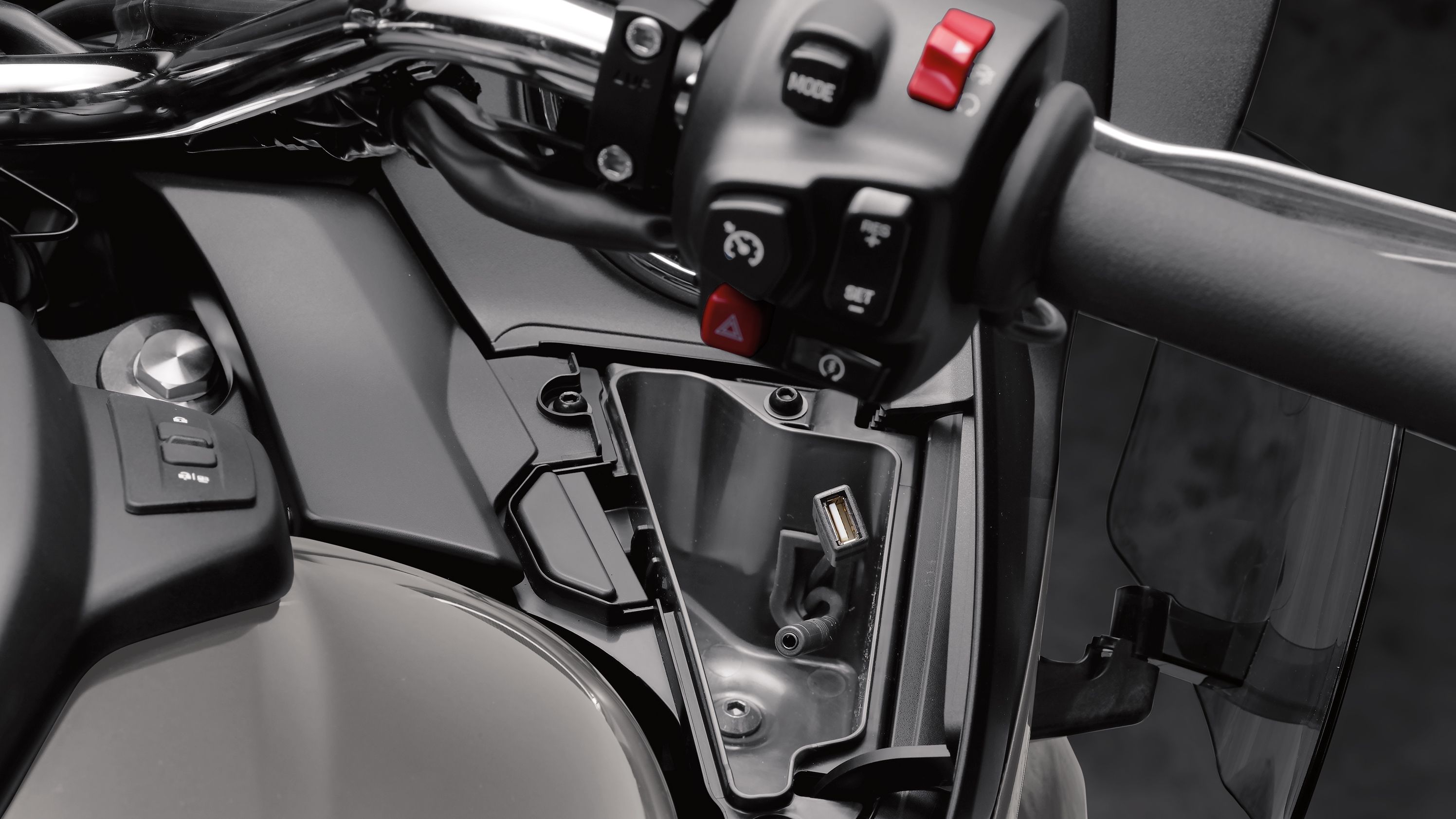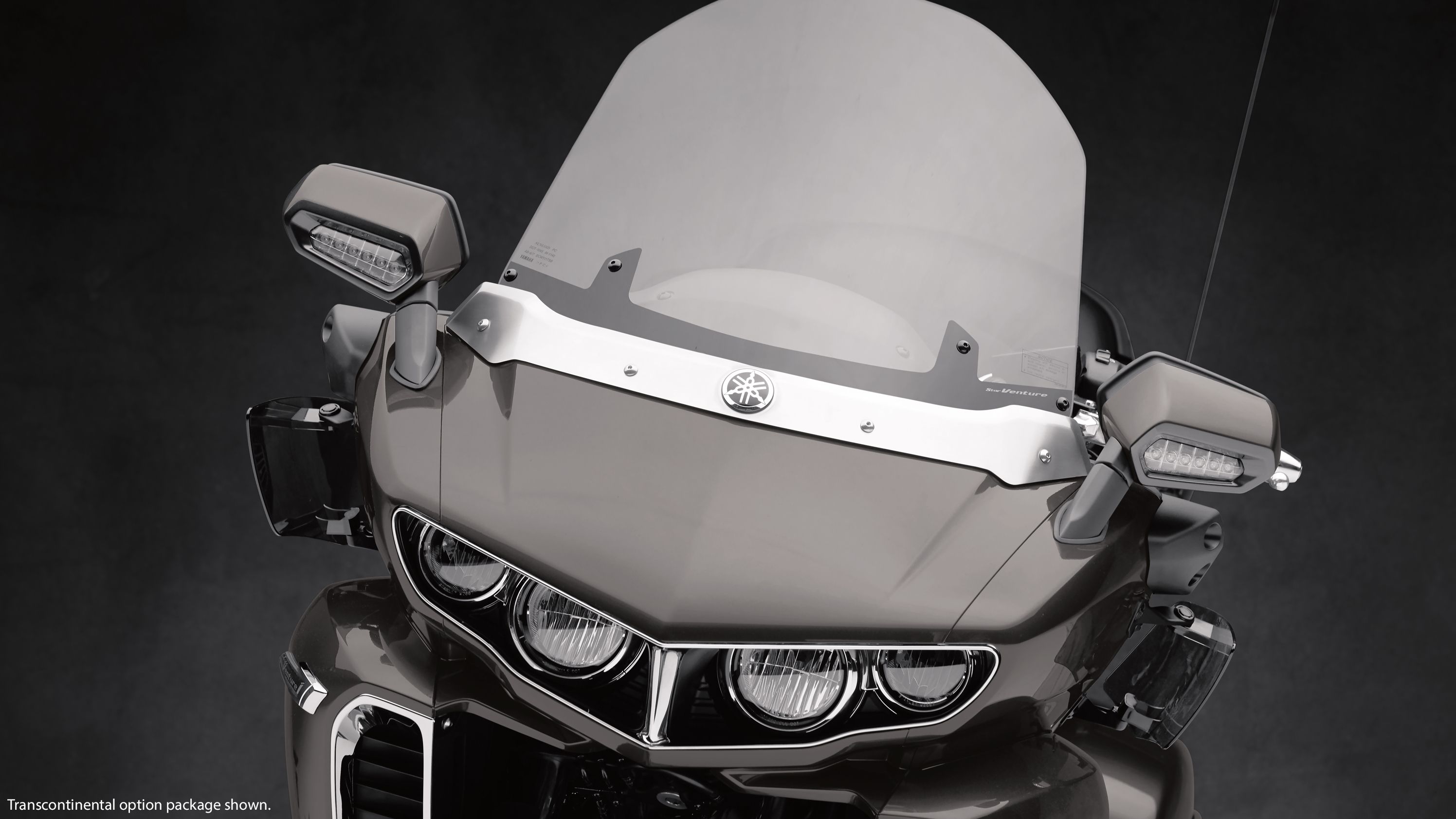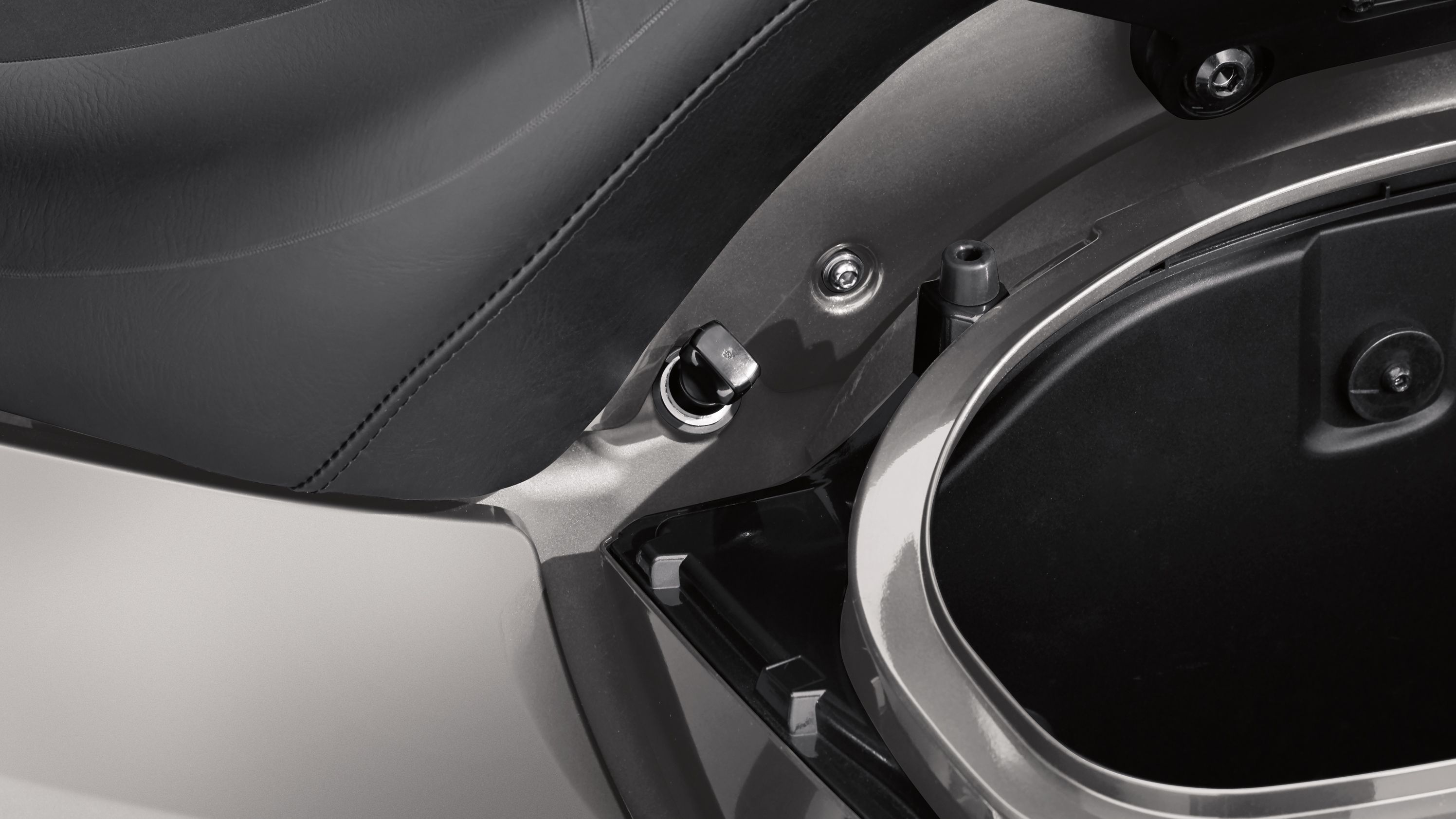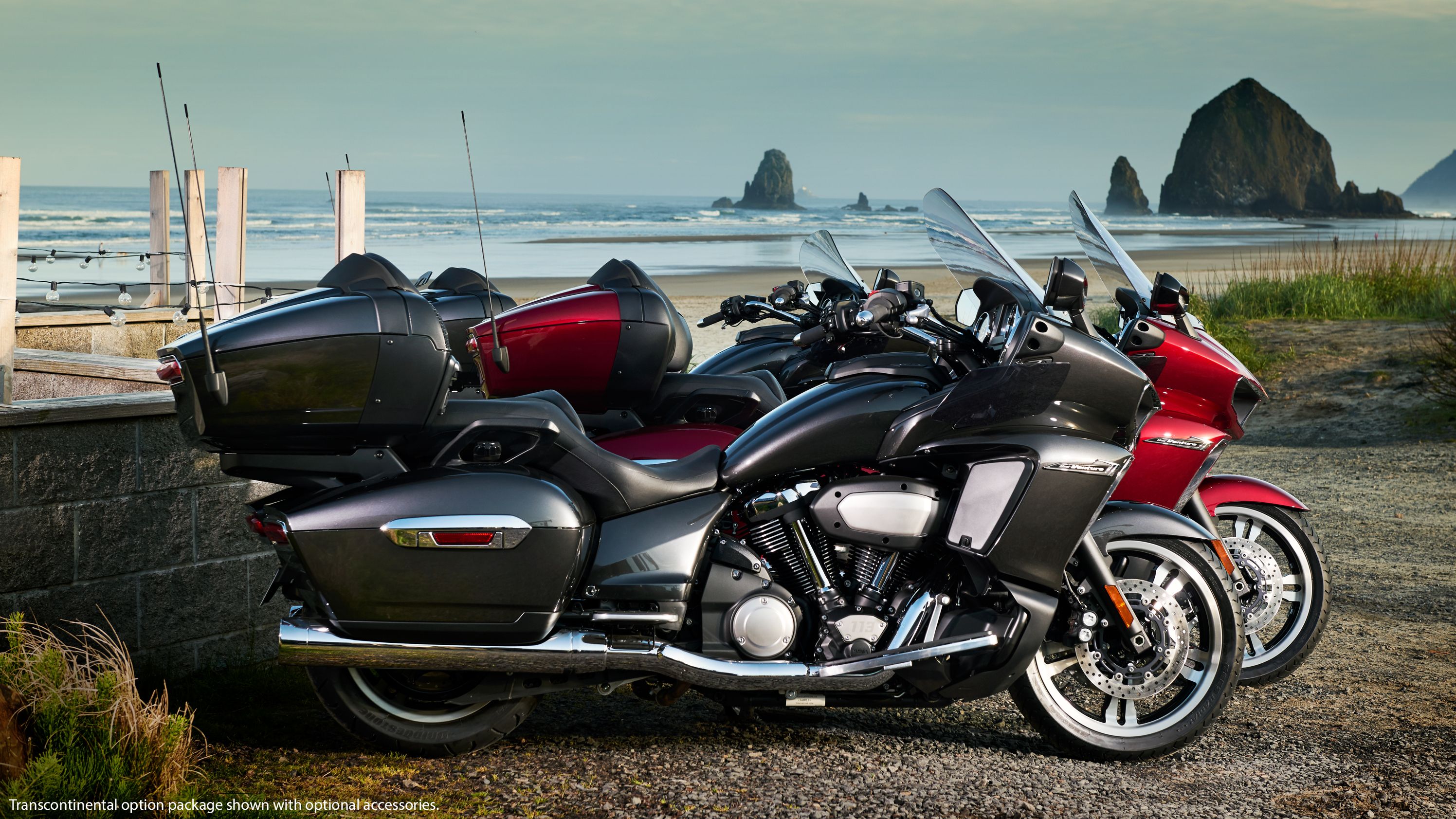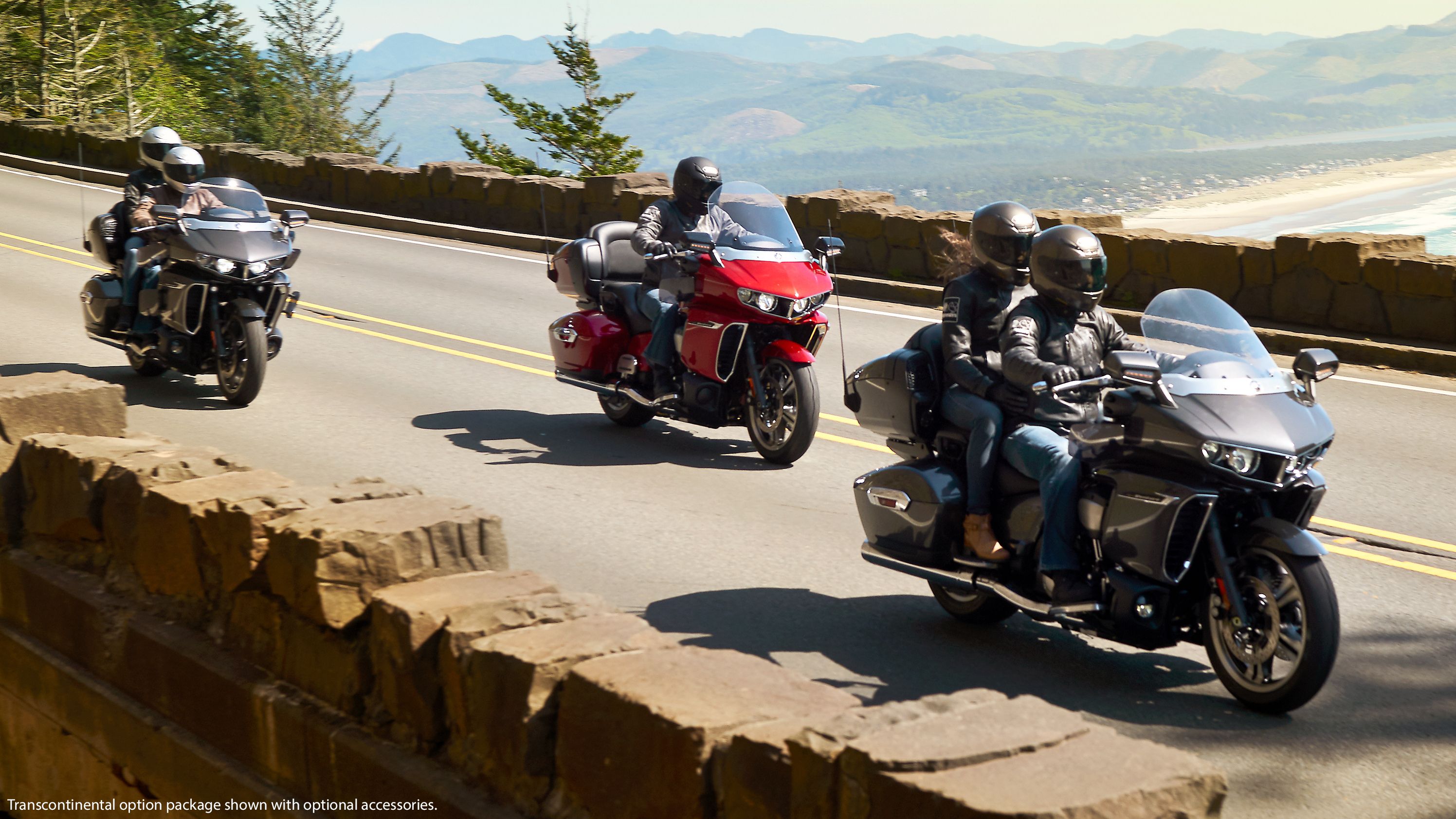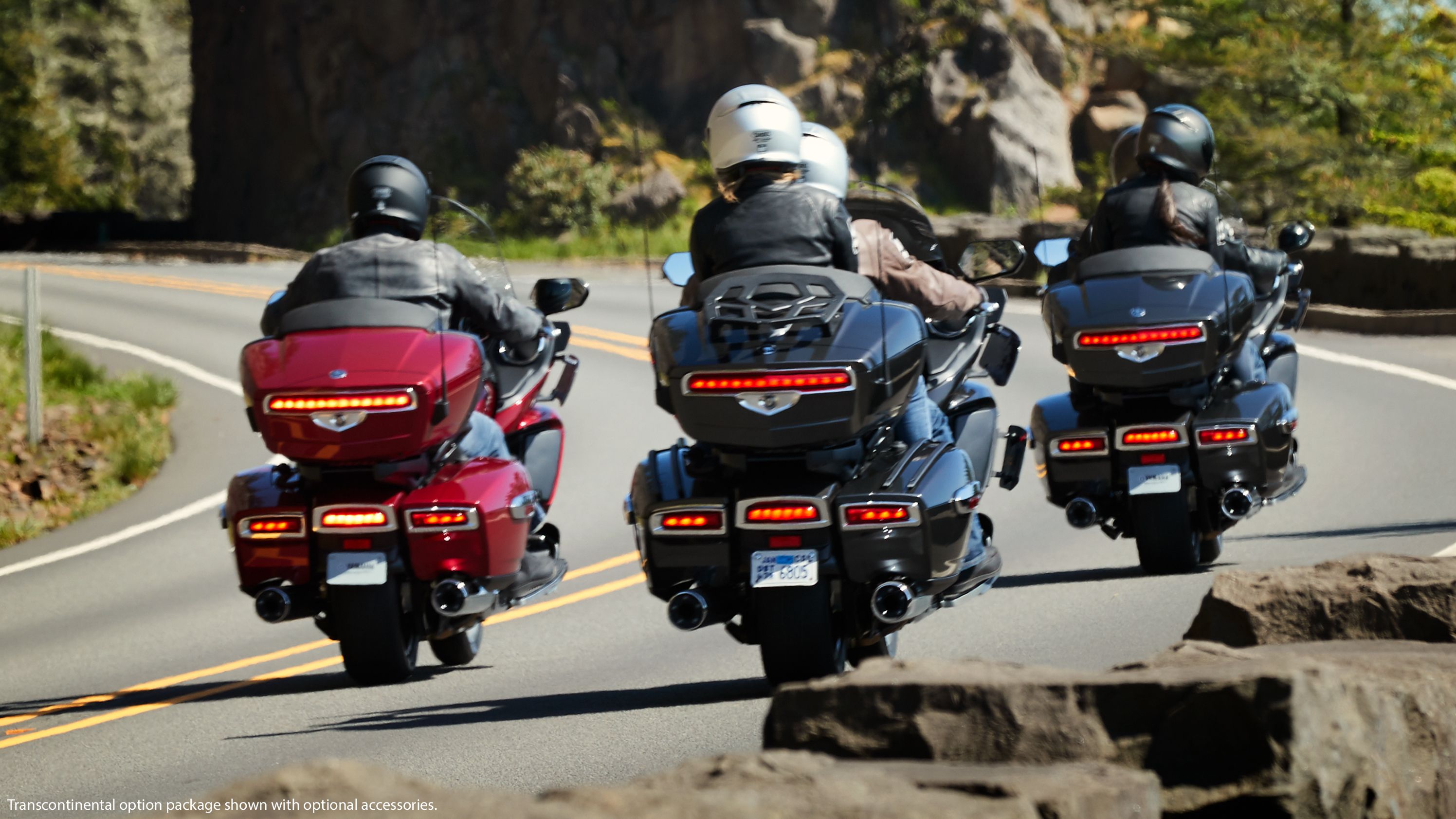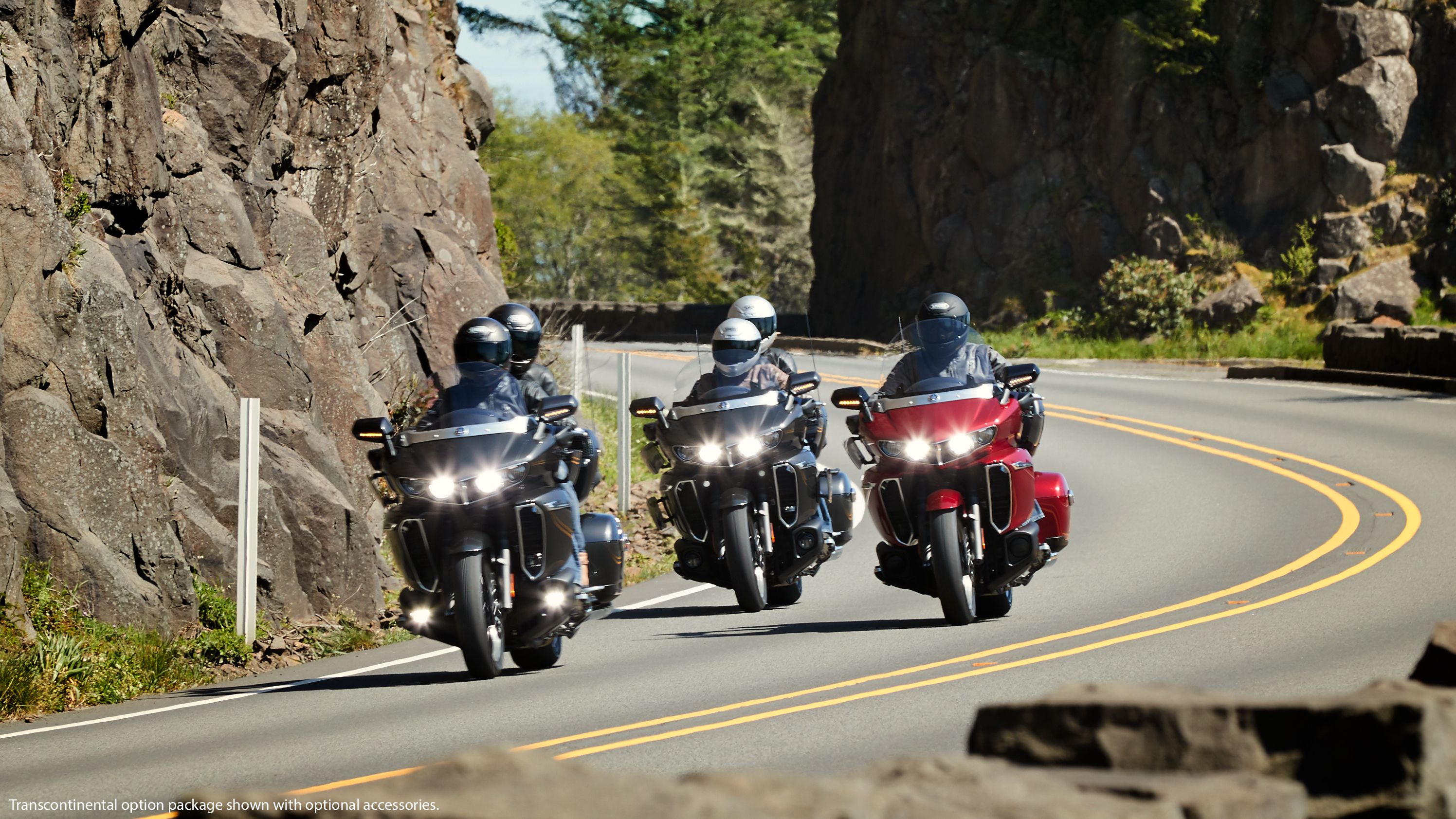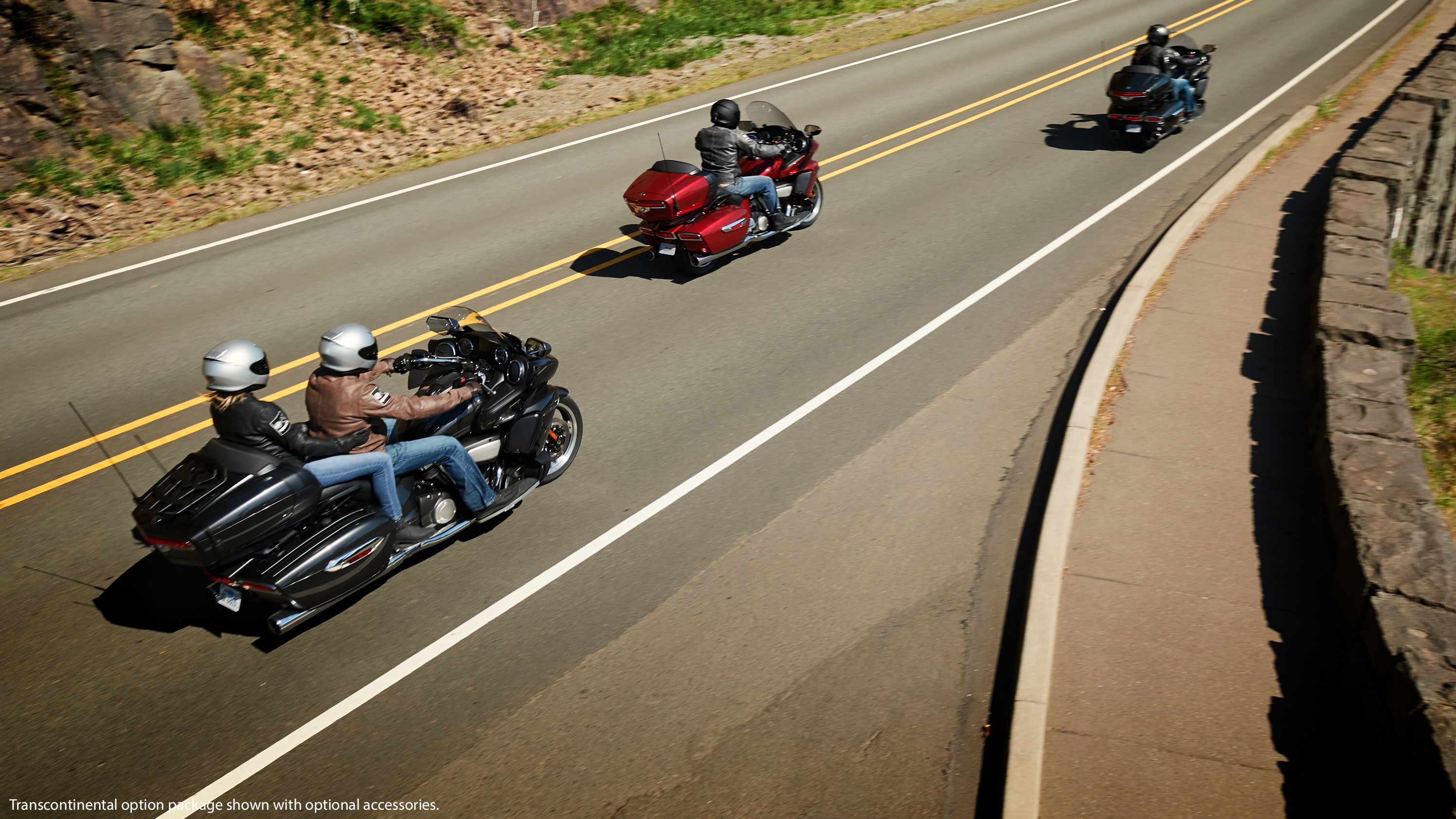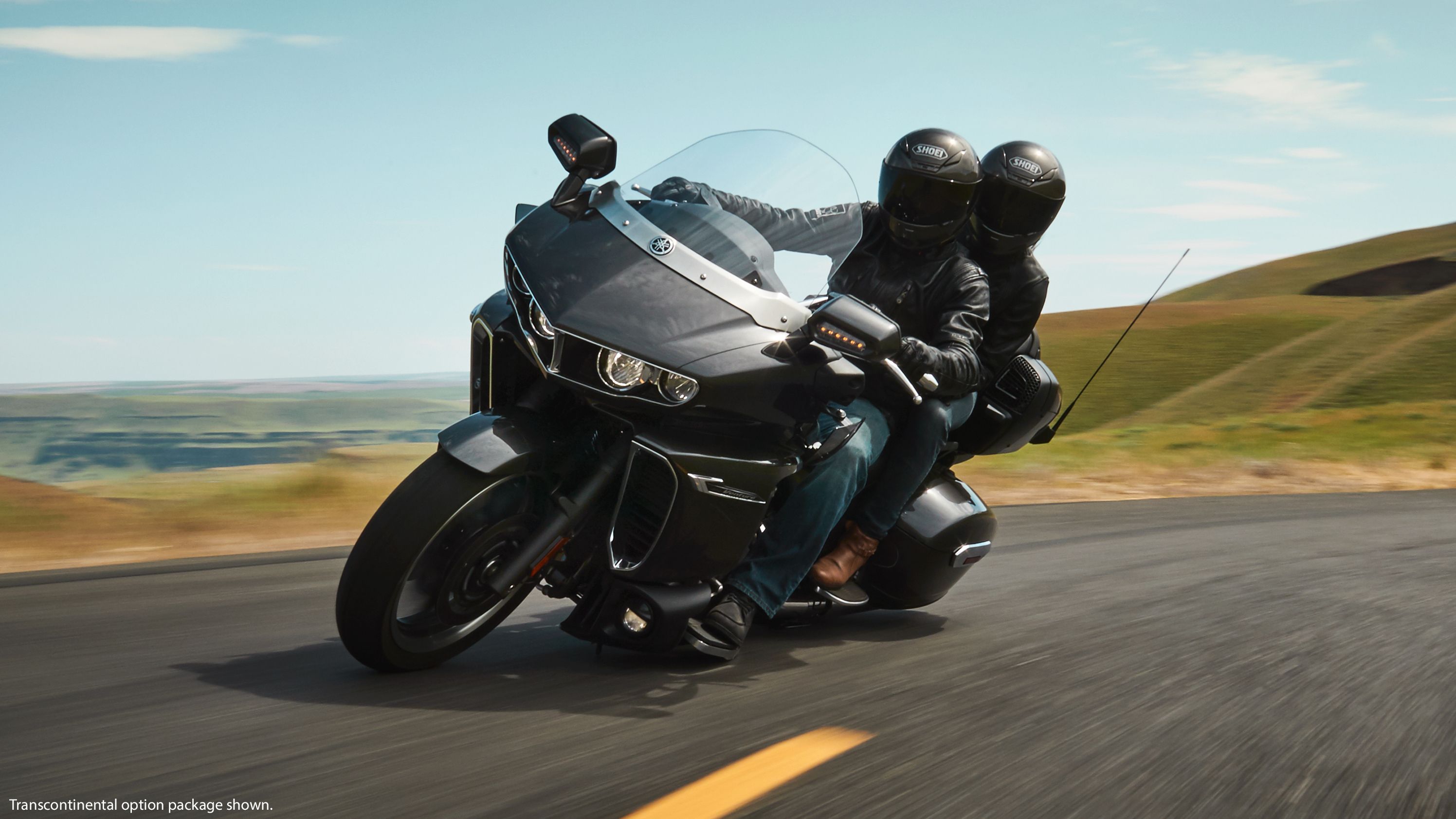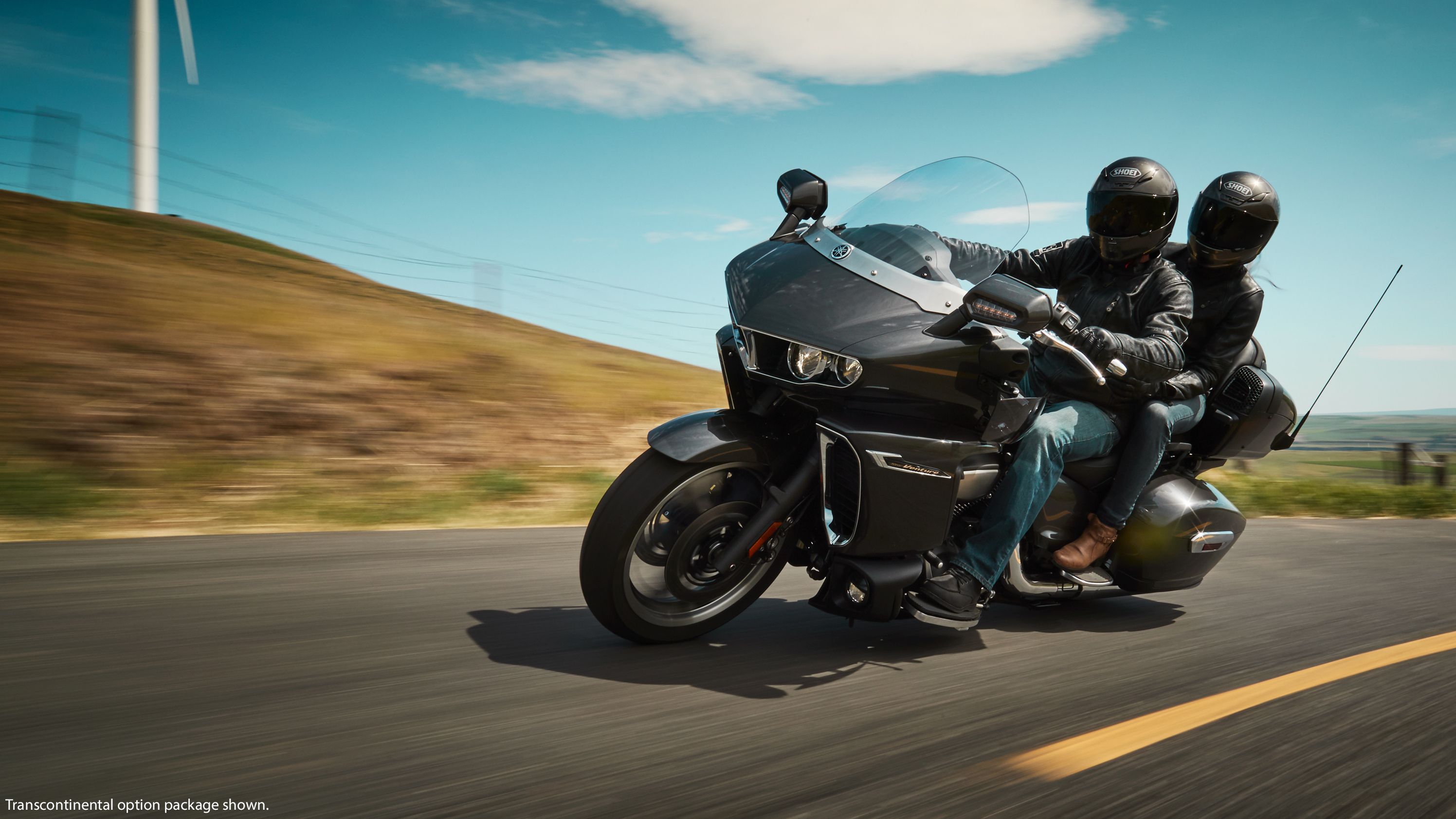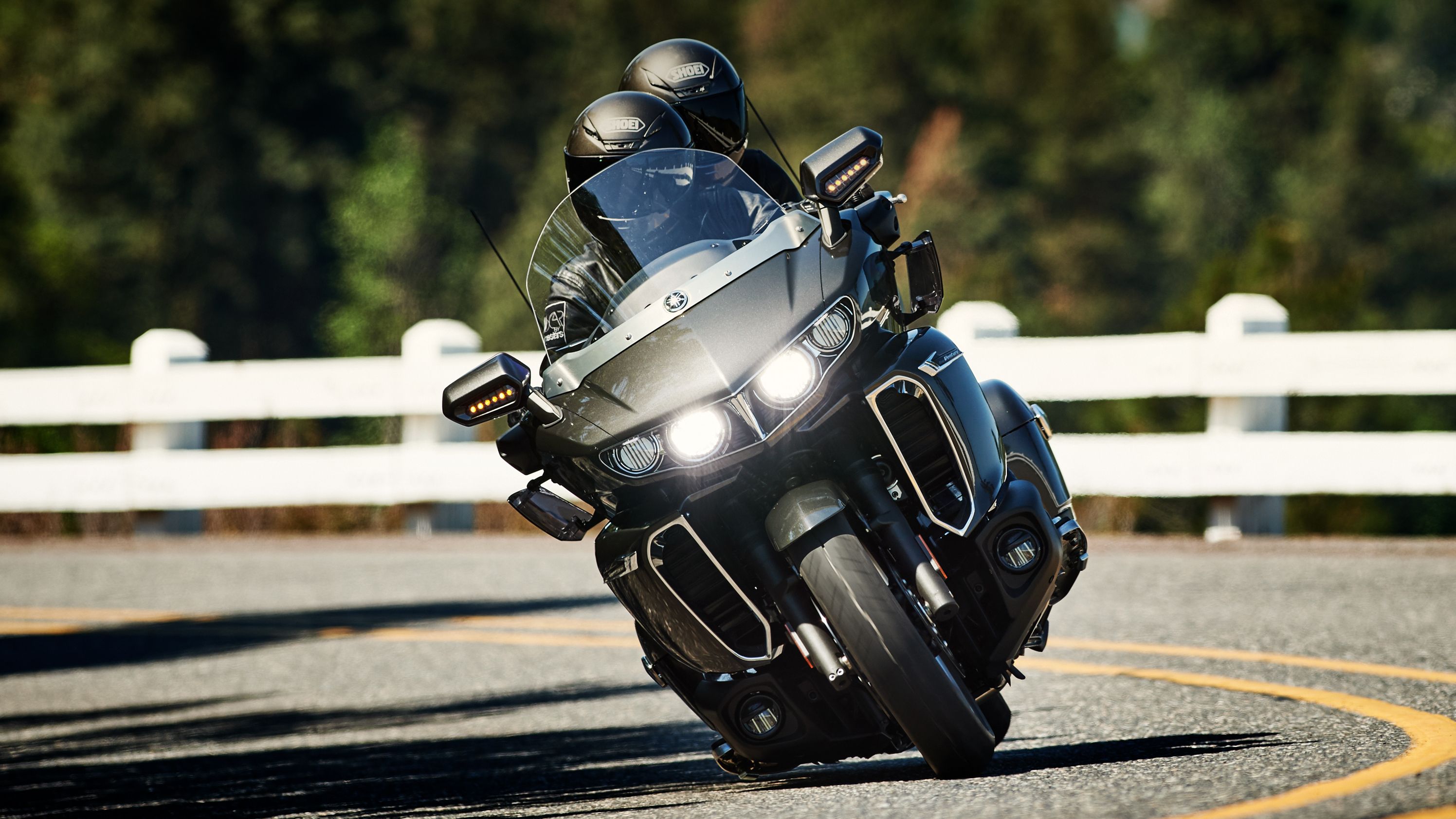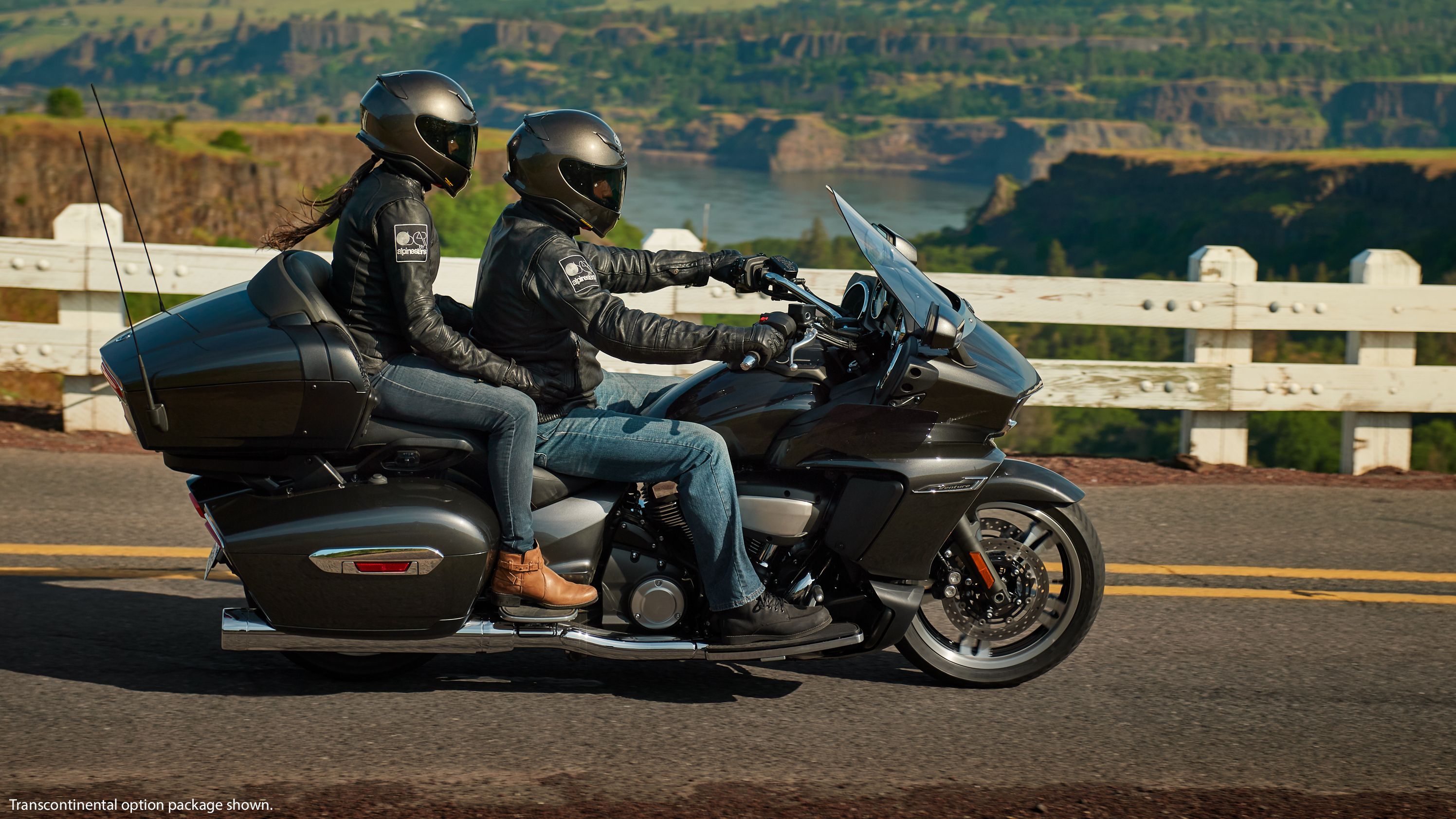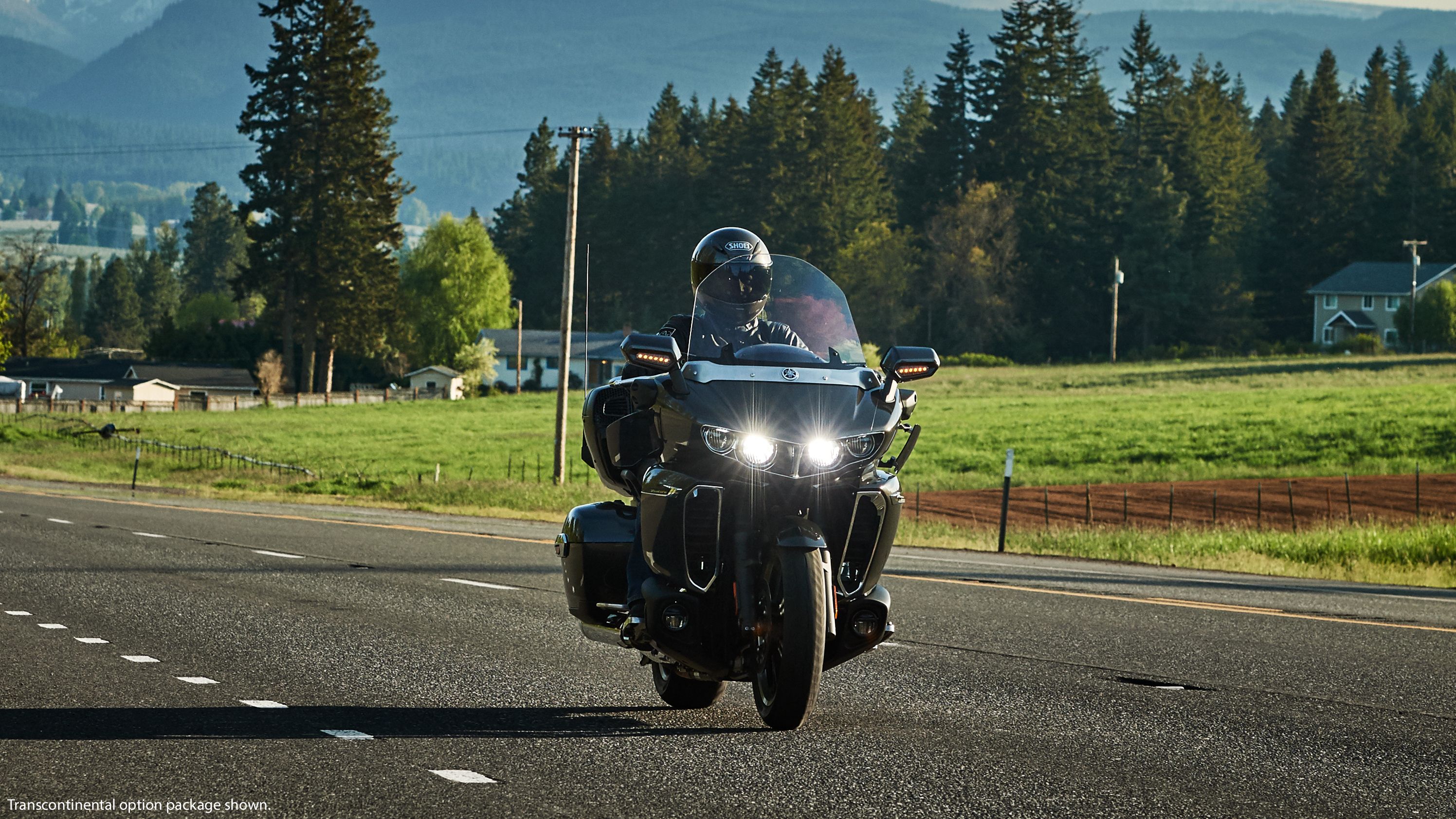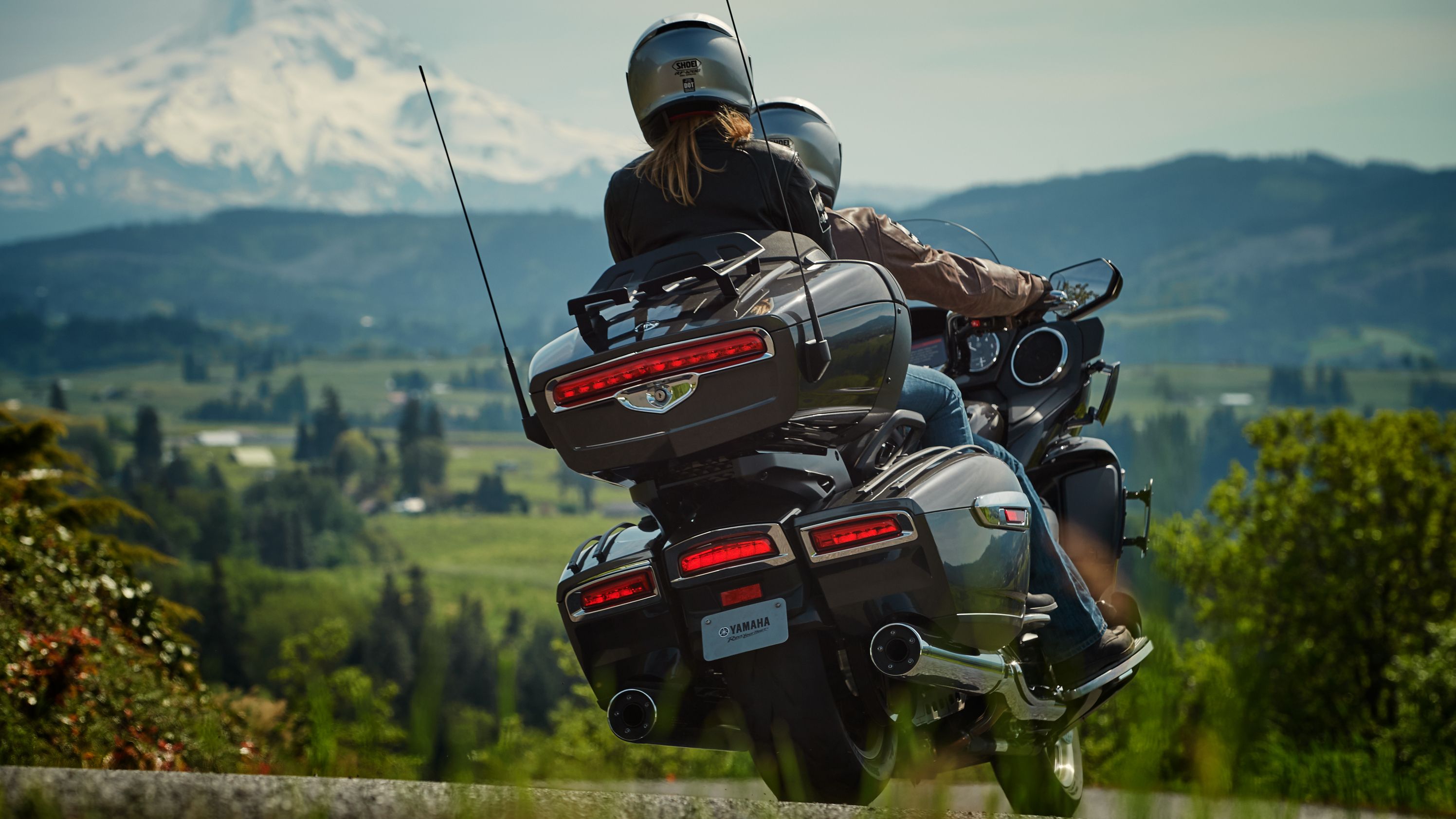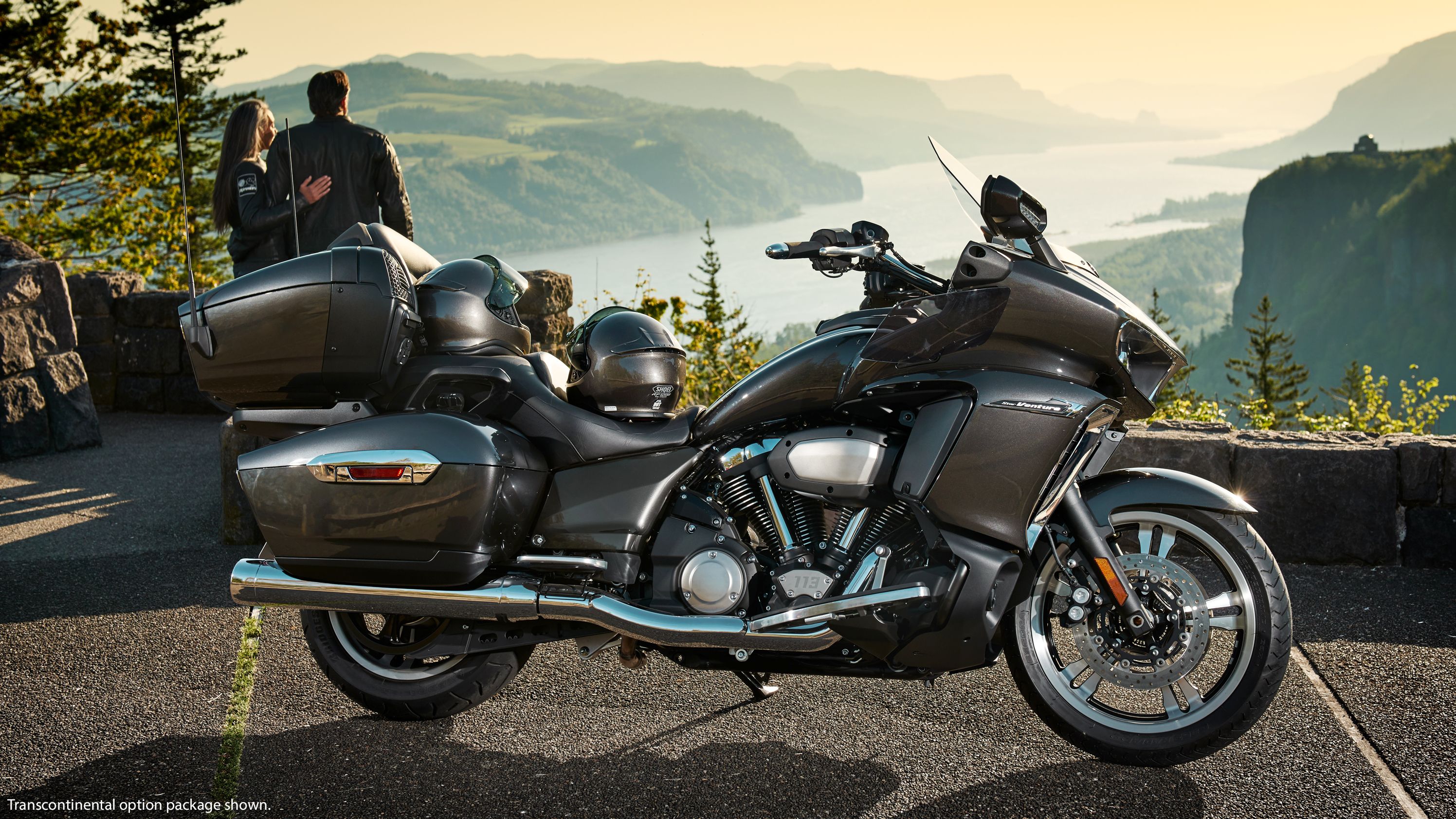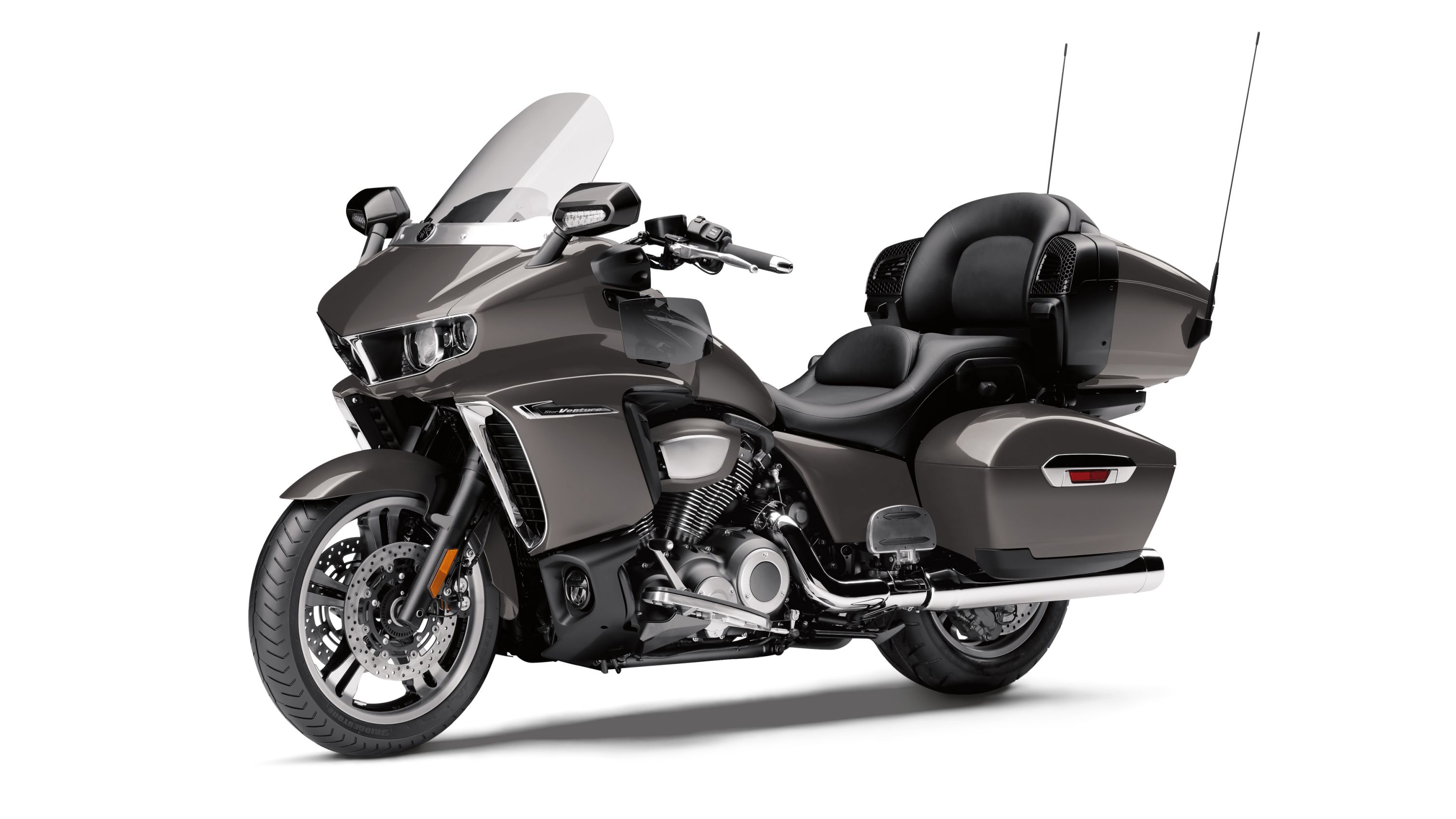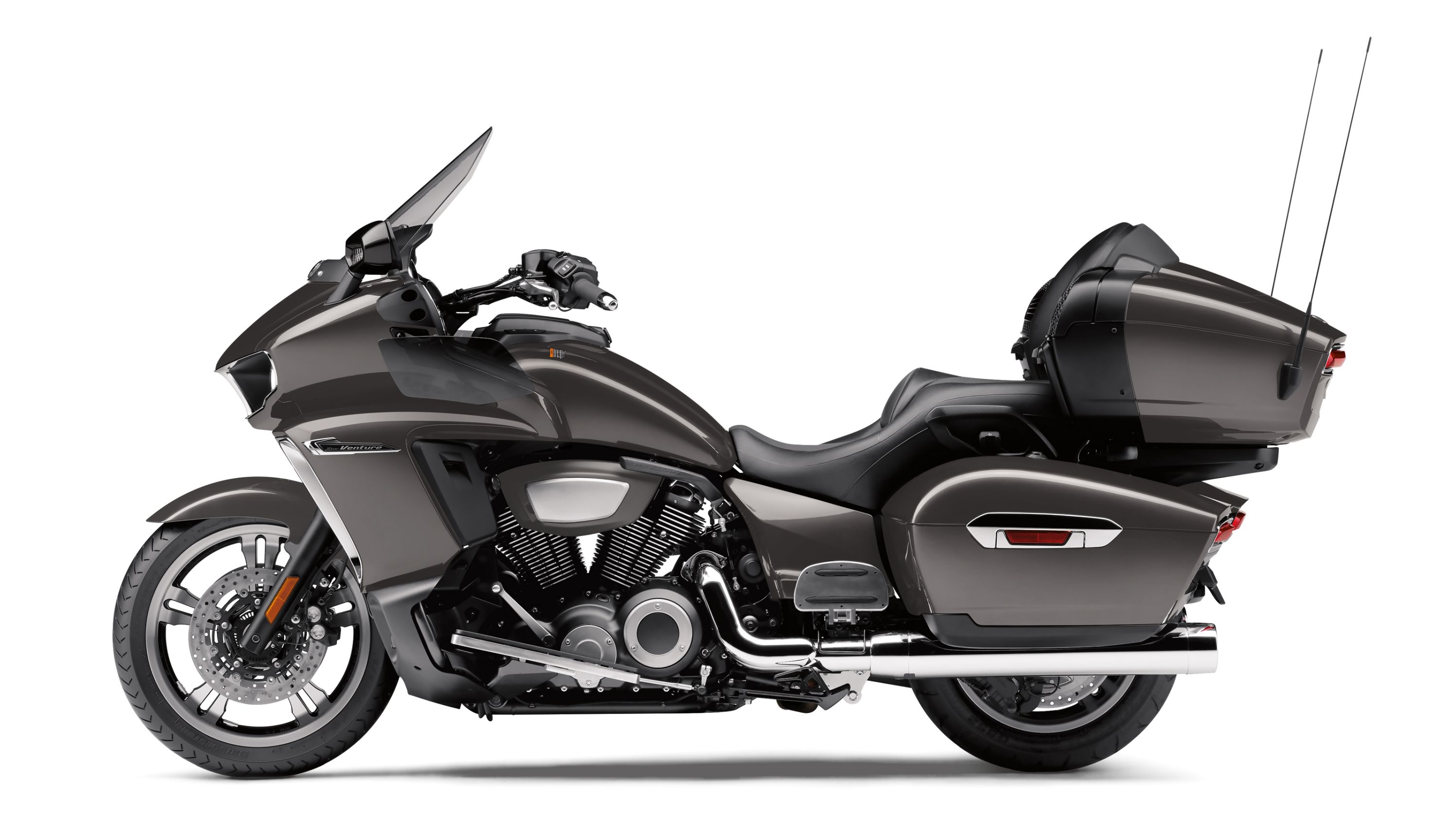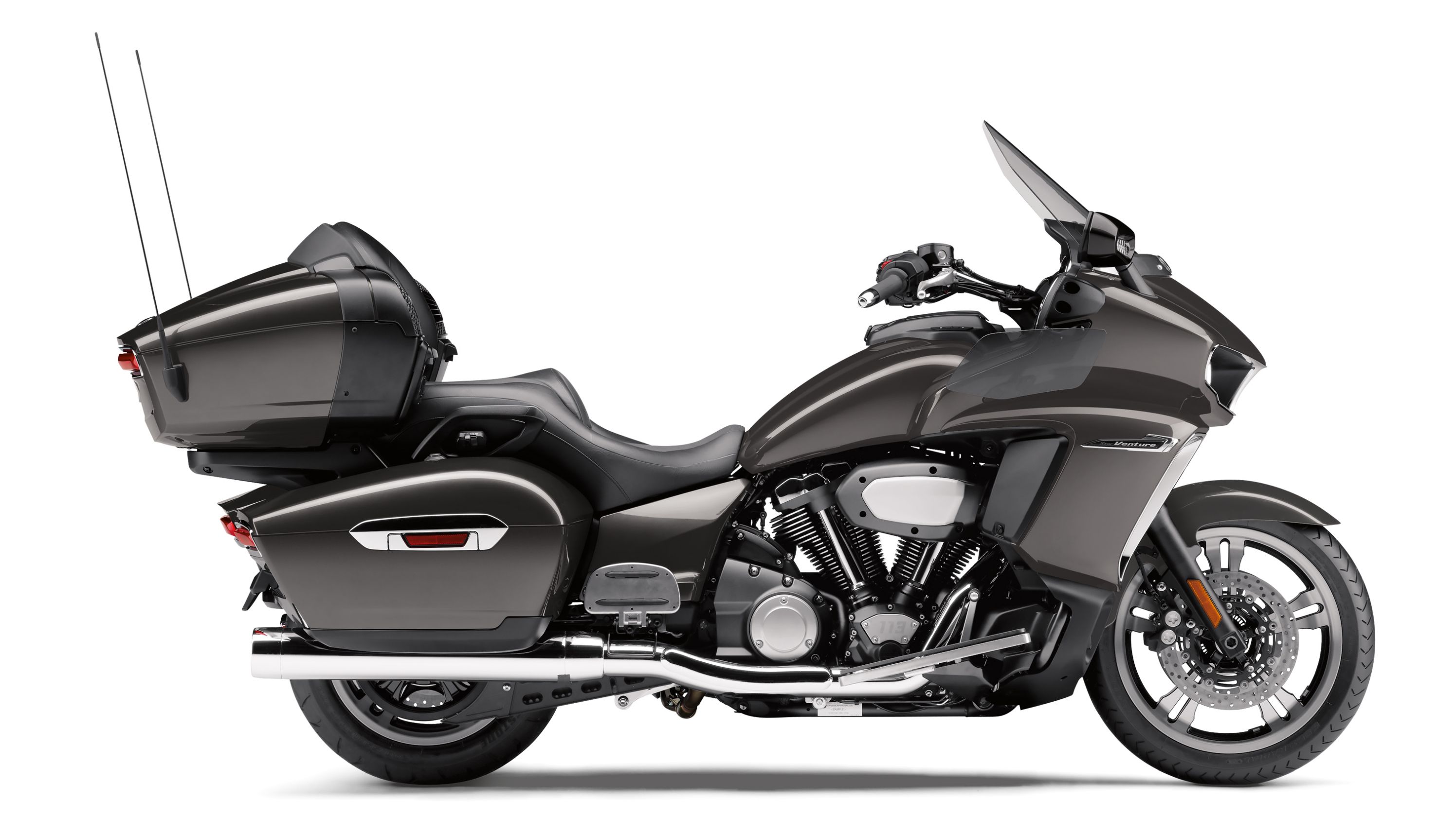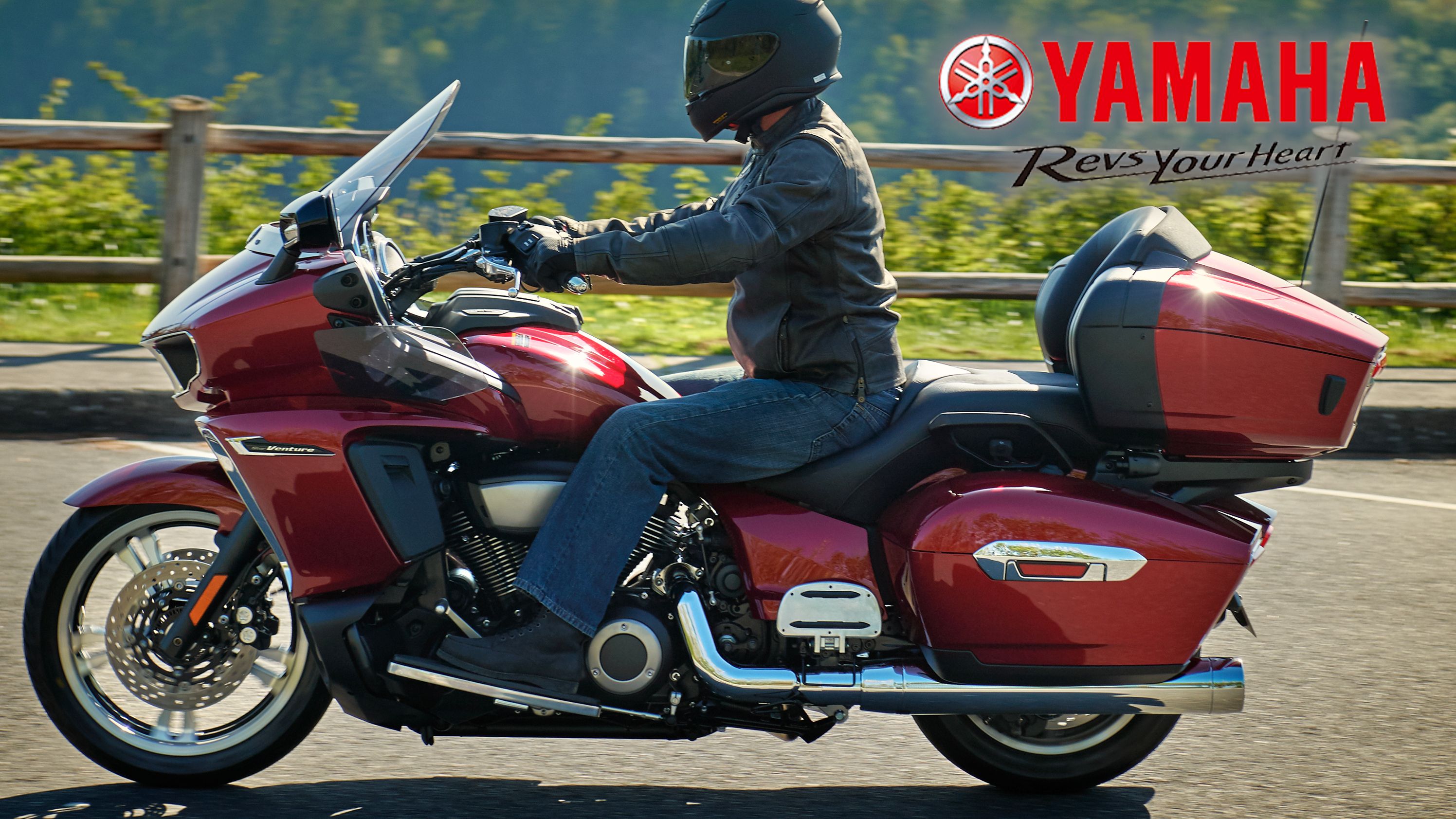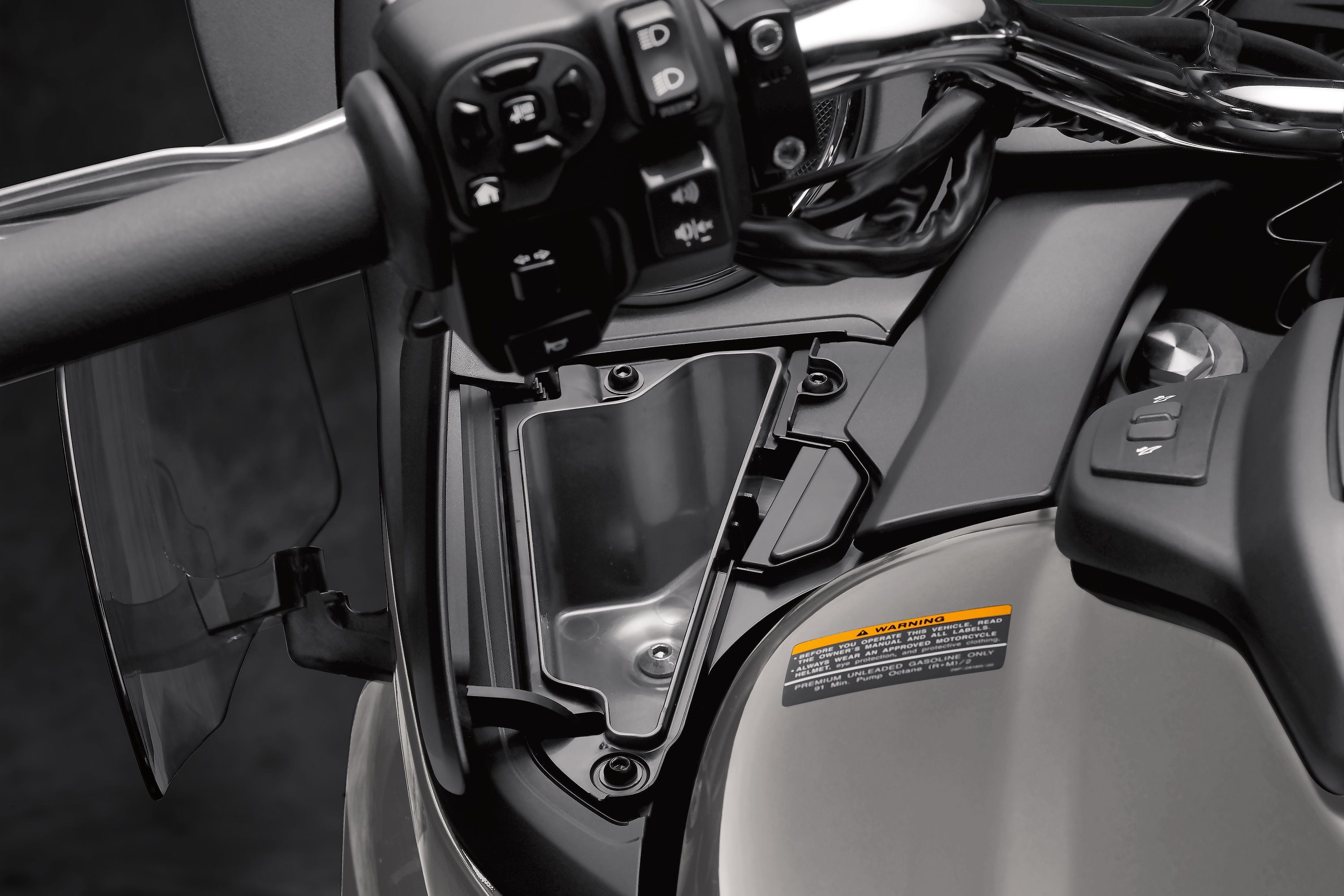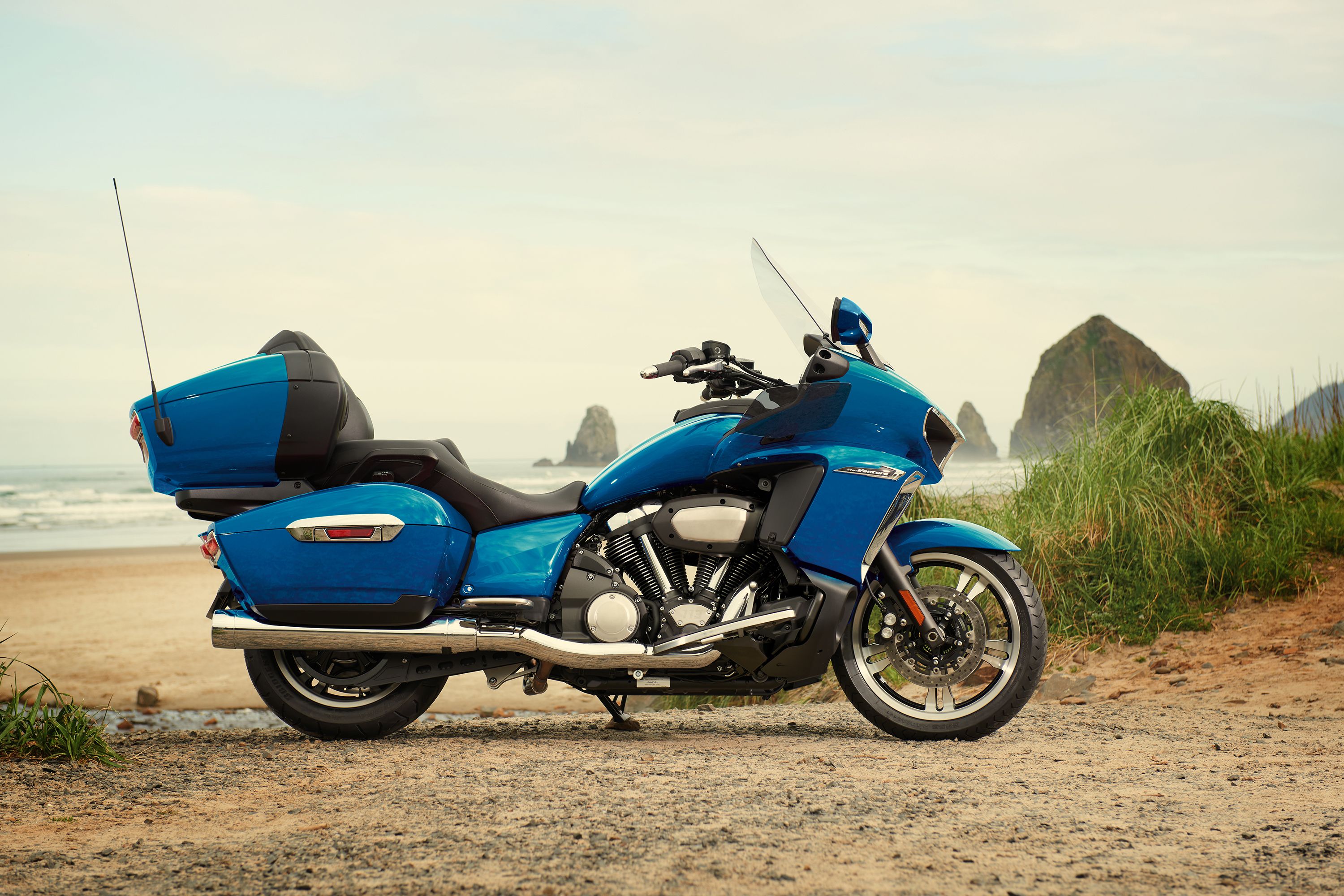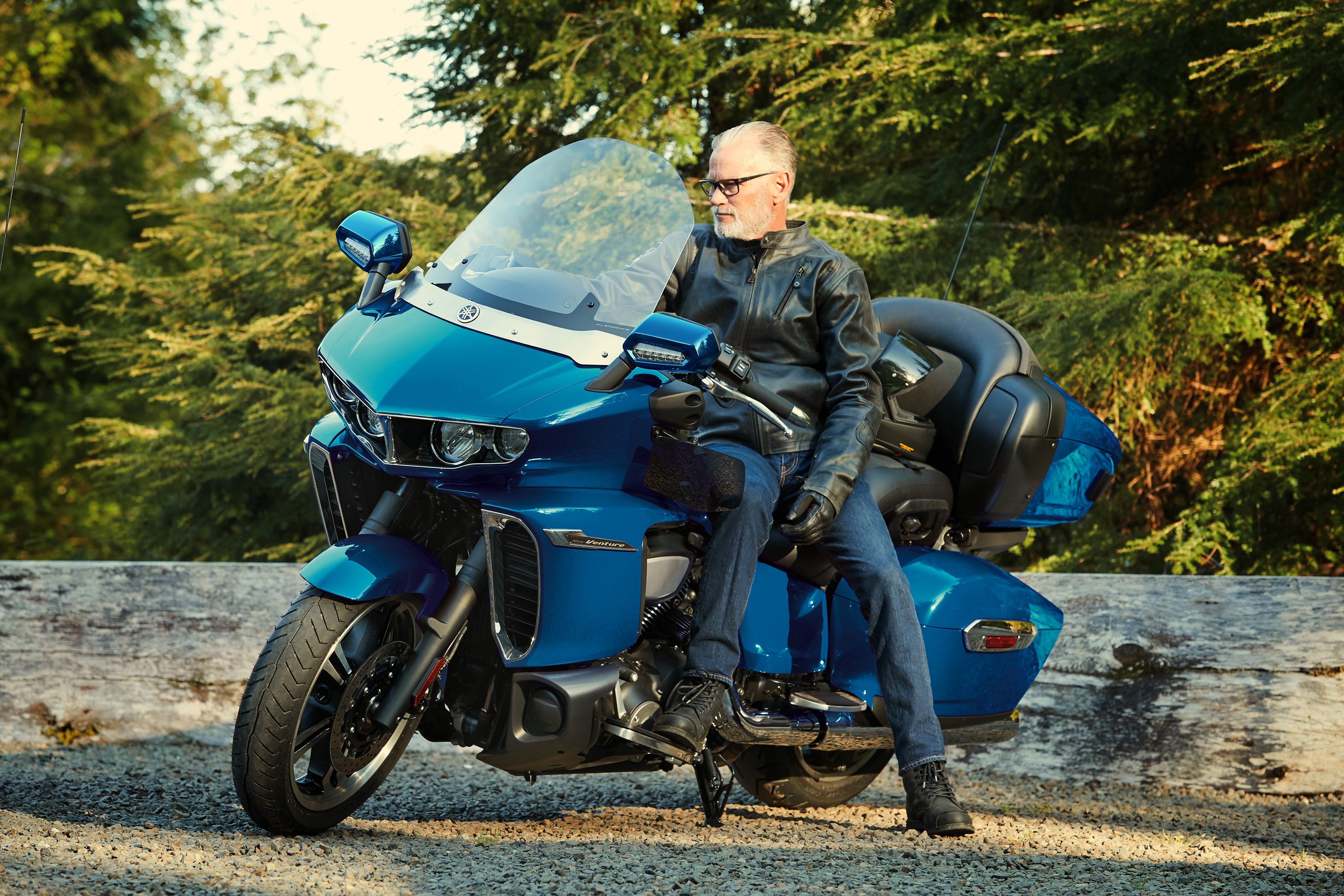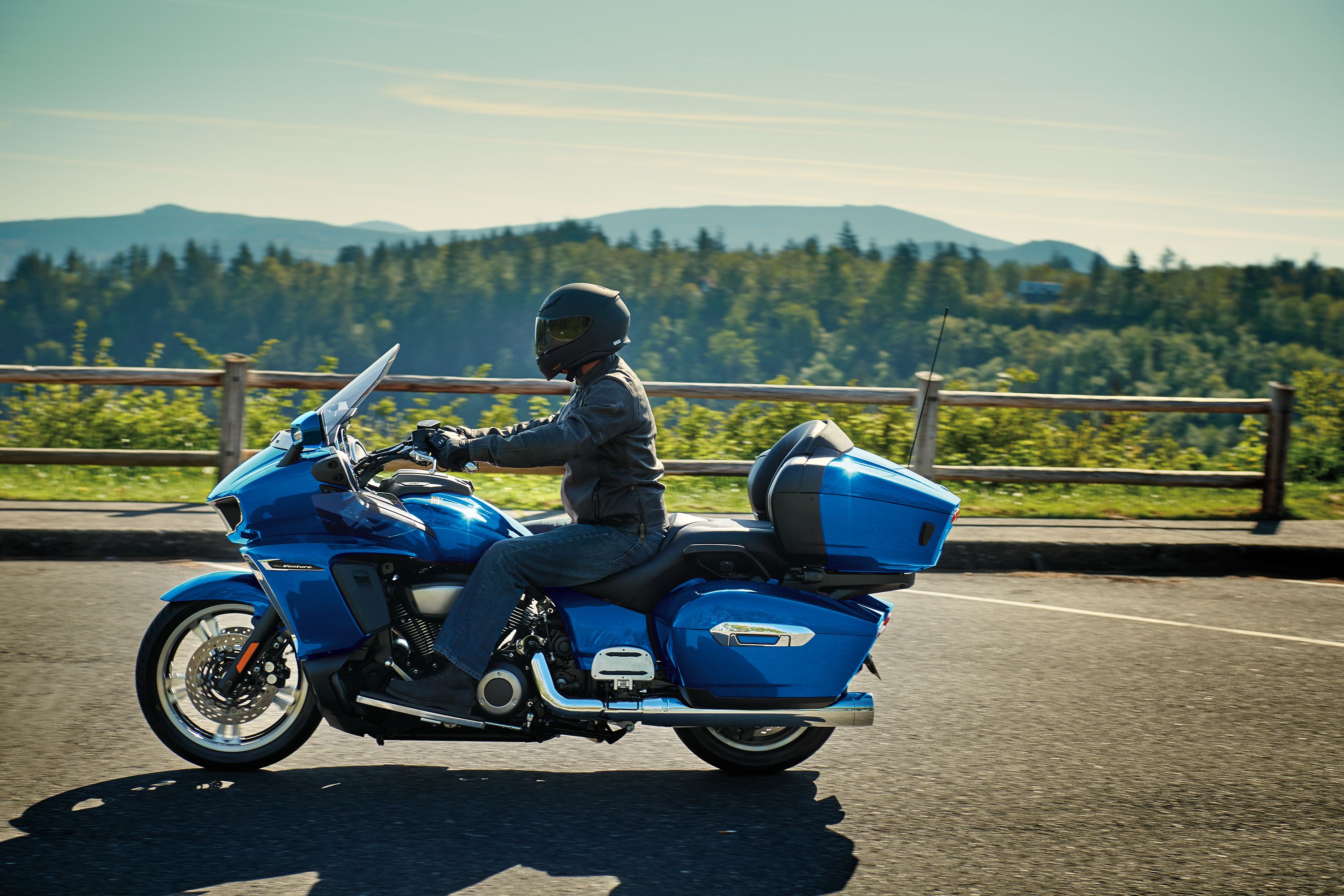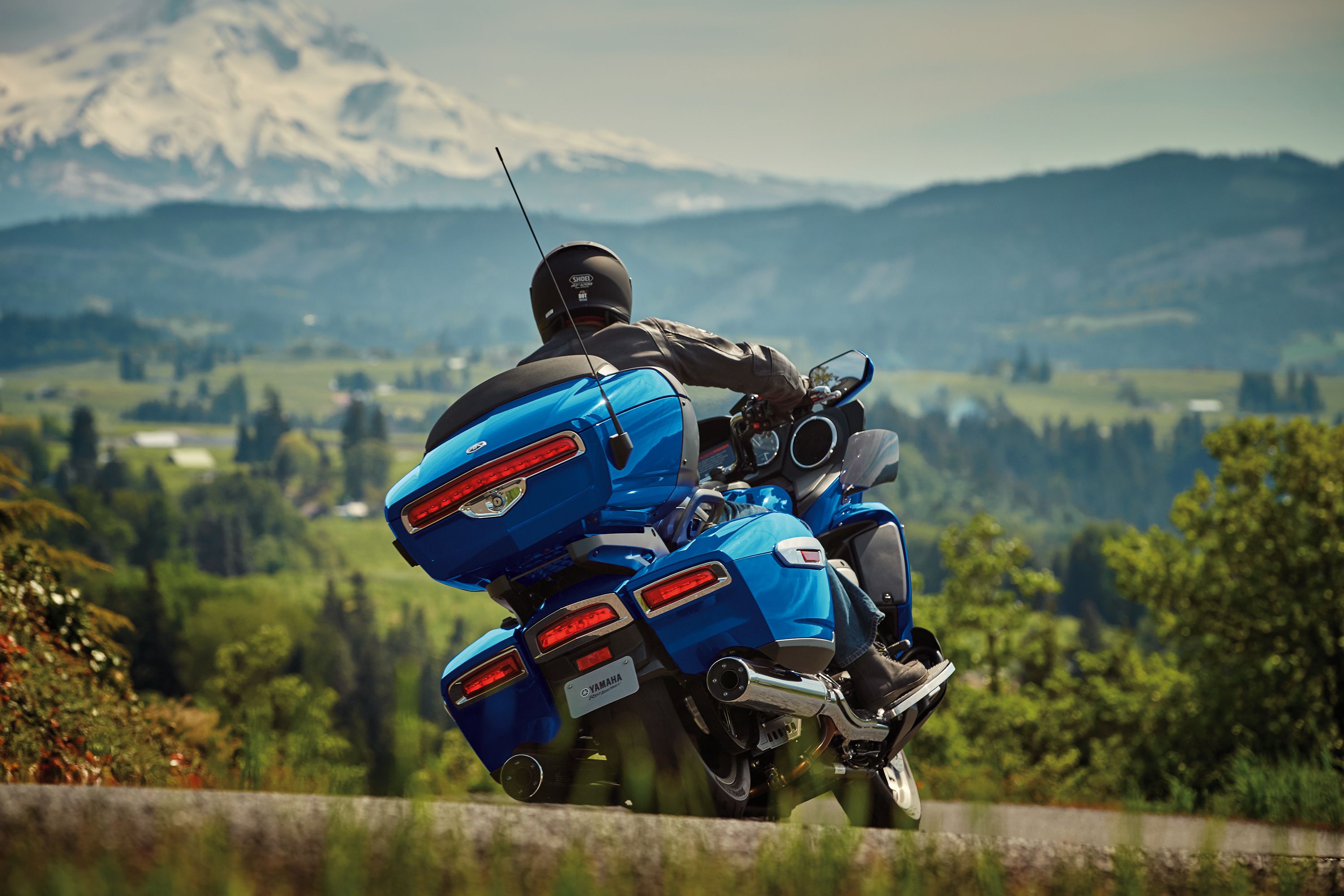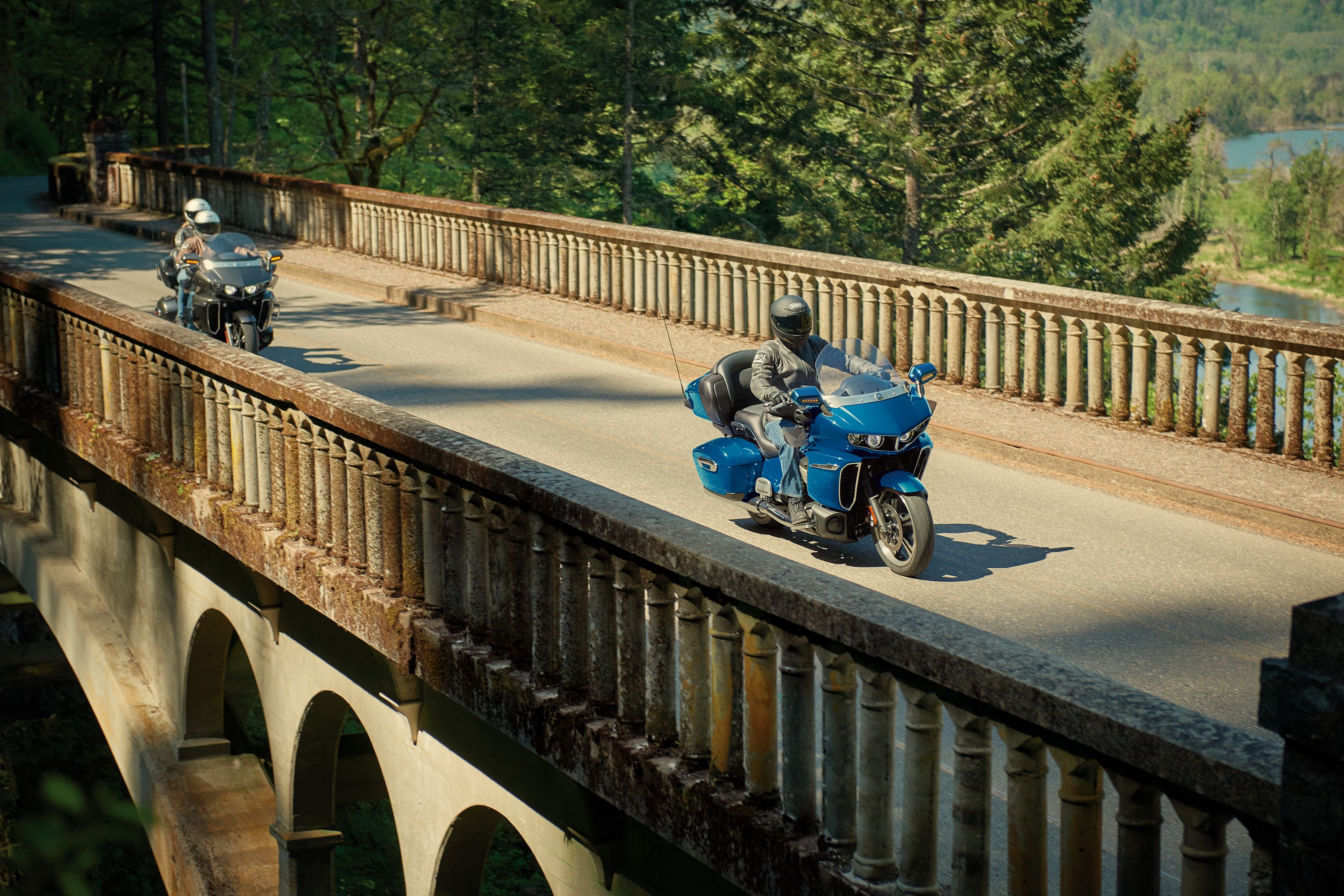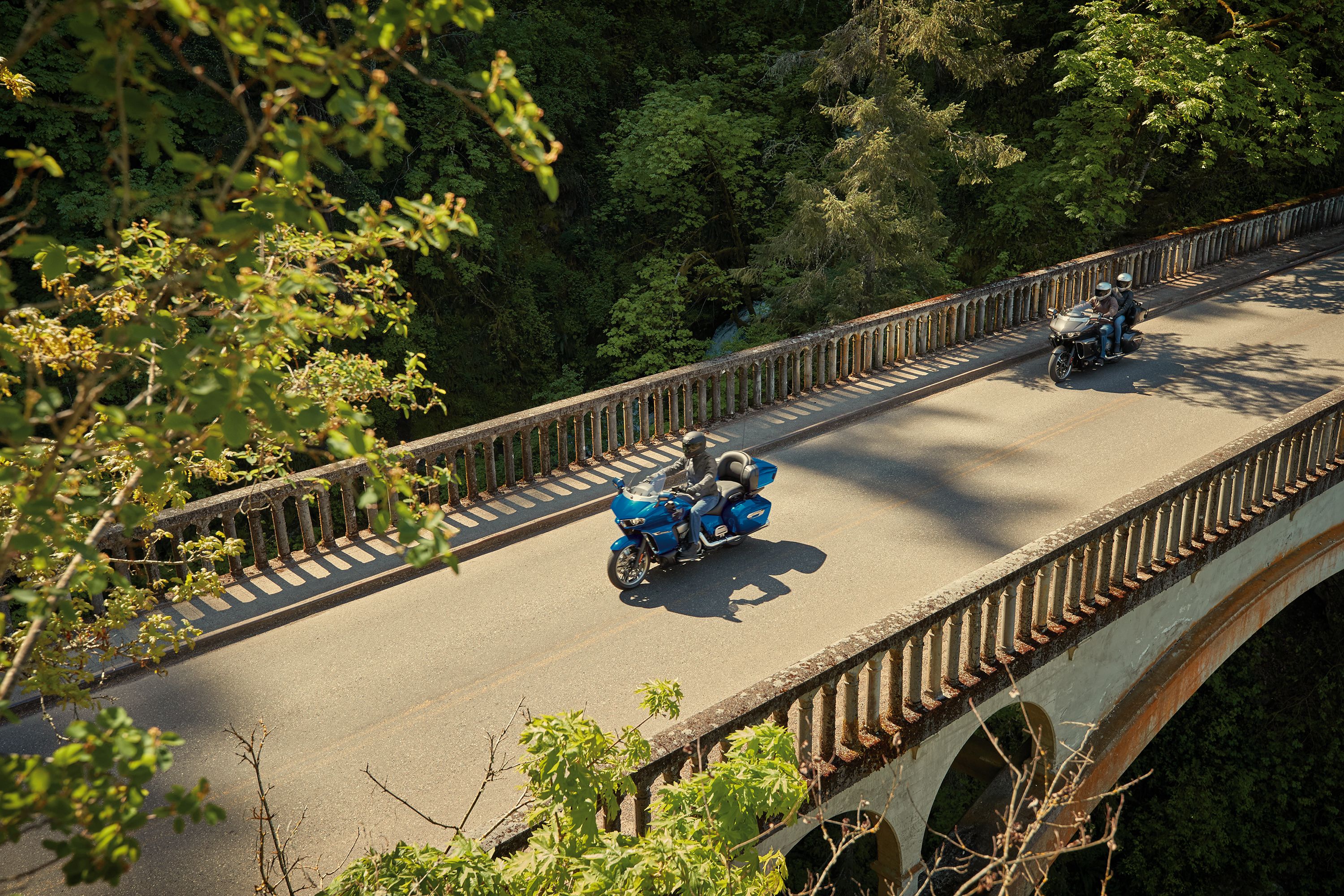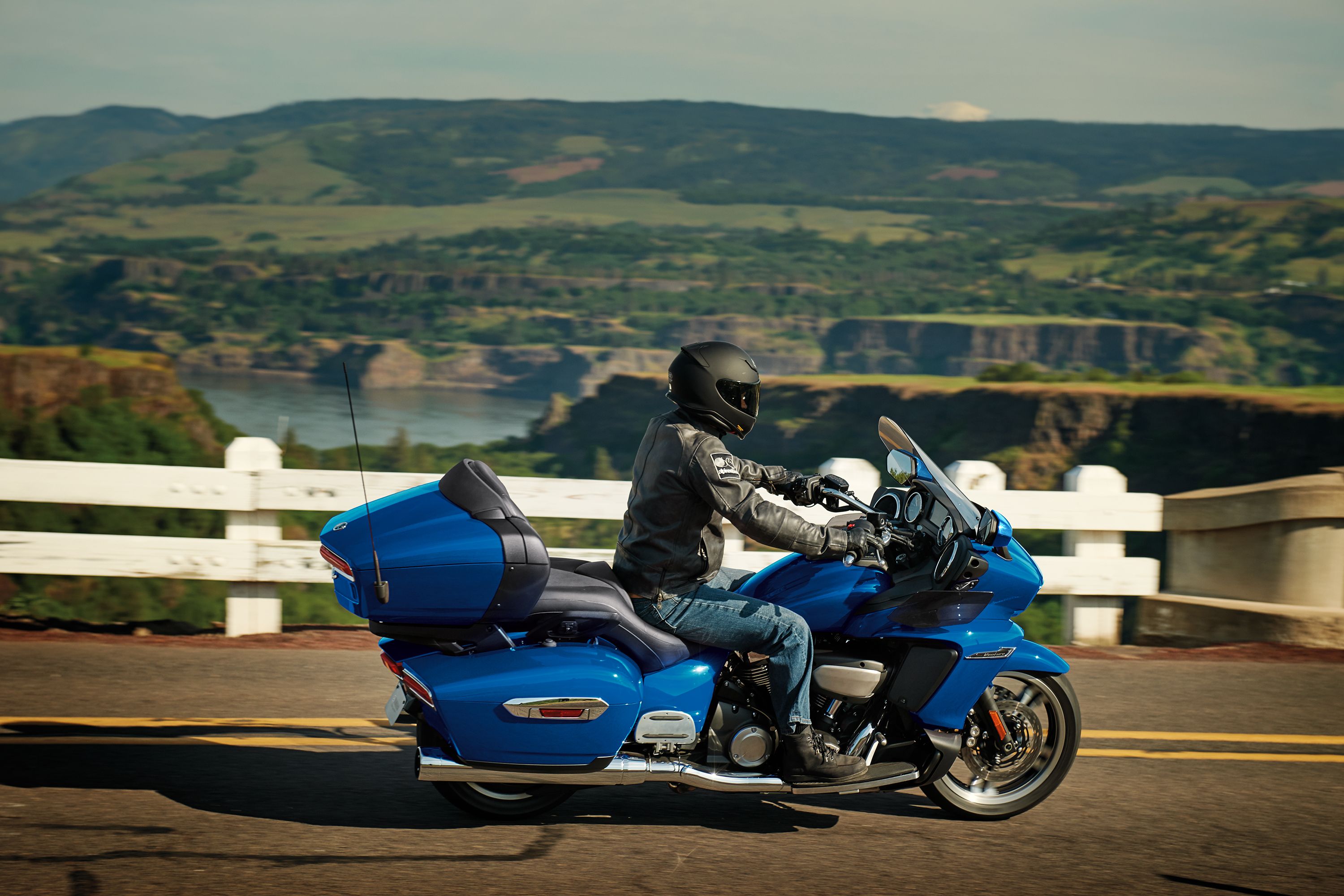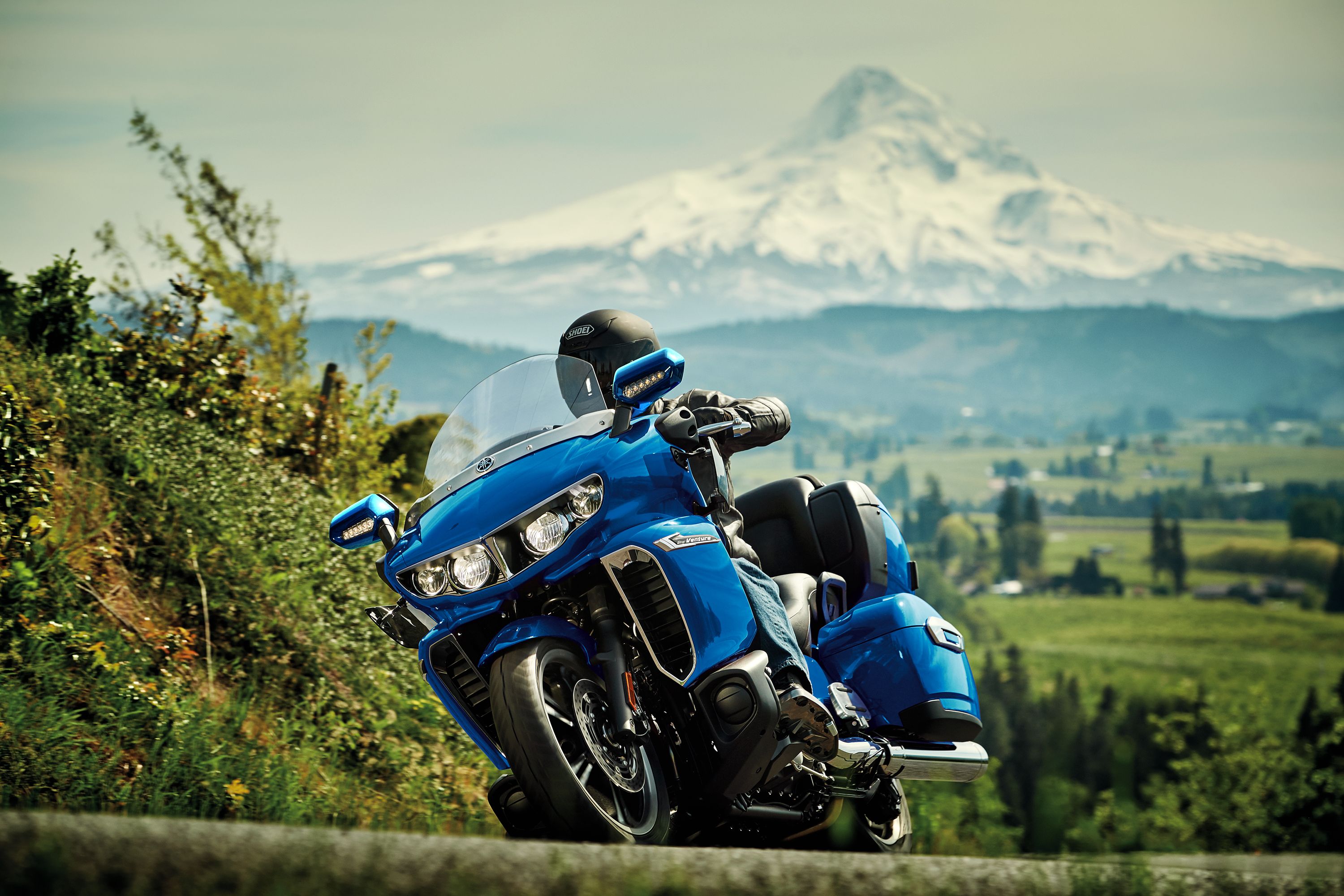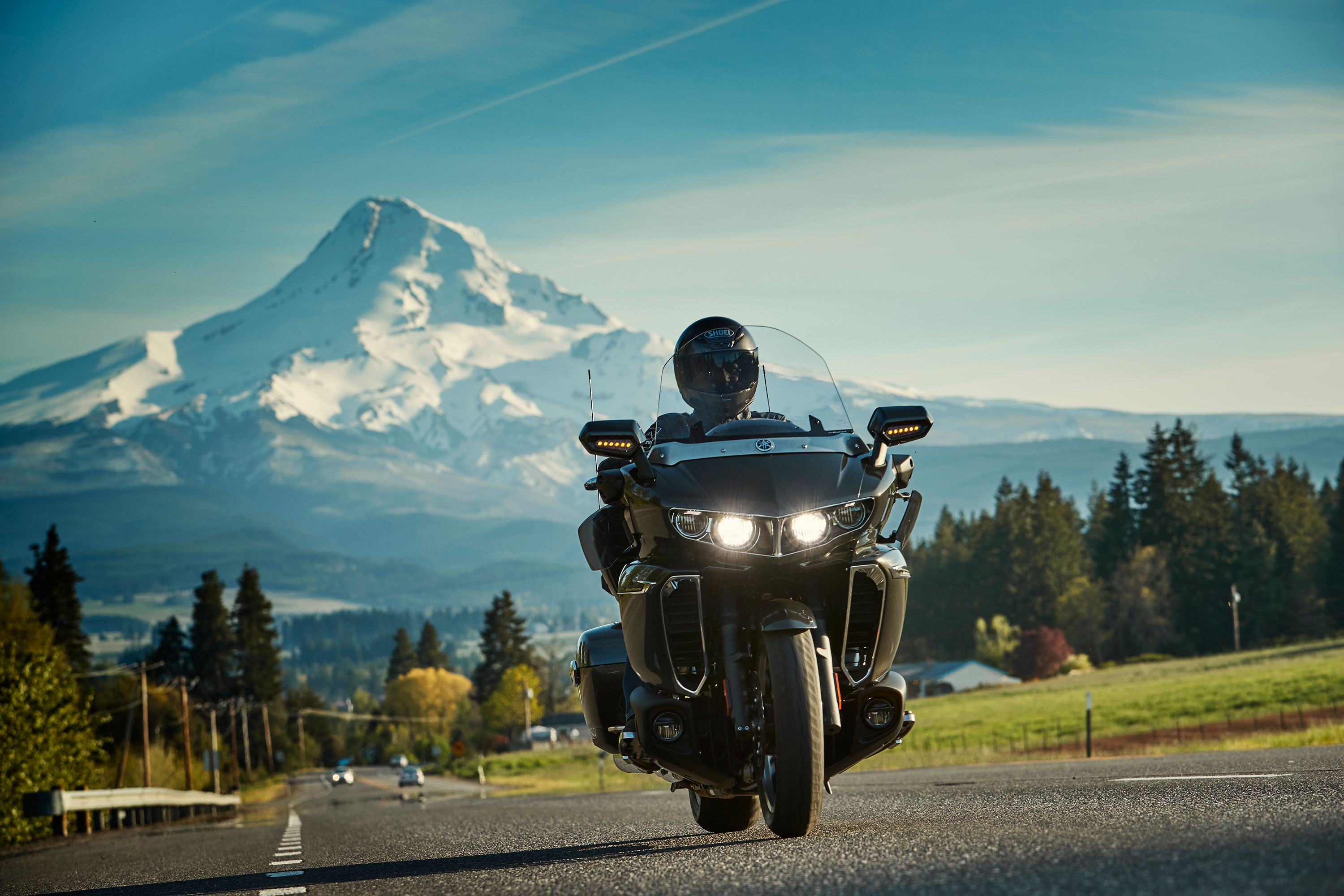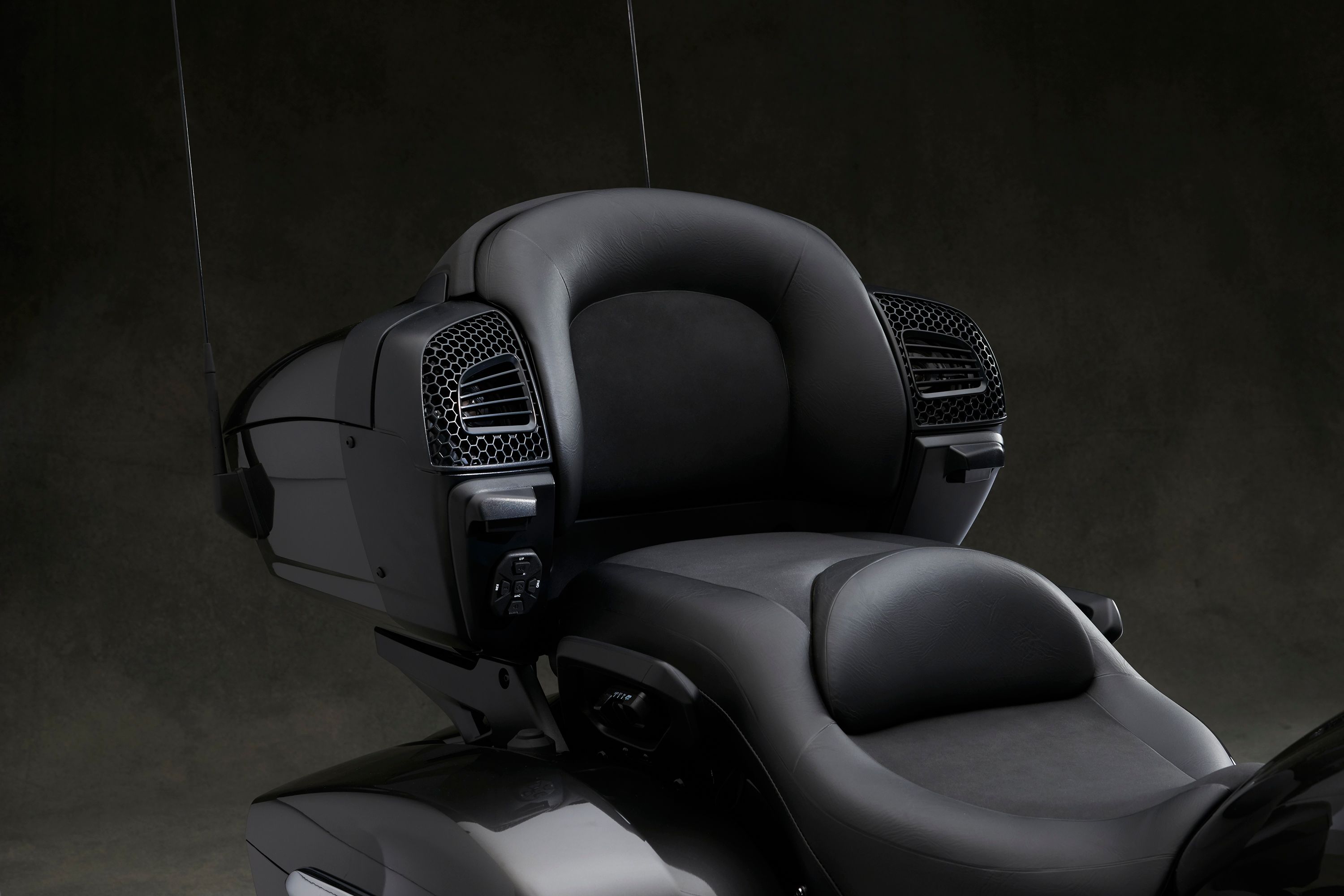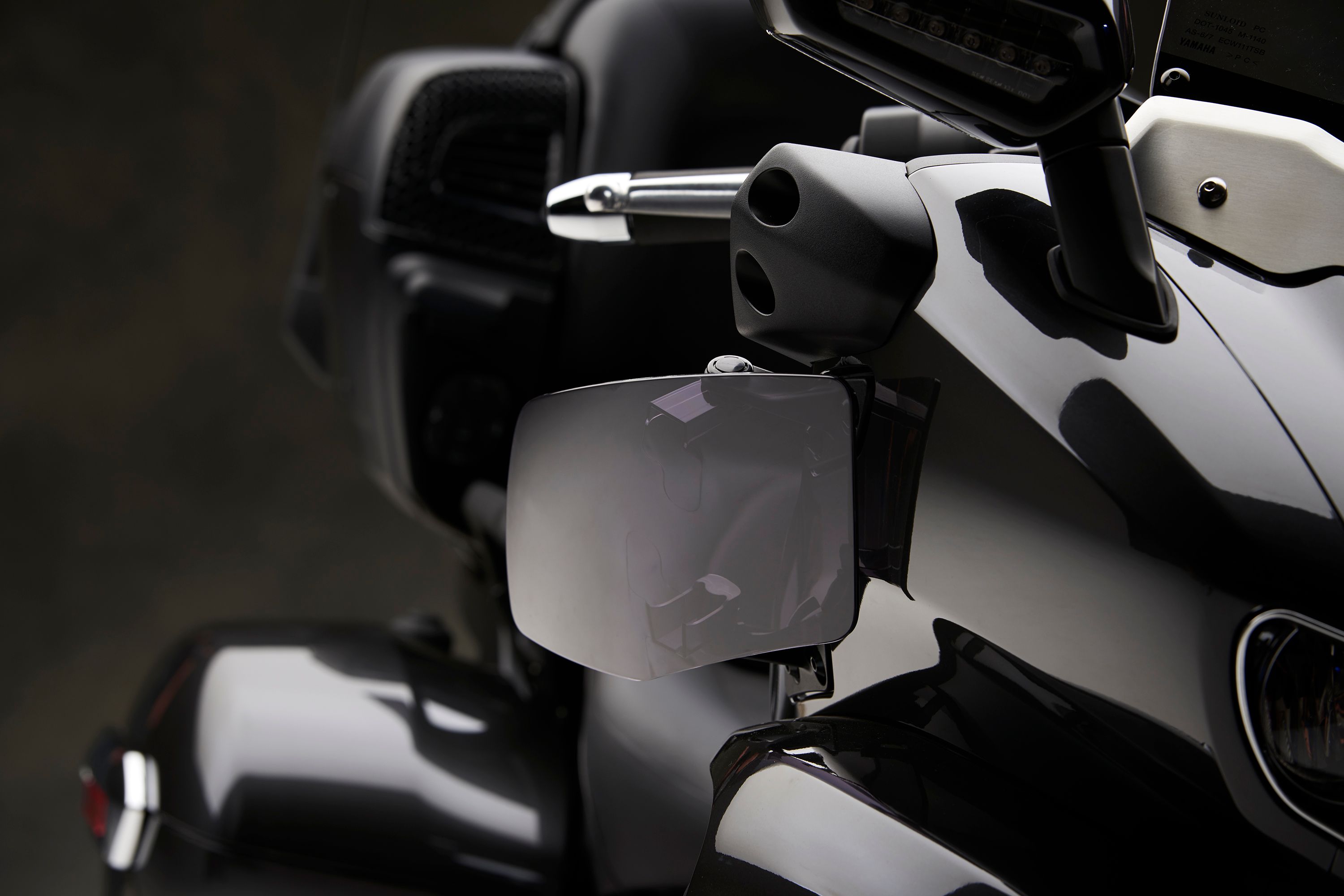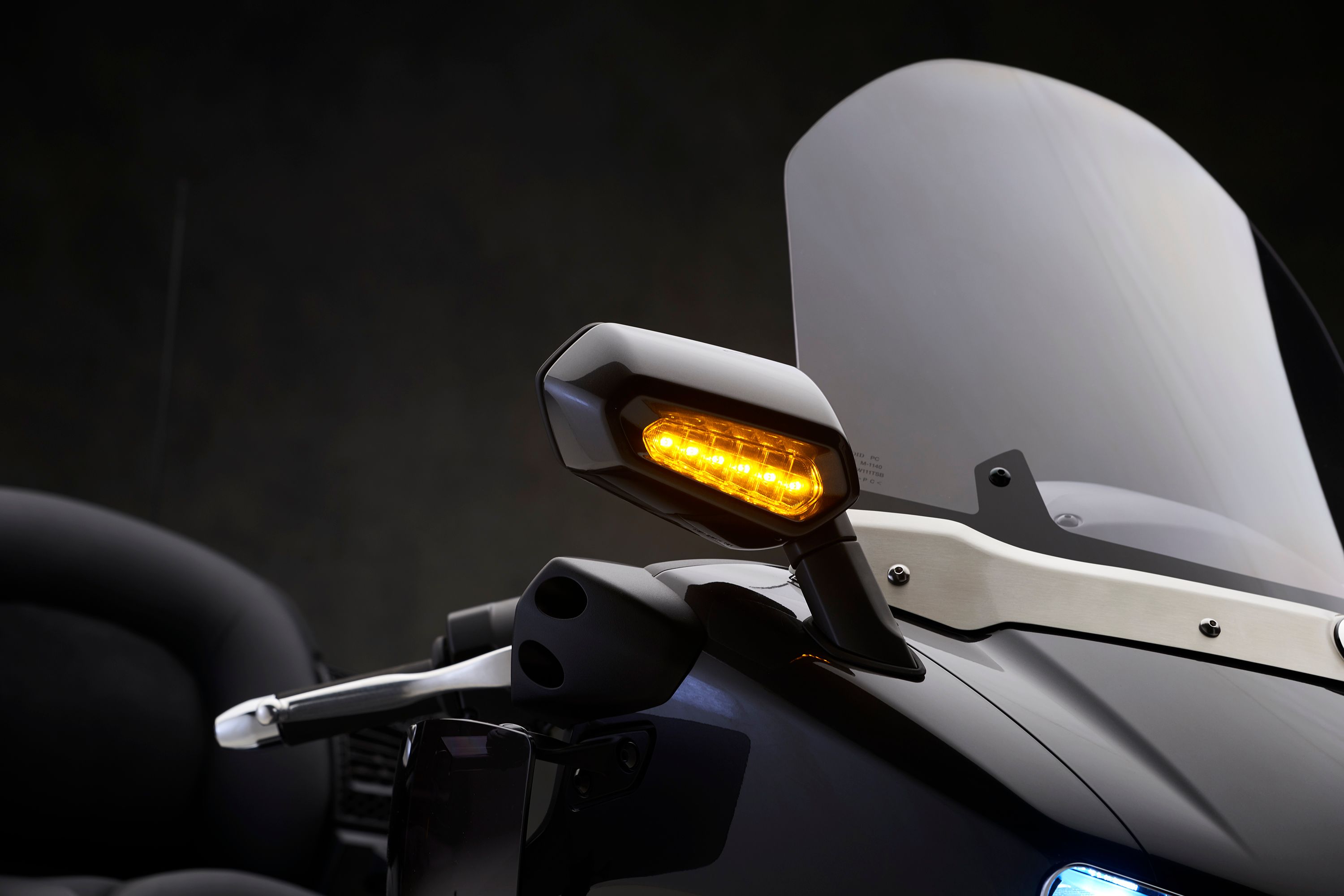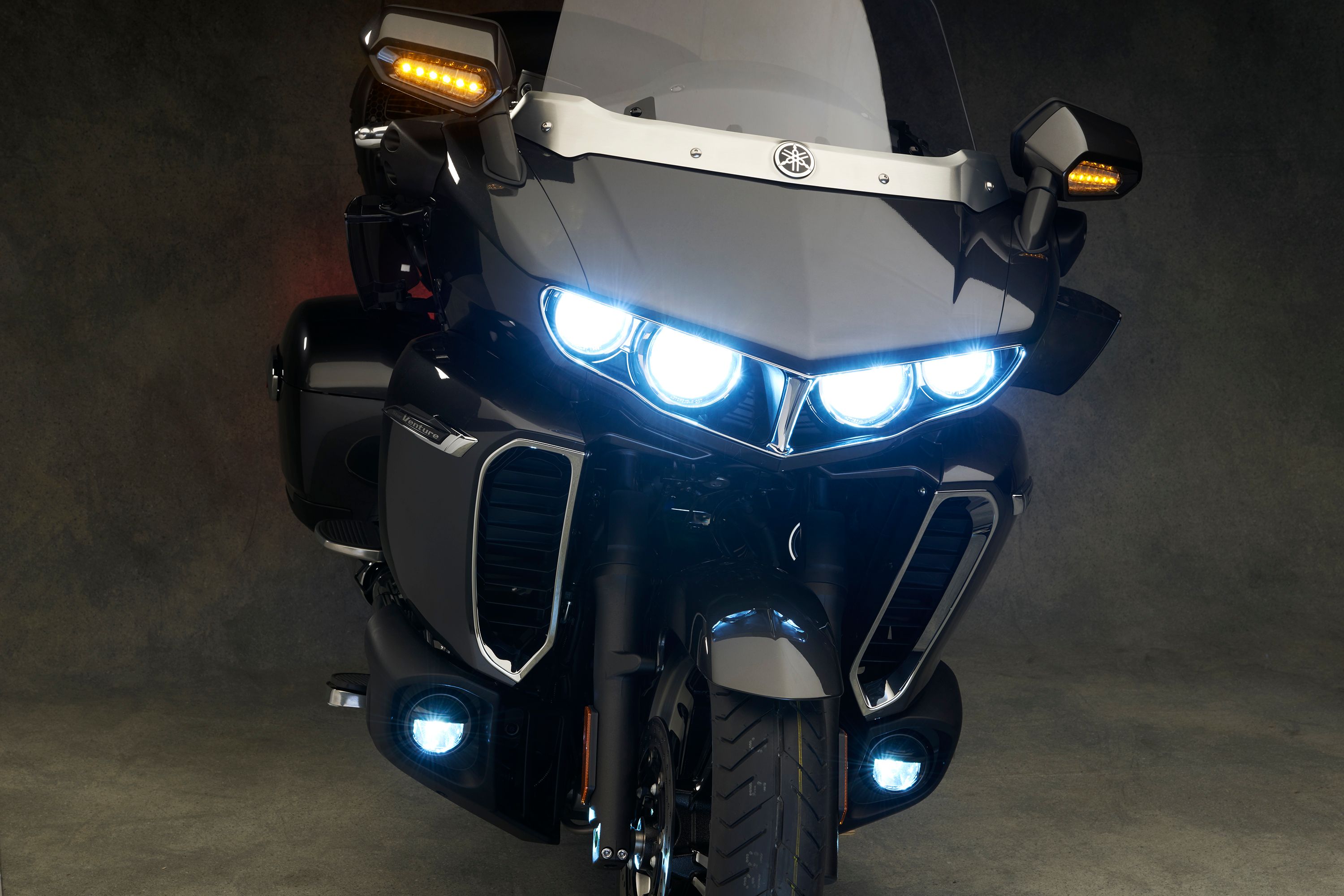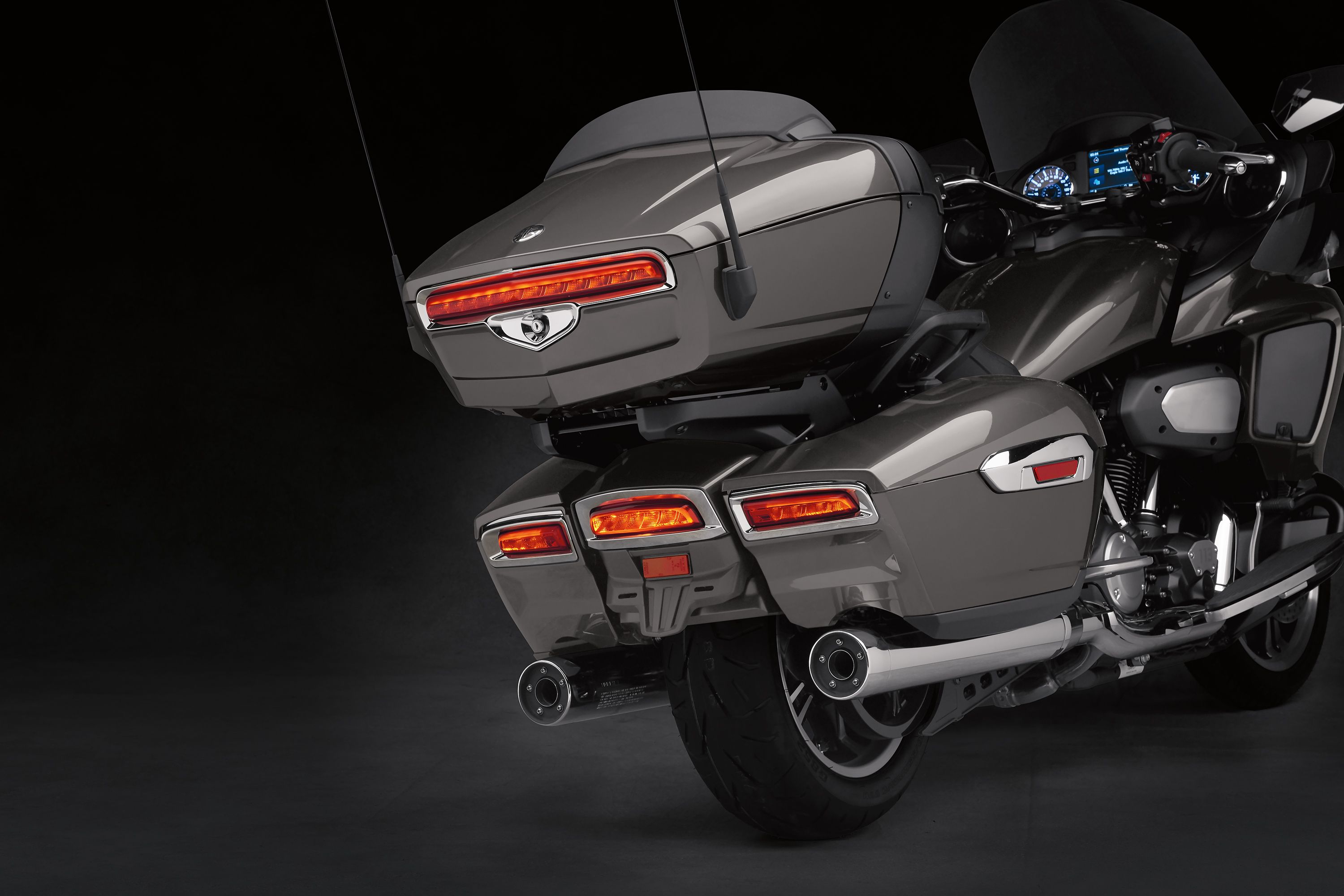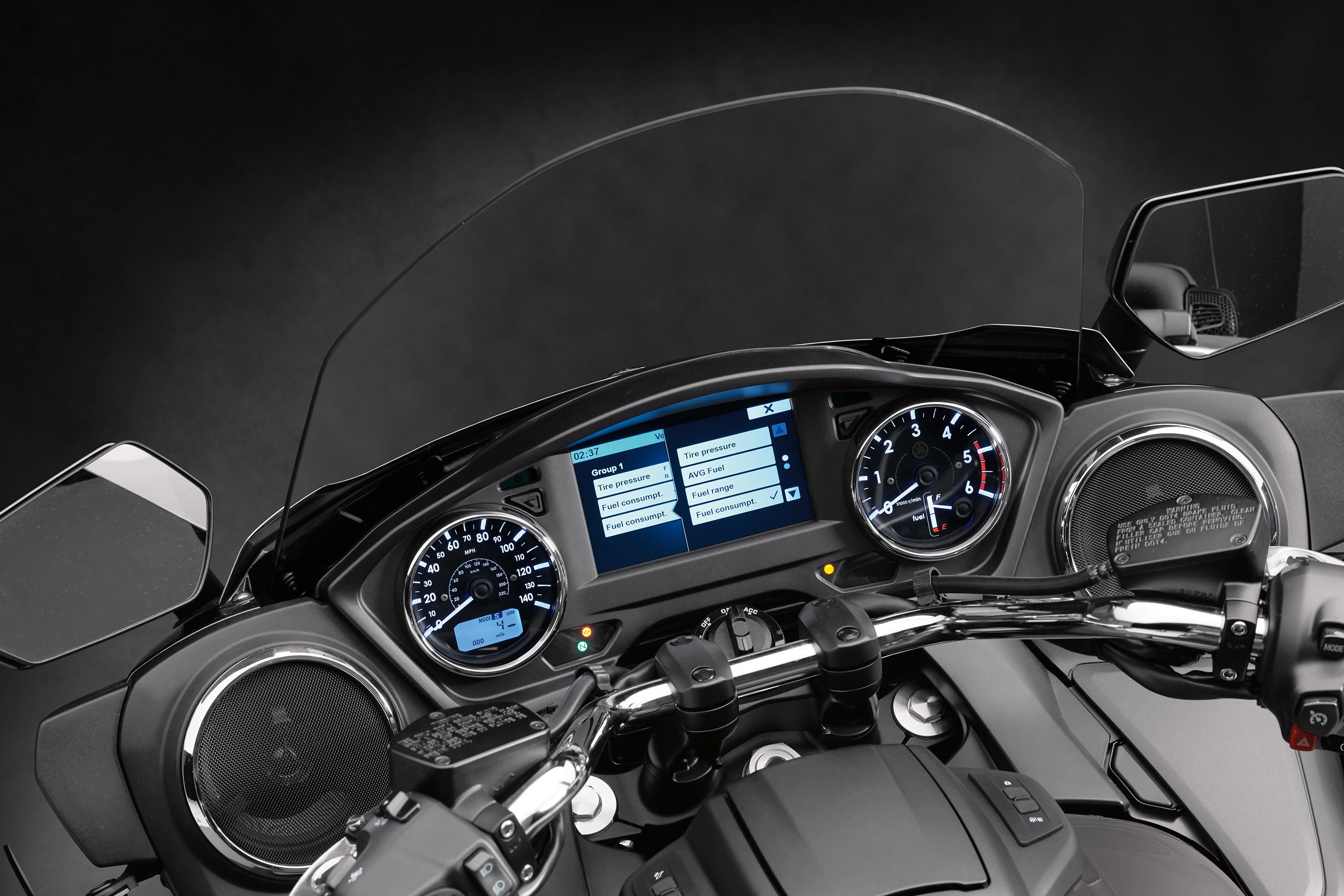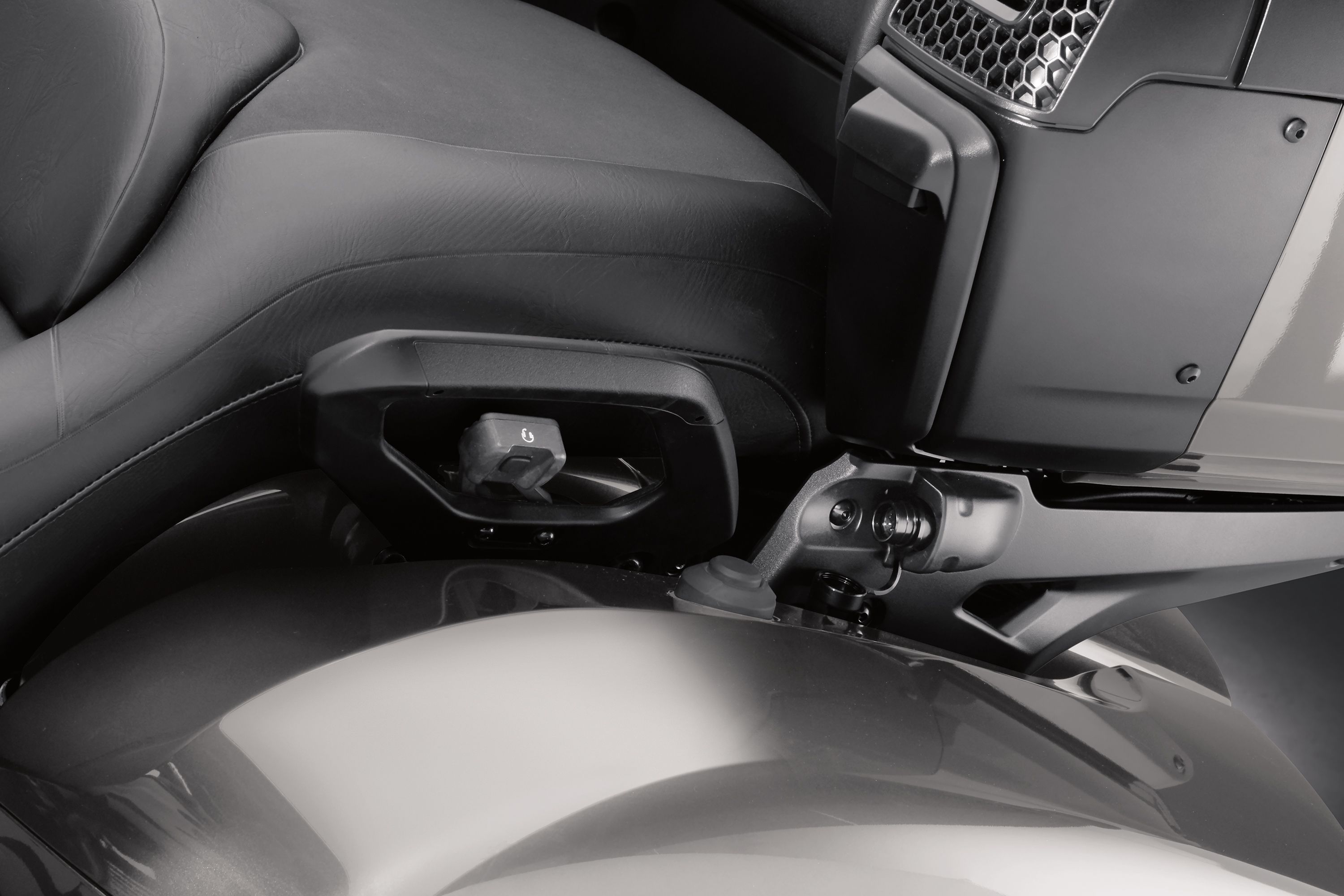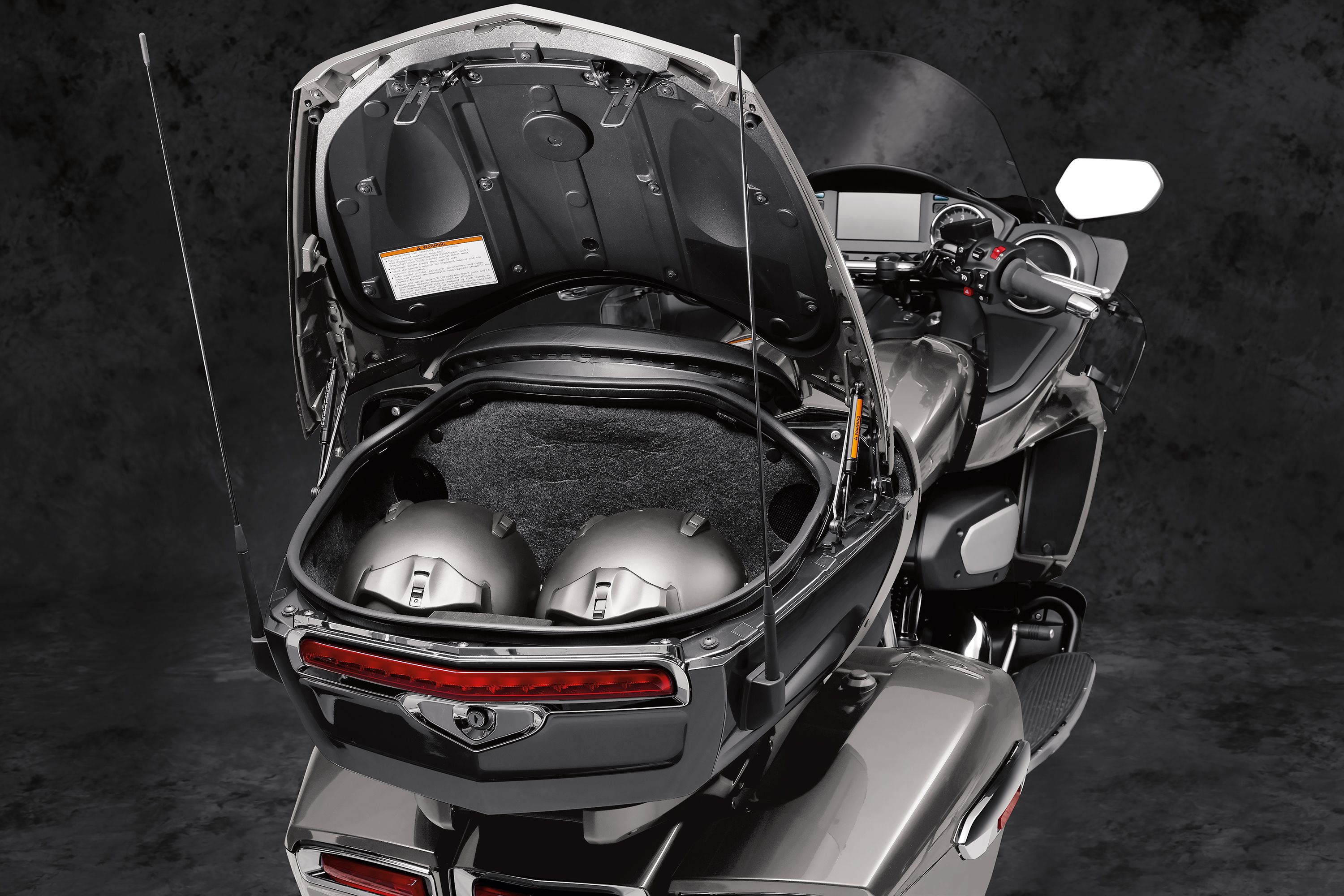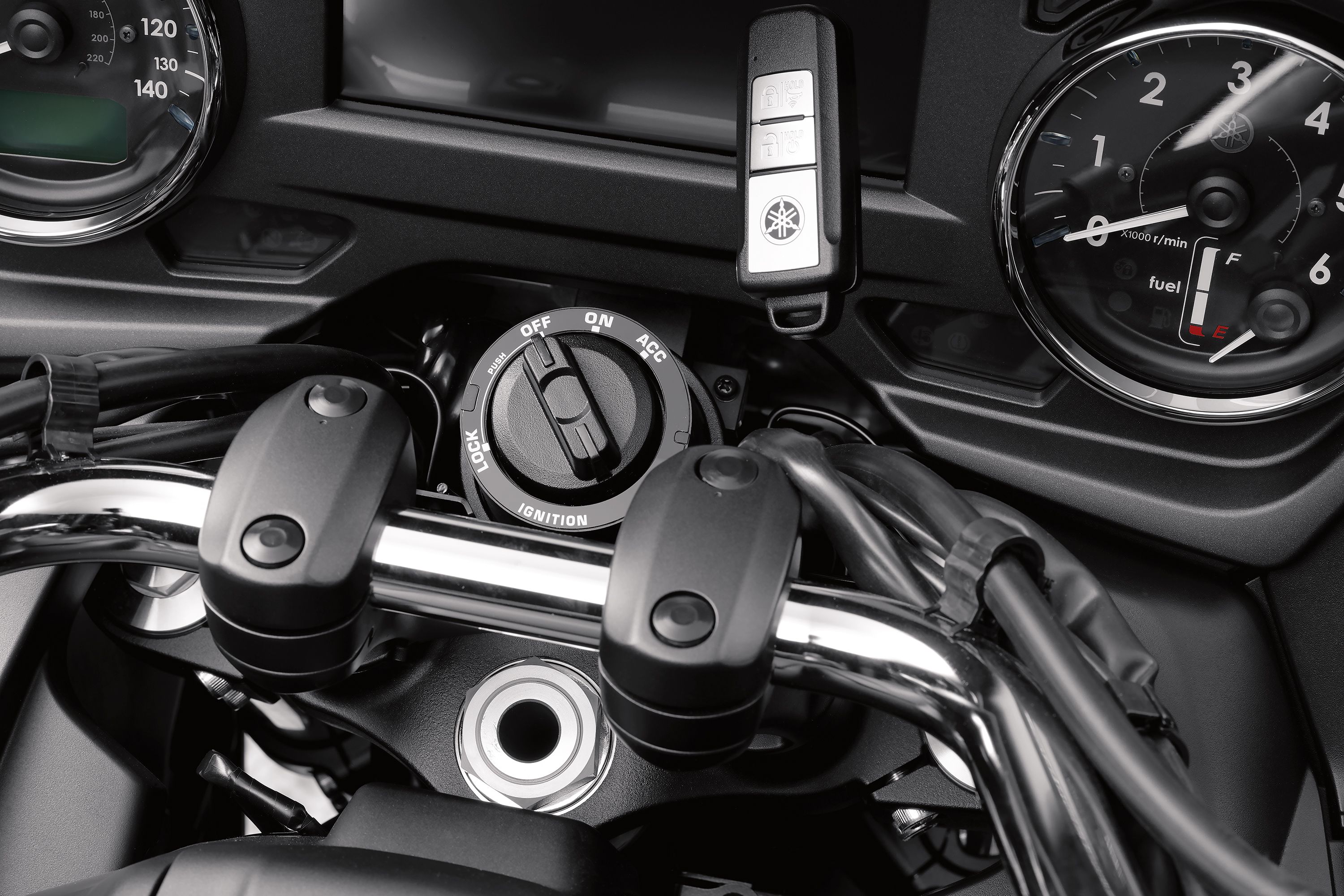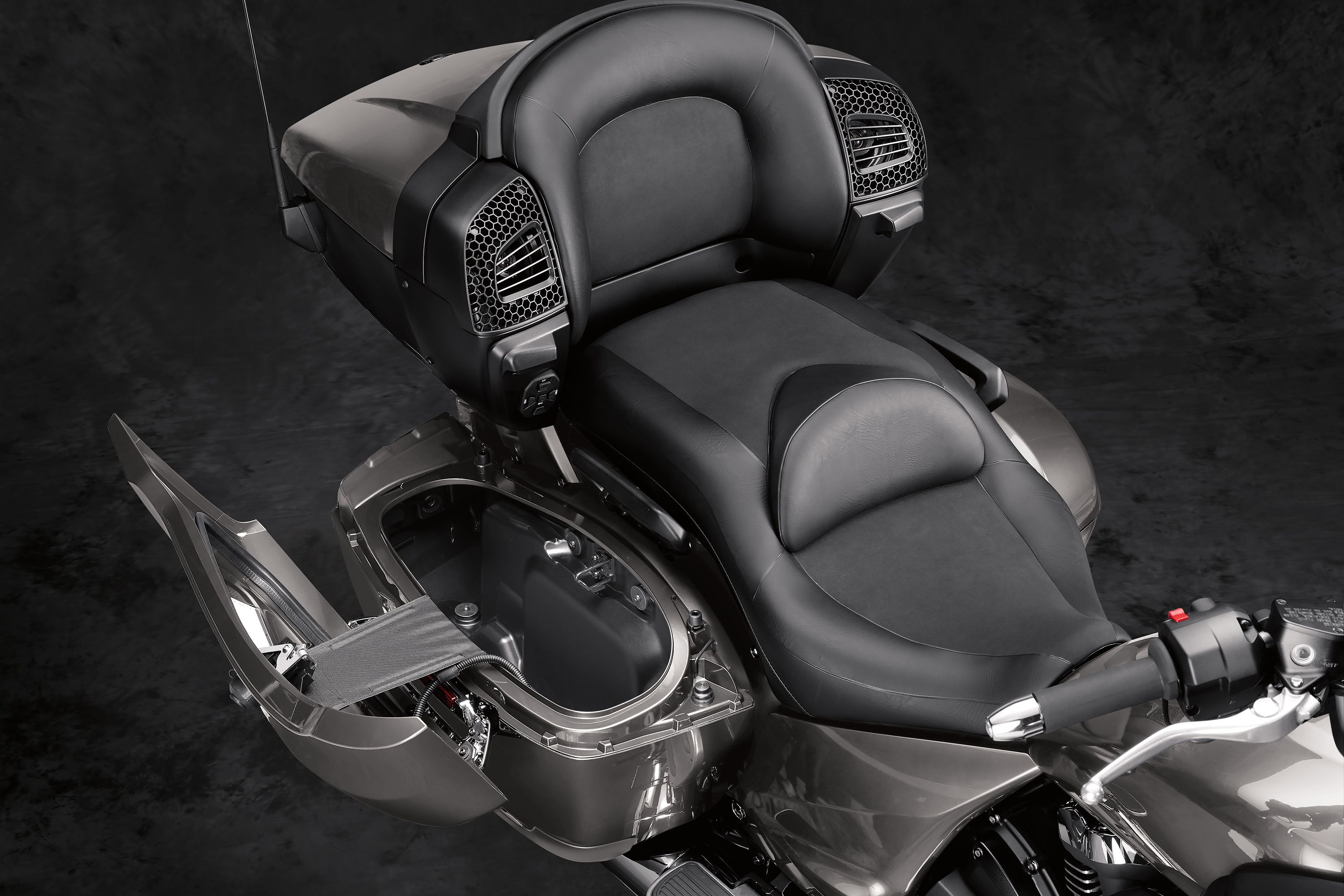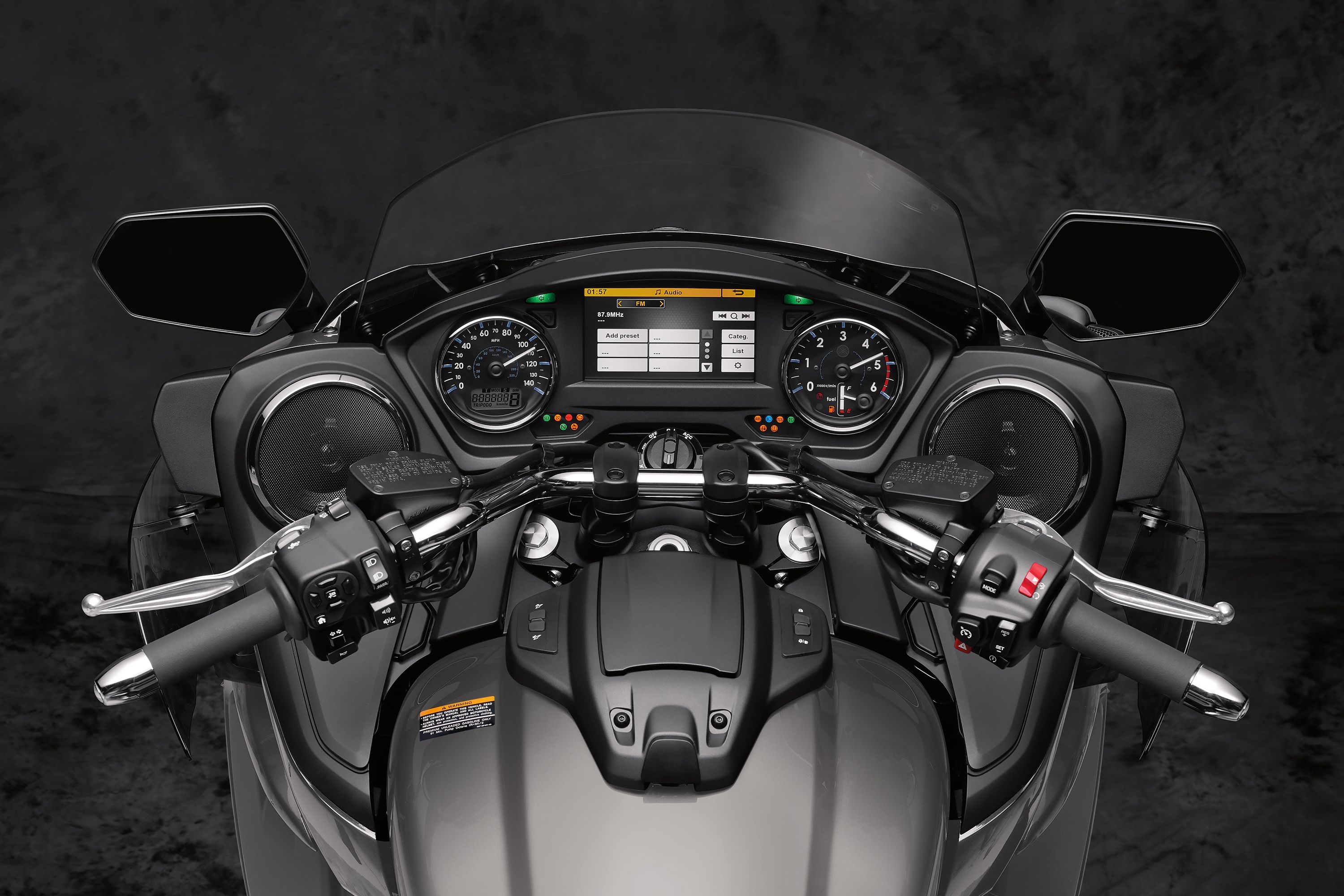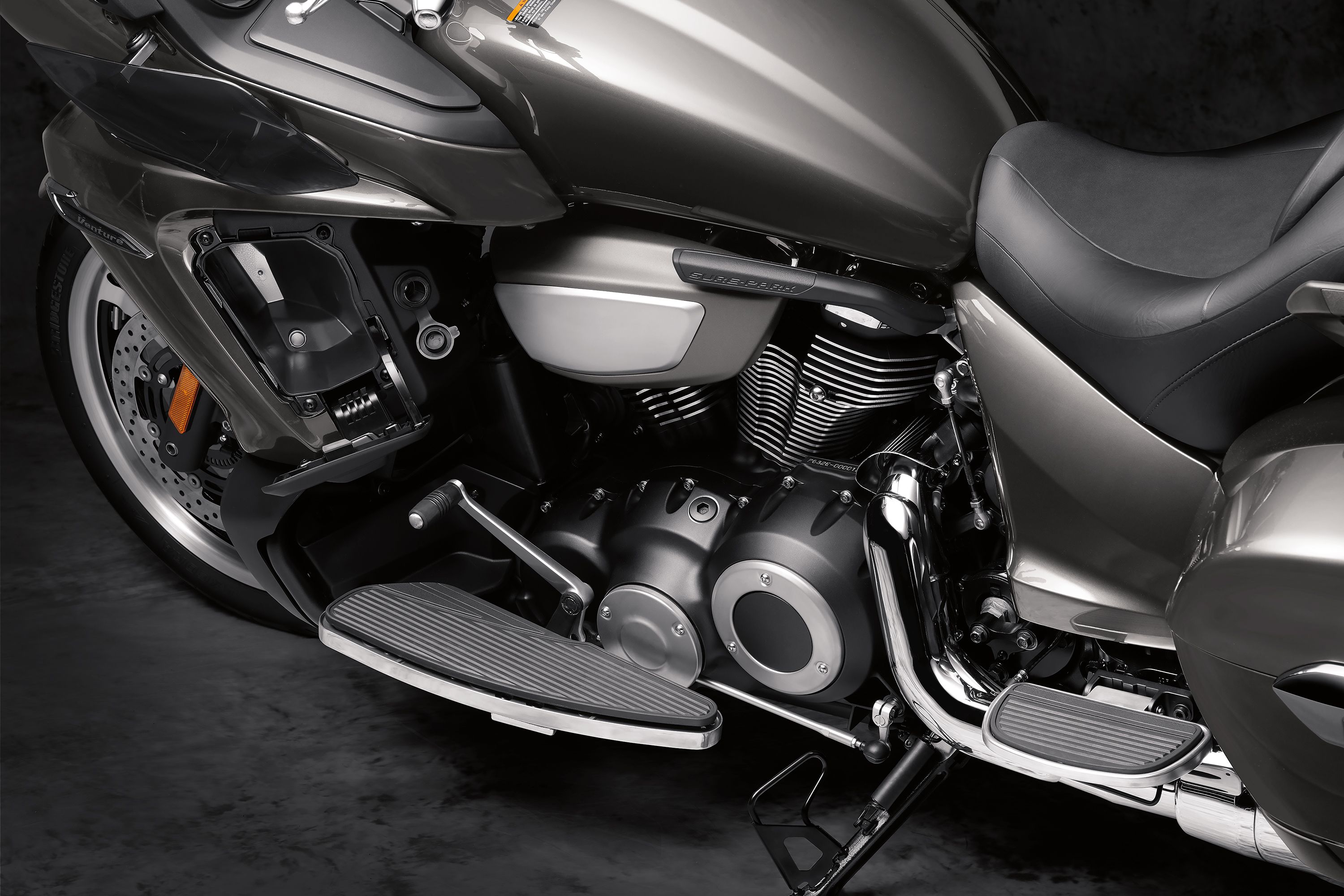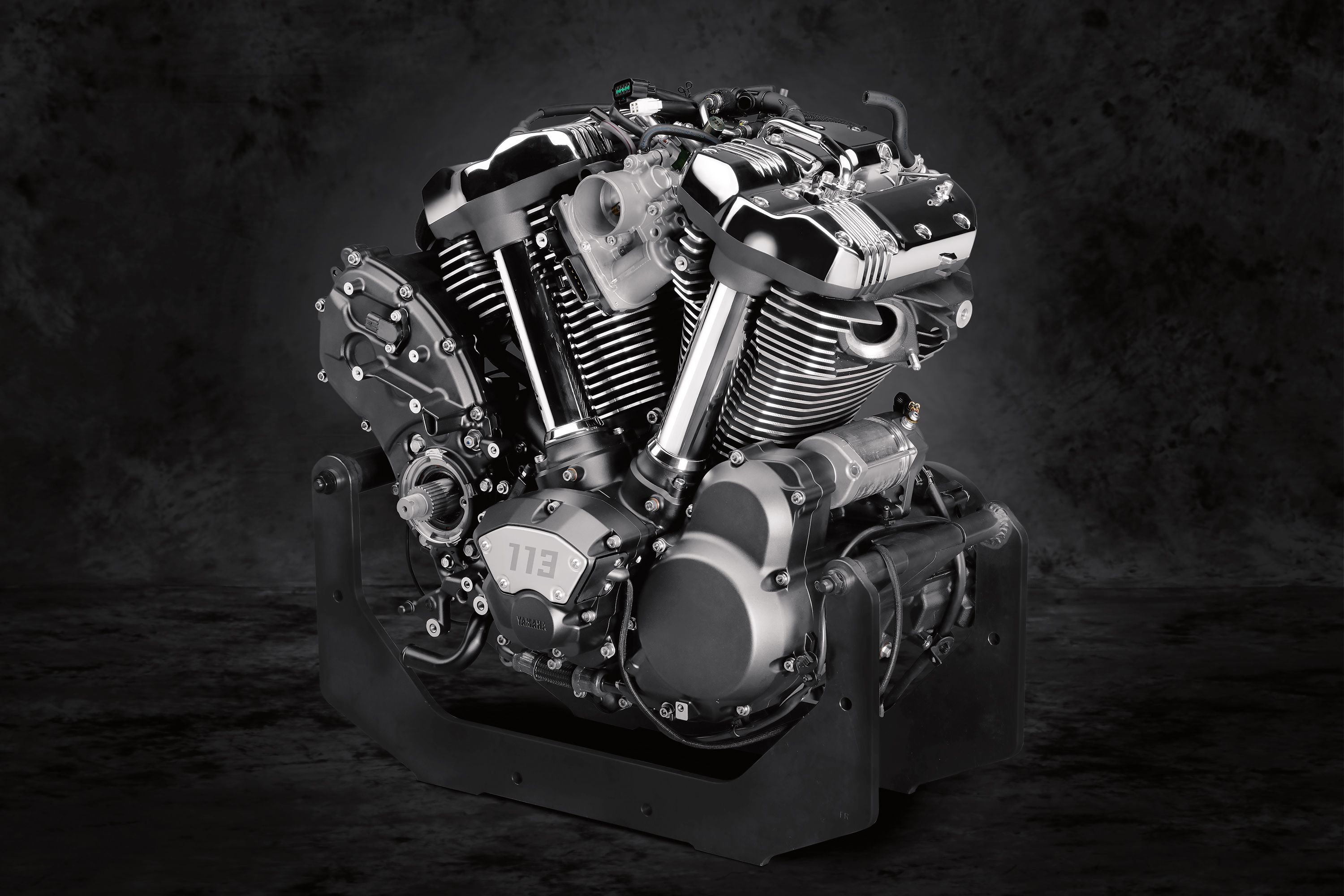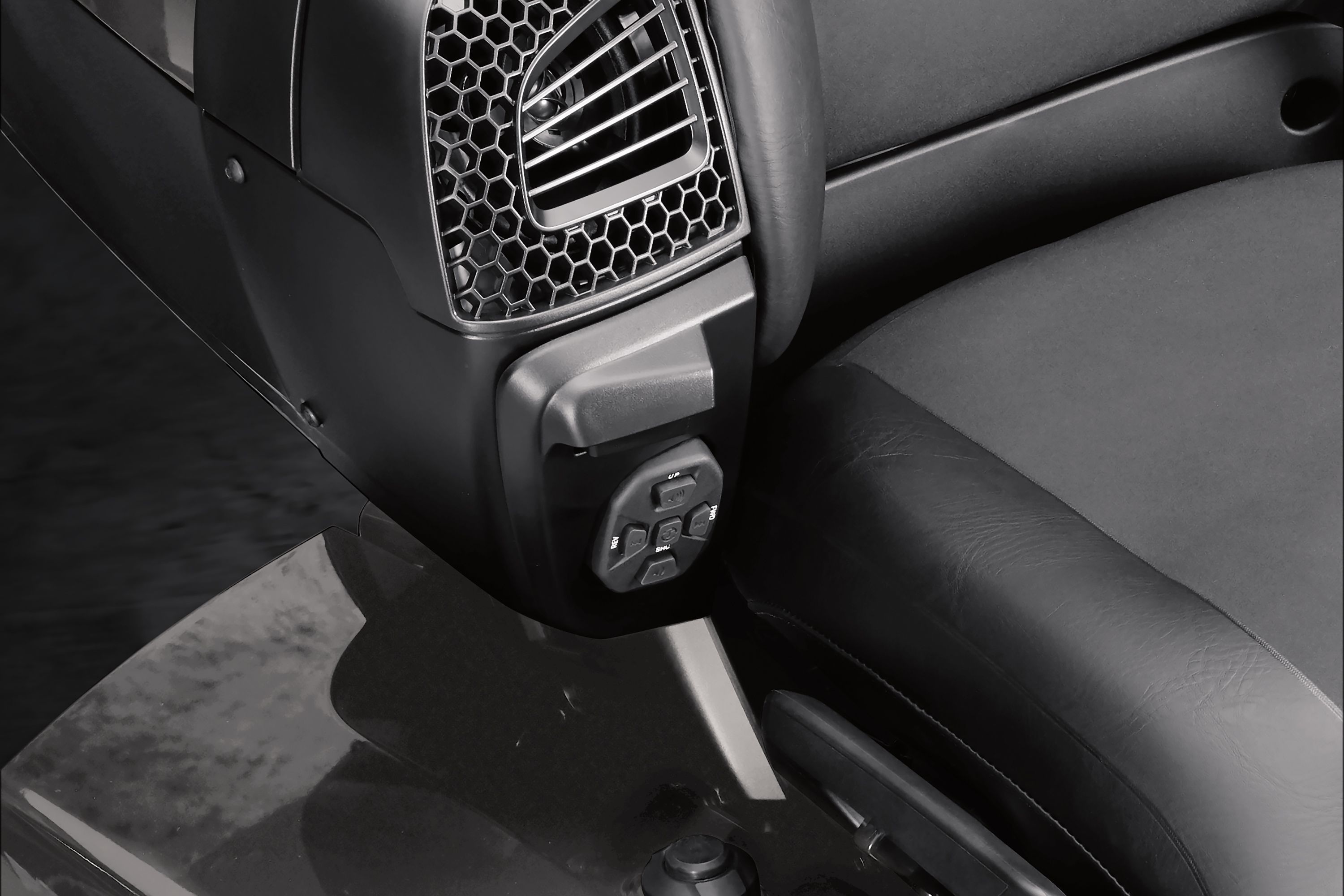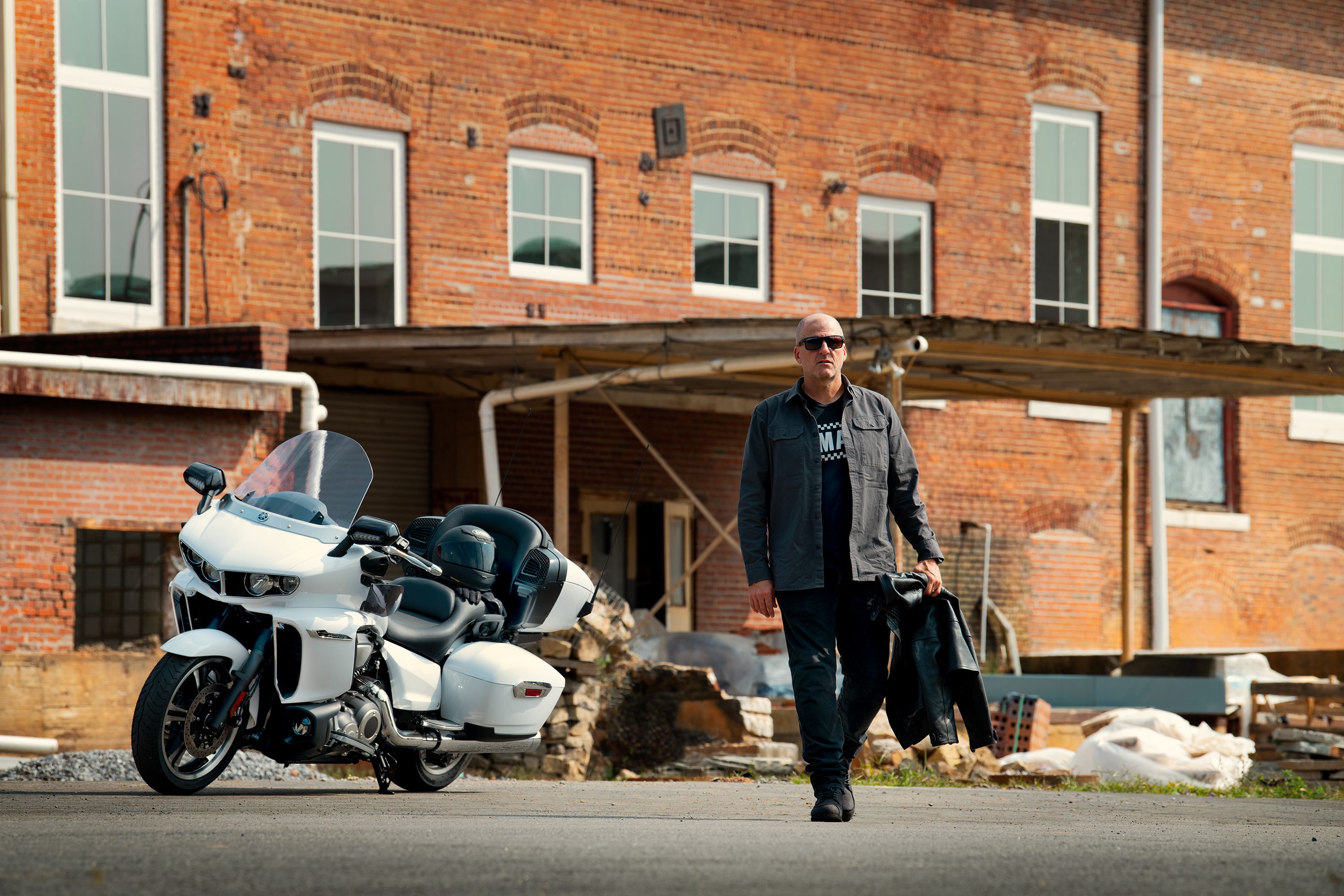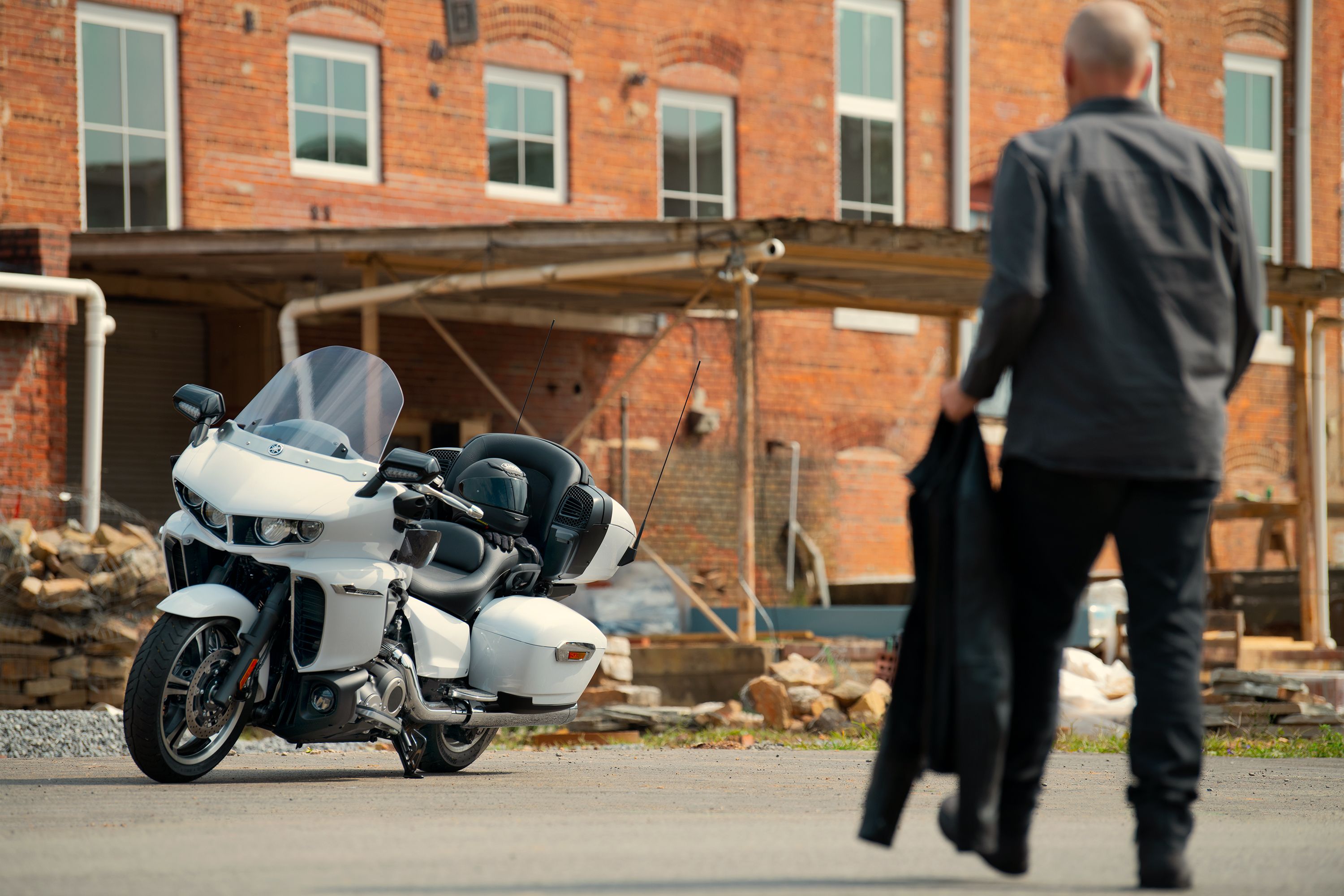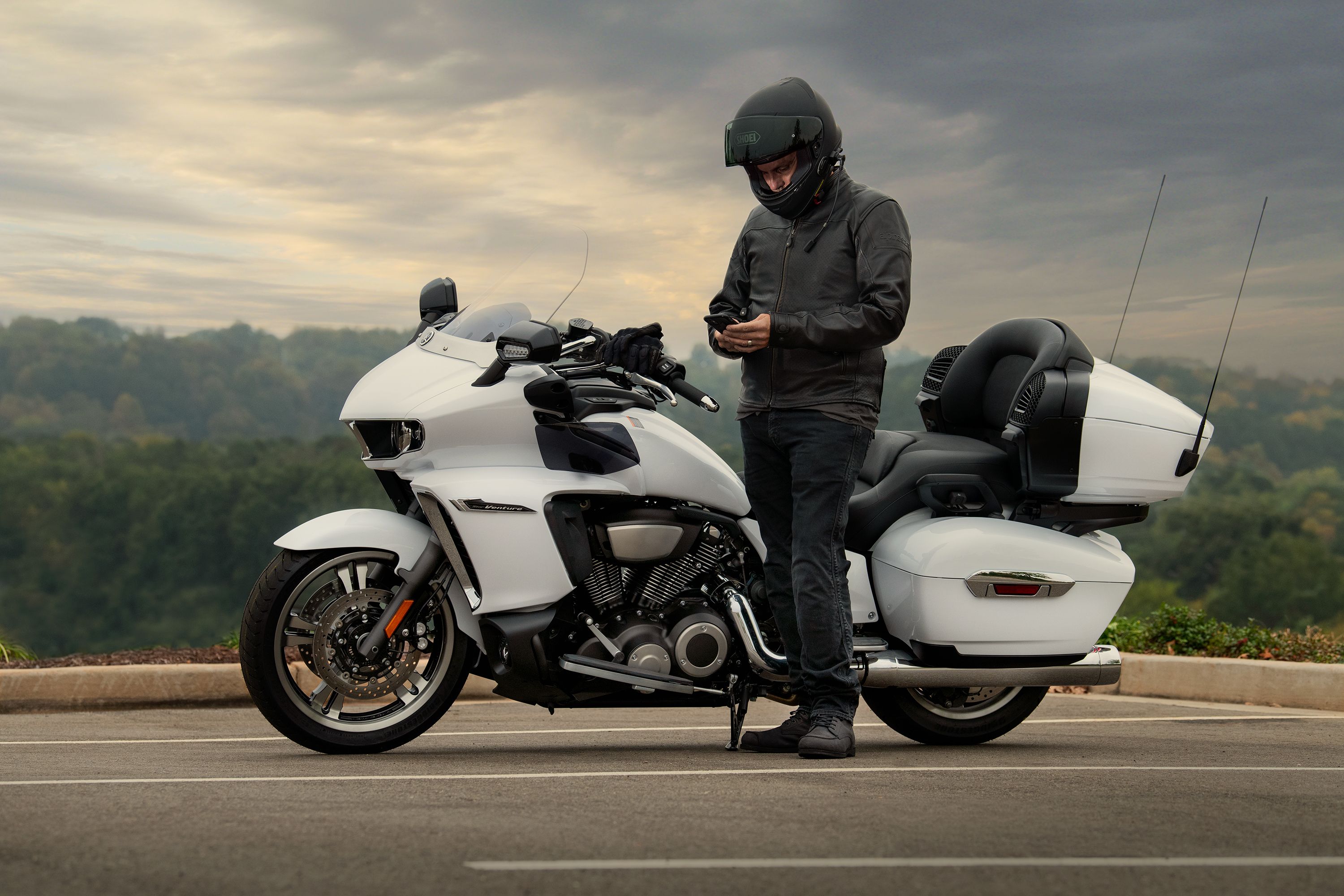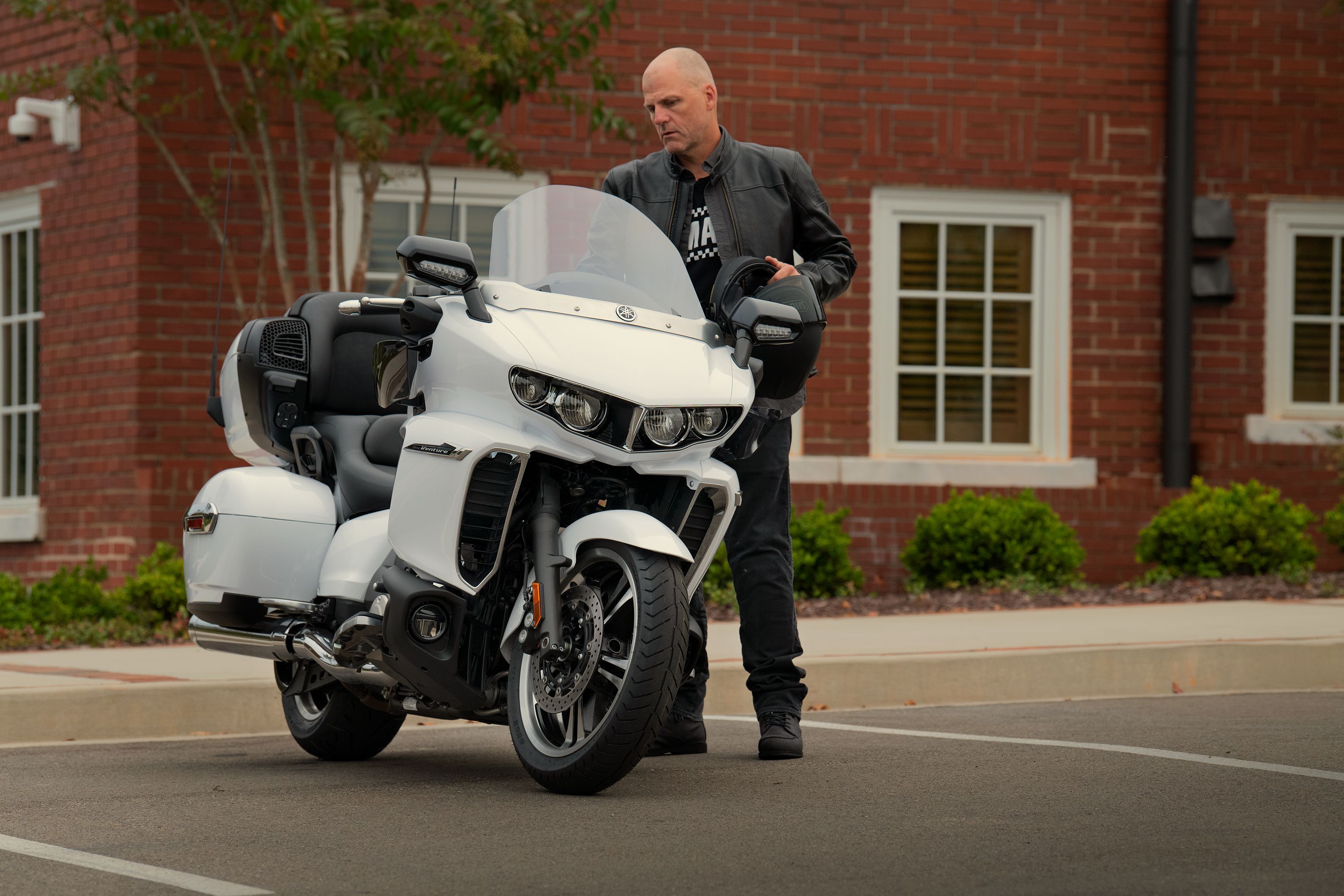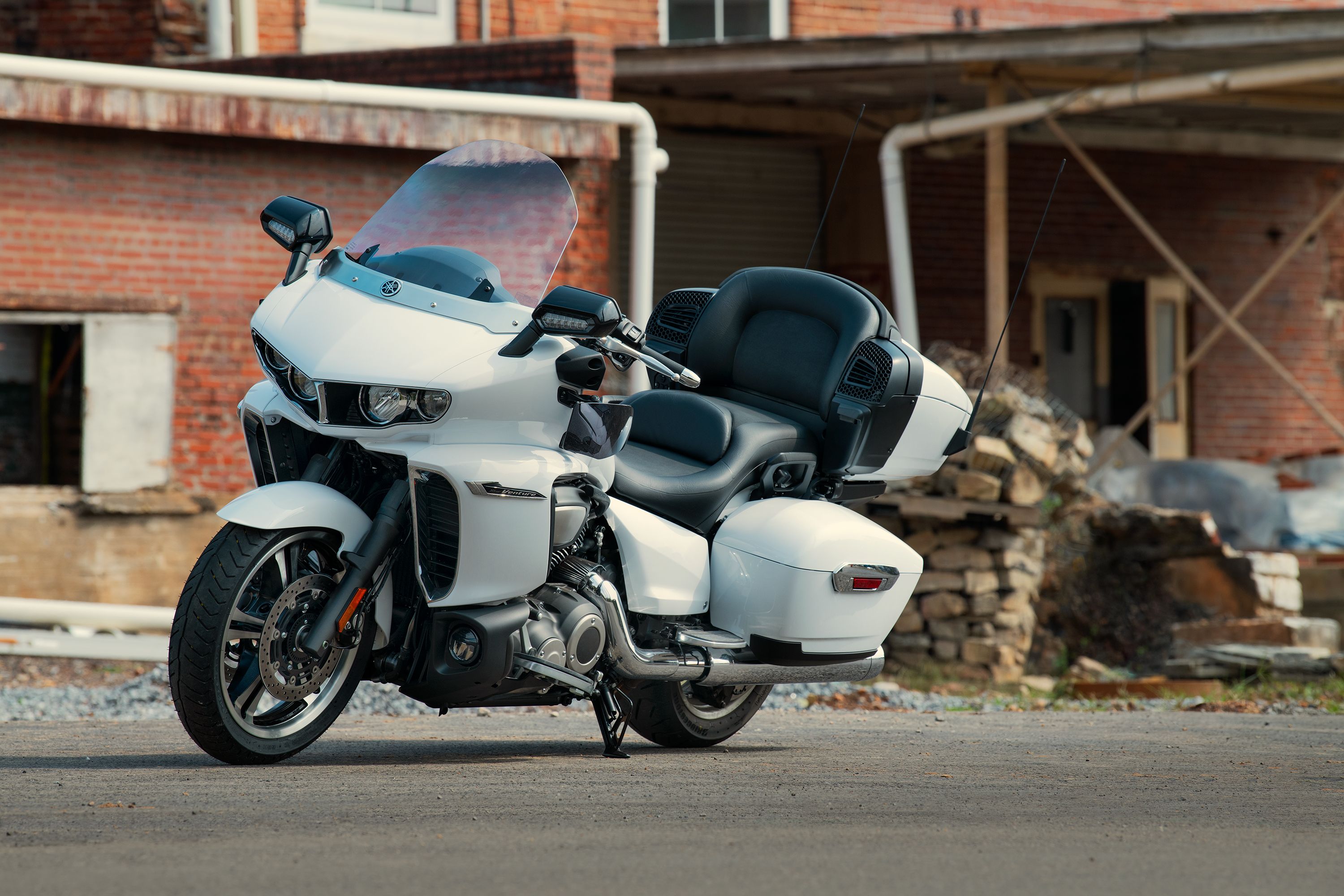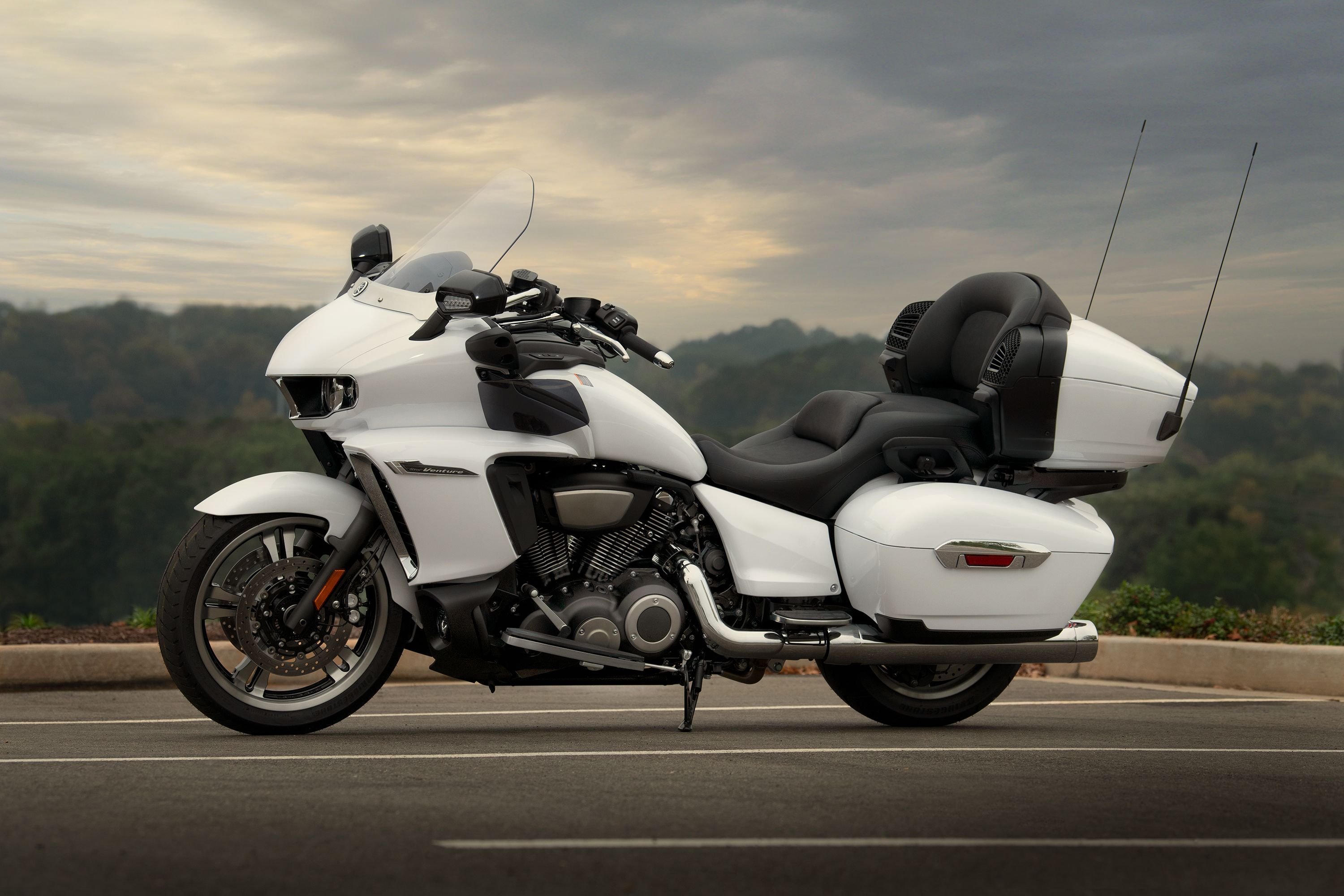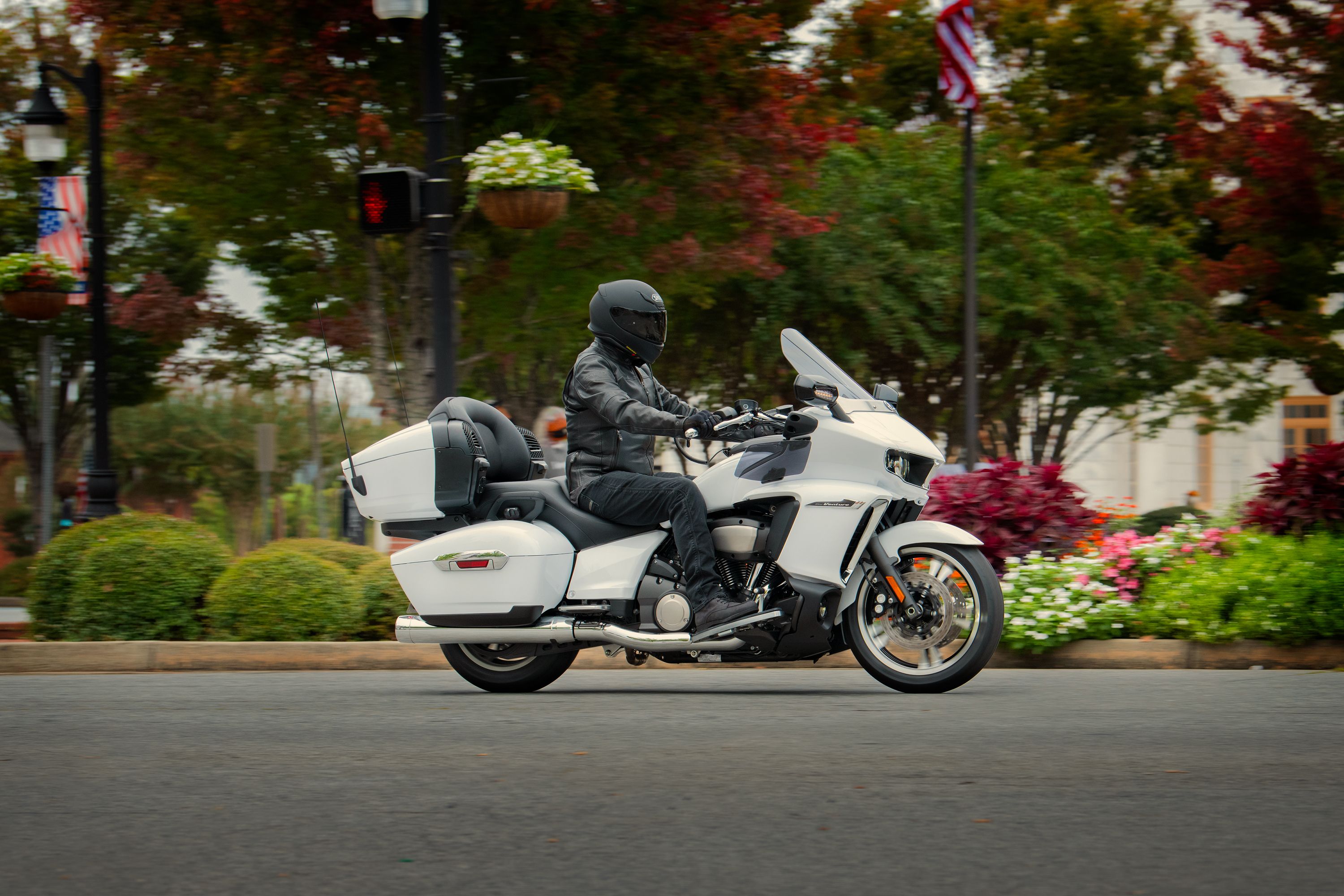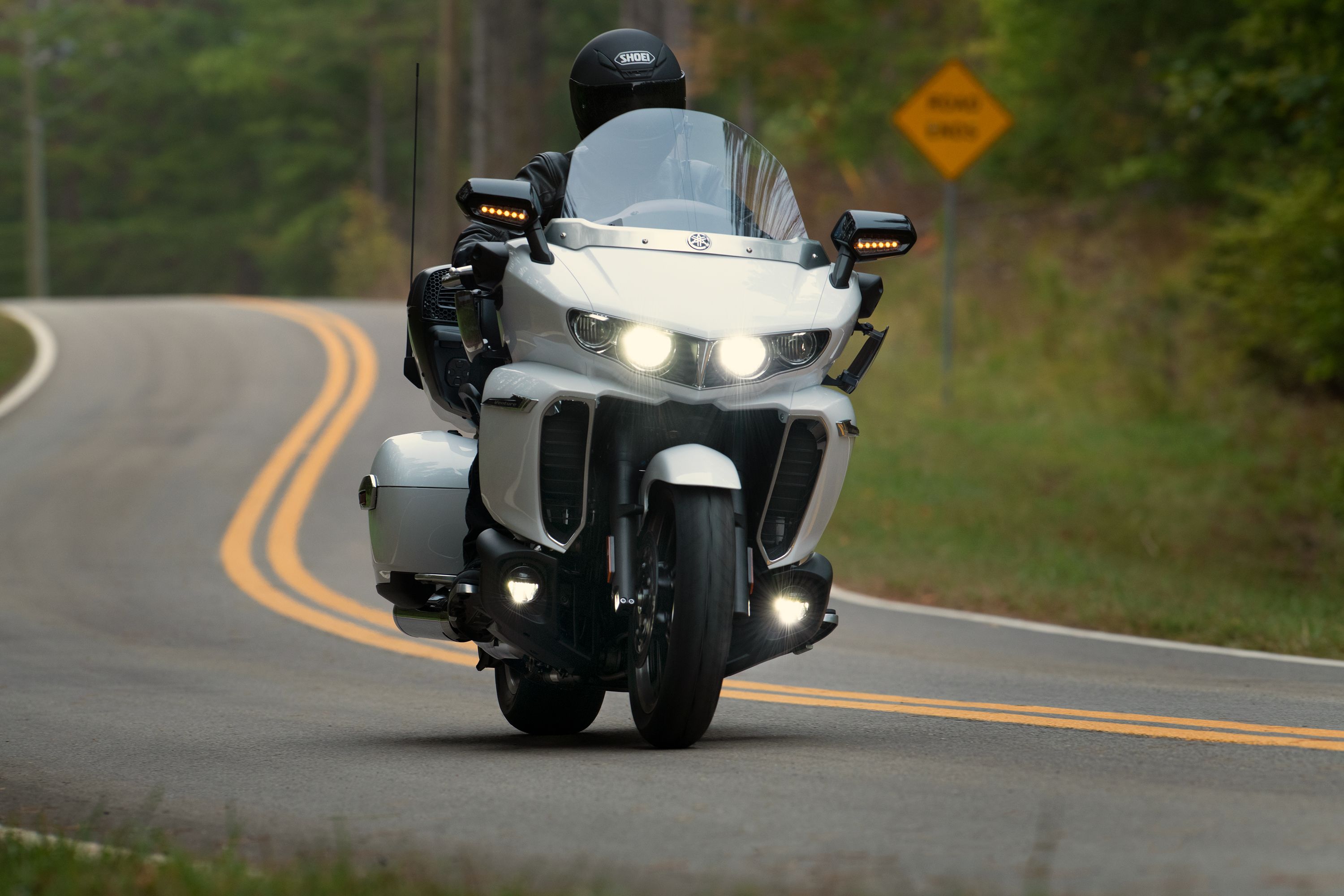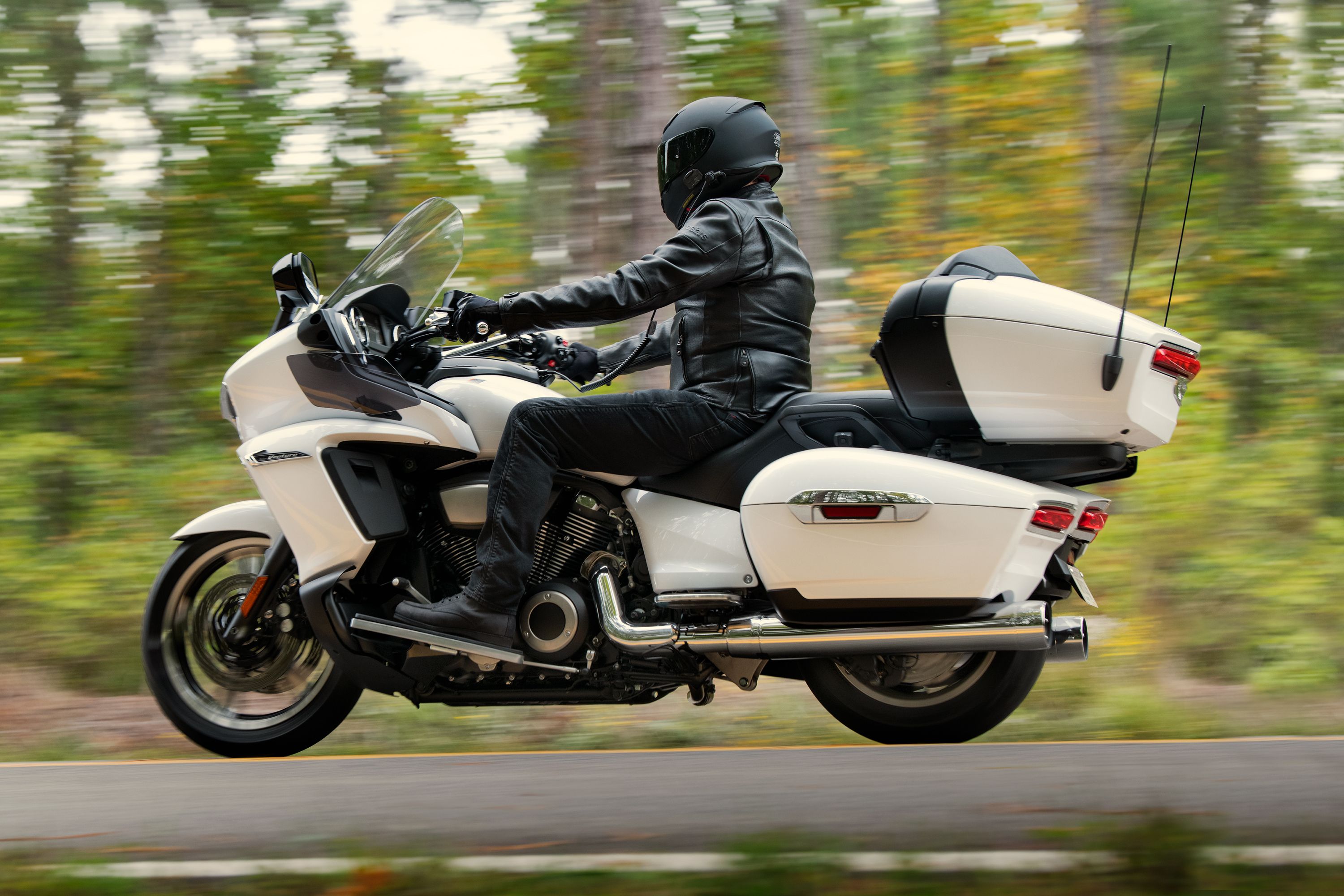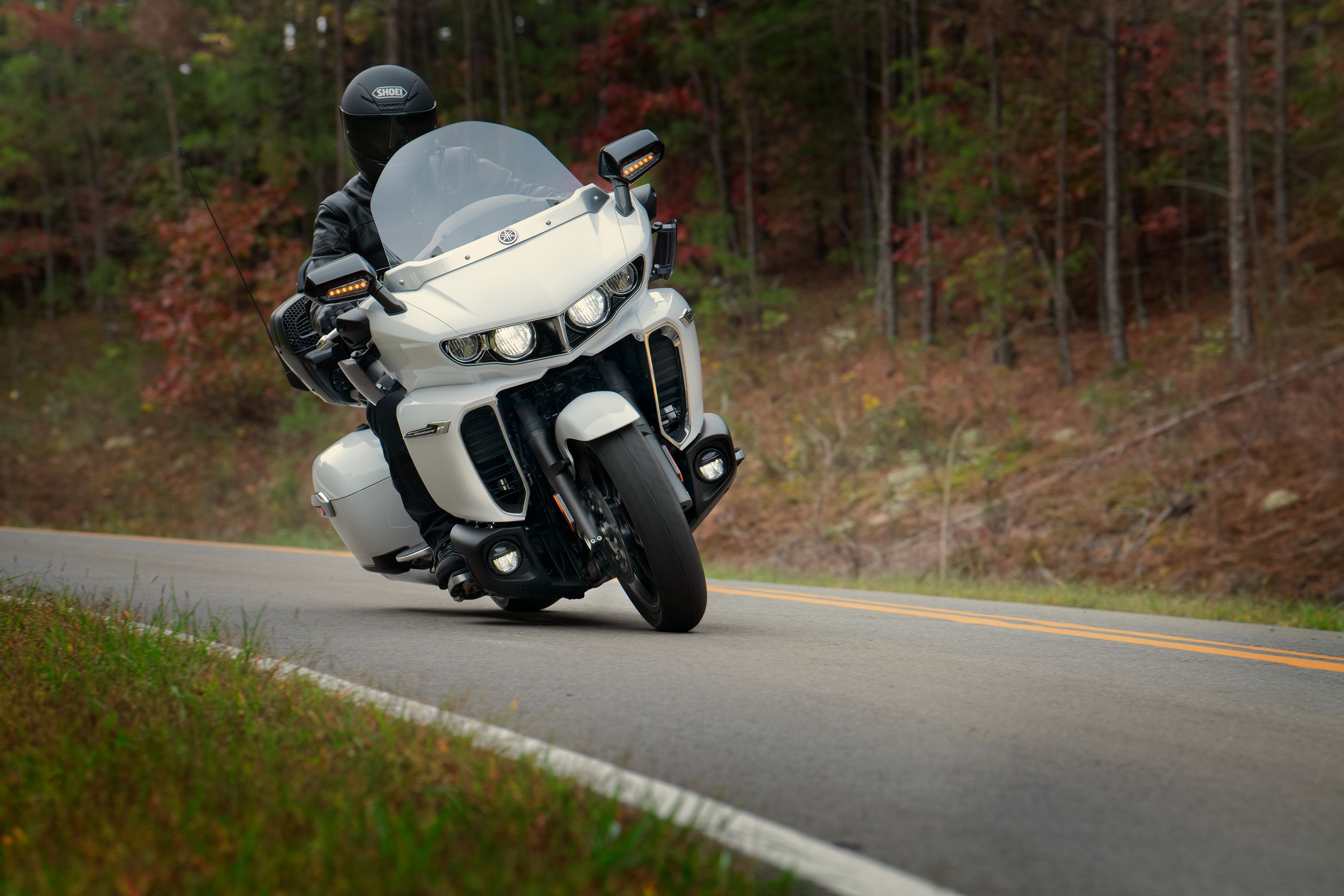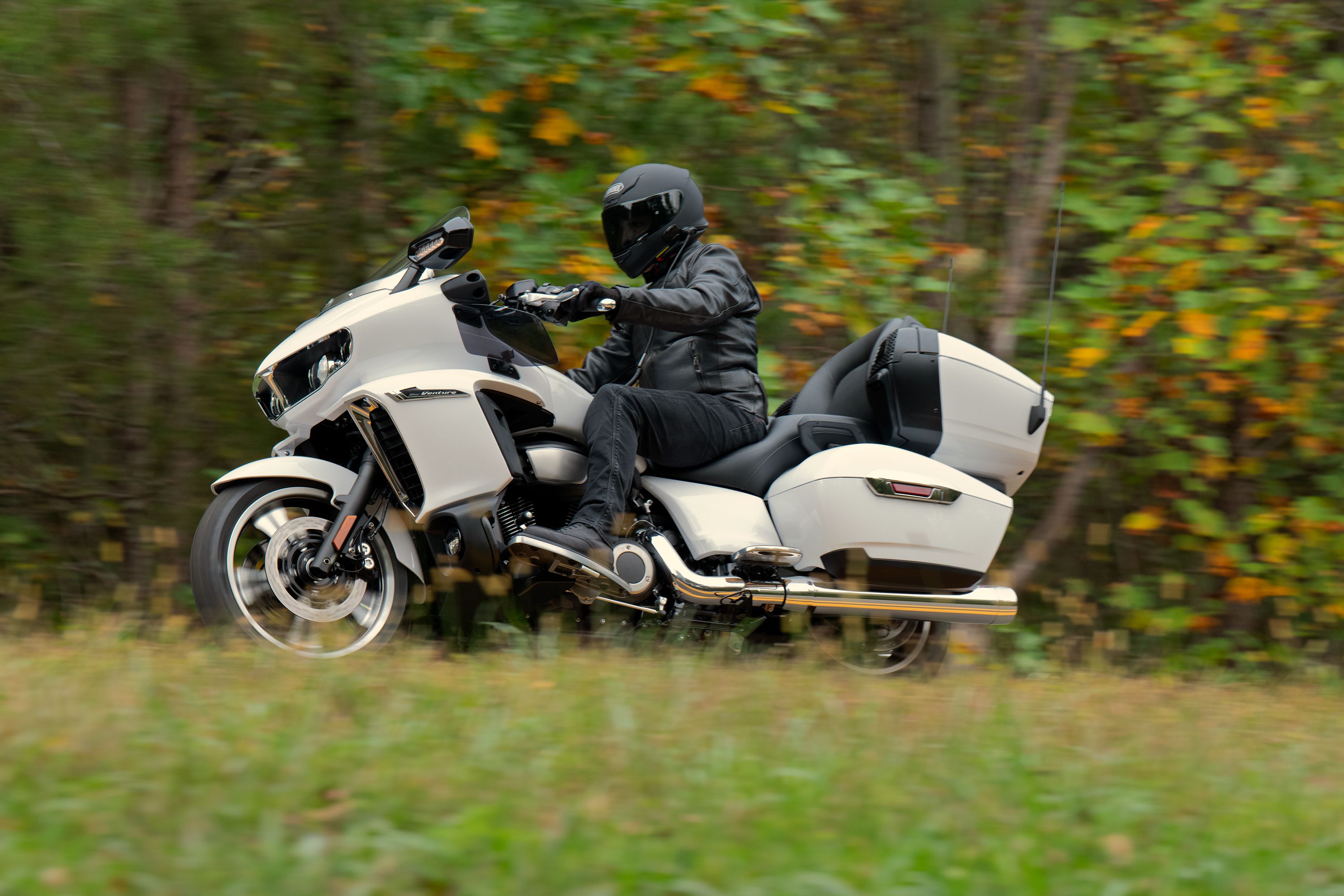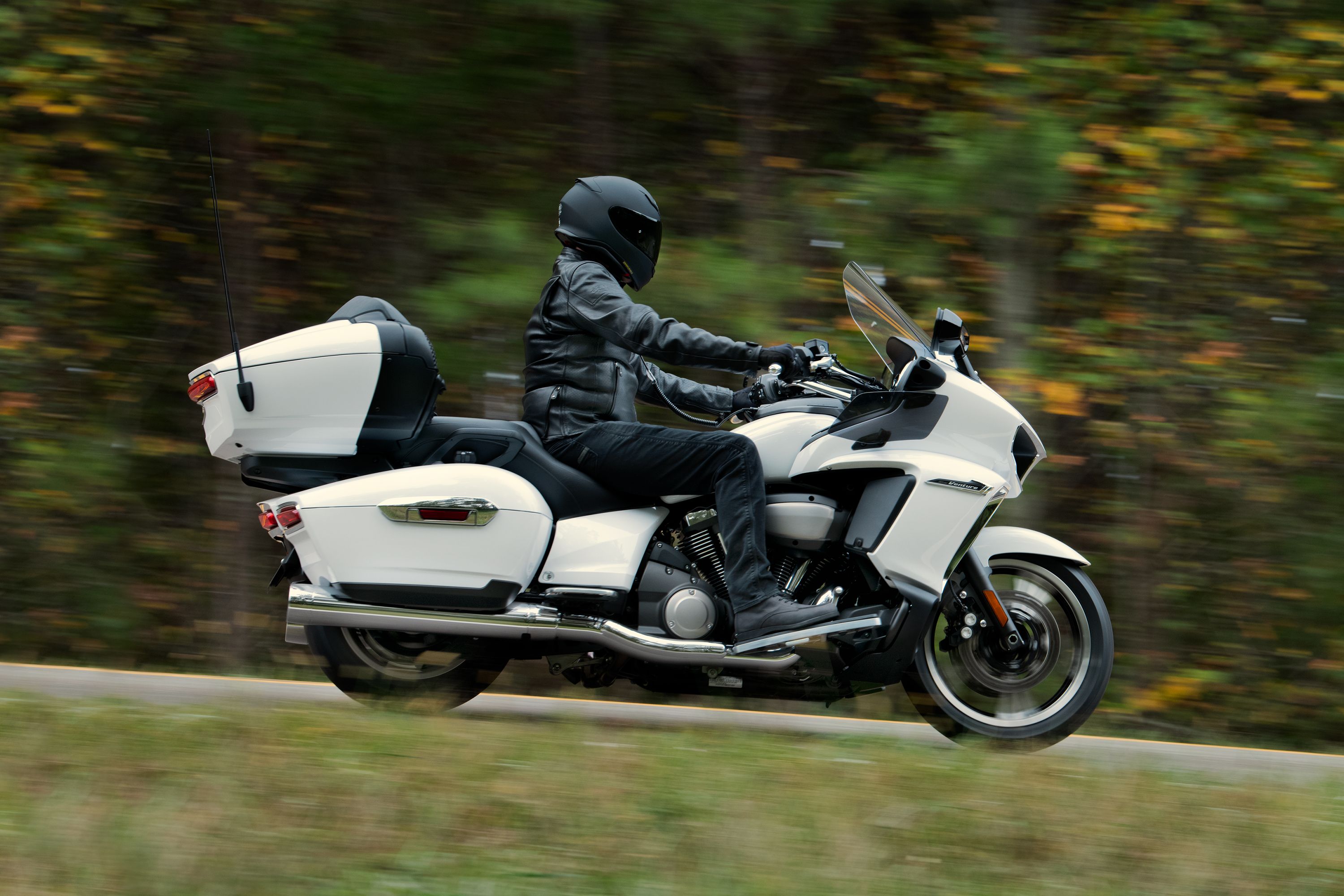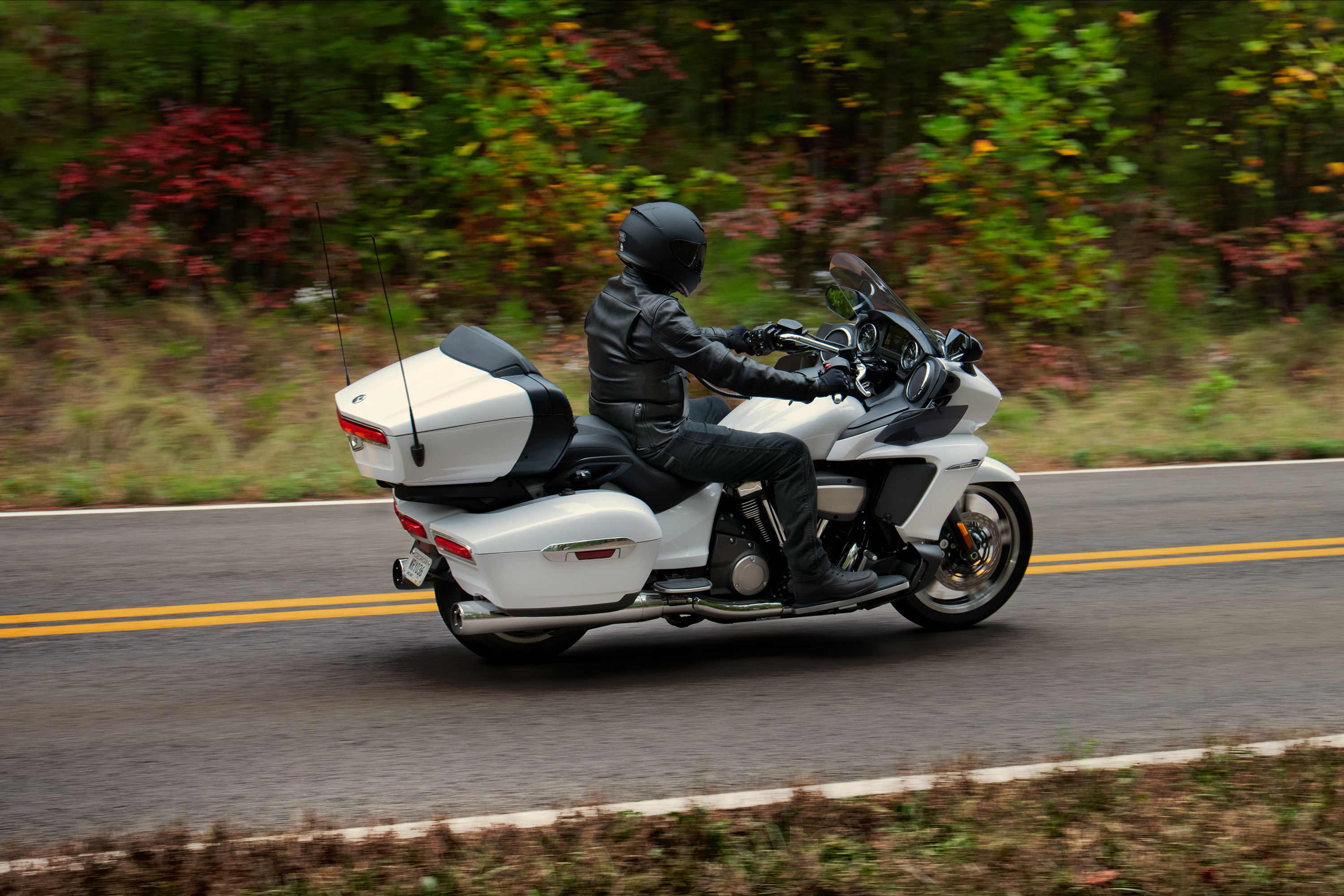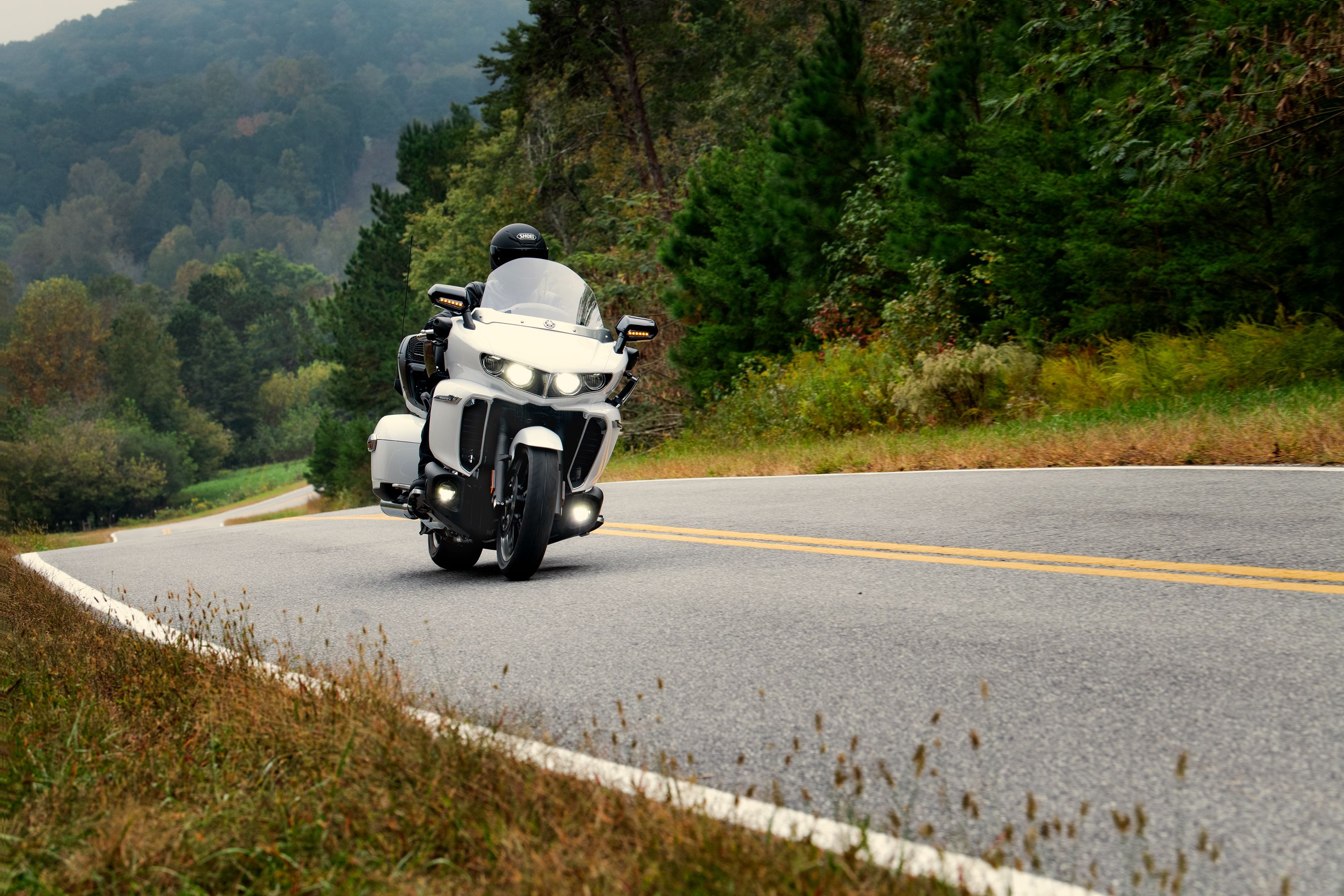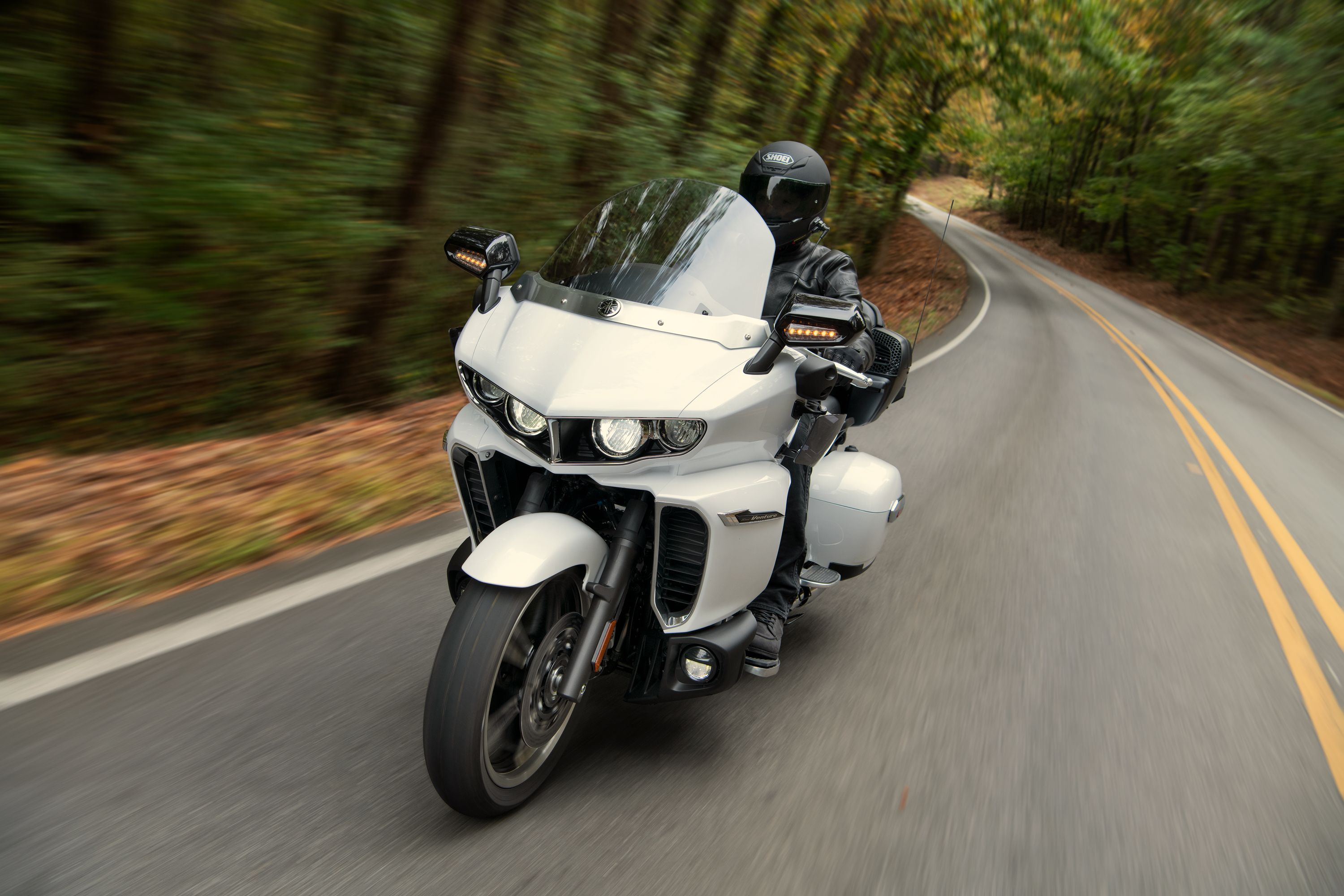Yamaha took a little hiatus from the full-dresser market to the tune of almost a half-decade, but the Tuning Fork Company broke its fast in 2018 with the release of the all-new Star Venture. This ride clearly comes geared to take on Harley-Davidson's touring line in general, and the Road Glide Ultra specifically. Ambitious? You betcha, but Yamaha did its homework and put together a machine that brings a torquey, big-inch, V-twin to the U.S. market in a rather tour-tastic package with over 37 gallons of dry storage across the two hard bags and trunk box.
2018 - 2020 Yamaha Star Venture
- Make: Array
- Model: 2018 - 2020 Yamaha Star Venture
- Engine/Motor: V-Twin
- [do not use] Vehicle Model: Array
Yamaha Star Venture Design
The Venture family has had a couple of runs so far. First, there was a 10-year span from '83 through '93, and another from '96 to '09. Past models in the Venture line ran big, four-banger mills borrowed from other lines, but this is the first time the factory powered it with a new, purpose-built V-twin.
Folks, whatever else this ride is, it's no exercise in subtlety. A broad, flat-top, shark-grin fairing leads the way with a quartet of LED headlights to slice the night and a power-adjustable windshield helping to create the comfort zone for rider and passenger. The windshield comes with over 3.5 inches of travel, and air ducts in the vented fairing provide even more control over the environment immediately behind. Adjustable hand levers come with five positions from which to choose, 'cause contrary to the popular saying, one size does not fit all.
The 27.4-inch seat height, on the other hand, will accommodate all but the shortest of riders. Even the passenger gets some flexibility with the two-position, adjustable footboards, and who wouldn't love a 17-inch wide, adjustable backrest? Best of all, both seats, the handgrips, and the backrest come heated as part of the standard equipment package, so you already get that bit of luxury at all your points of contact.
Yamaha really steps up to the top rung with its infotainment suite. The standard kit comes with a 7-inch, LCD-touchscreen display with all the usual pocket-jukebox compatibilities to include USB and Bluetooth to go with the ubiquitous AM/FM receiver. A tire-pressure monitor joins the standard package for a nice bit of safety, convenience, and peace of mind.
Part of the Transcontinental Option Package – which comes standard for 2021 – includes, but isn't limited to, an upgrade to the infotainment system, namely the addition of a CB radio, SiriusXM, satellite weather, and GPS. Everything but the kitchen sink as far as that sort of thing goes. You even get another pair of speakers, you know, just in case the stock system ain't enough. The tour-pack, saddlebags, and in-fairing storage totals 37.3 gallons with the option of expanding that up to 38 gallons, so there is no shortage of dry storage for touring or at least some serious grocery runs.
Yamaha Star Venture Chassis
The Star Venture weighs in at 963 pounds, so the factory went with steel members for the main frame to support all that stress. A die-cast subframe finishes the skeleton with an eye toward mass-centralization, though that seems a bit futile if you consider the effect of a load in the tour-pack, but I guess they had to at least make an effort.
The steering comes raked out quite a bit at 31-degrees with 5.7 inches of trail, so the Venture is quite stable in the straights and comfortable over the long haul. Even though the factory took steps to try to reduce rotational inertia through mass centralization, there's no arguing with the steering numbers, and this bike feels a little reluctant in the corners.
A pair of 46 mm forks support the front end on 5.1 inches of travel, but offer nothing in the way of adjustment while the rear shock gives up 4.3 inches of travel and only the obligatory preload adjustment. All-in-all, a rather uninspiring suspension system, but one that is, unfortunately, all too common on American-style tourers.
Dual, 298 mm discs slow the 18-inch front wheel with a massive, 320 mm disc to manage the rear, and not only does it come with ABS protection, but it also gets Yamaha's Unified Brake System that electronically distributes brake pressure to where it's needed.
|
Suspension, Front/ Travel: |
46 mm telescopic fork/ 5.1 inches |
|
Suspension, Rear/ Travel: |
Single shock with remote preload adjustment/ 4.3 inches |
|
Rake (Caster Angle): |
31.0° |
|
Trail: |
5.7 in |
|
Brakes, Front: |
Dual 298 mm hydraulic discs, Unified Brake System and ABS |
|
Brakes, Rear: |
320 mm hydraulic disc, Unified Brake System and ABS |
|
Tire, Front: |
130/70R18 Bridgestone® Exedra® |
|
Tire, Rear: |
200/55R16 Bridgestone® Exedra® |
Yamaha Star Venture Drivetrain
Yamaha really veers into H-D and Indian's lane on the Star Venture with the big, air-cooled V-twin mill that serves as the beating heart and anchors the look for the rest of the bike. It doesn't just look big; this sucker runs 100 mm bores with a 118 mm stroke for a total displacement of 1,854 cc, or 113 cubic-inches. Though it looks similar to certain other American-made engines, the factory threw in a tuned counterbalancer to tame the vibrations for low-fatigue cruising.
An over-head cam times quad-valve, dual-plug heads with a transistor-controlled ignition to manage the spark. A RbW throttle enables the YCC-T and variable D-modes features for a little more of the electronic wizardry that buyers in this sector expect. The mill churns out some impressive torque numbers to the tune of a massive, 126 pounds o' grunt at 2,750 rpm. Both fifth and sixth gear come with an overdrive ratio, and you can expect to cruise at 75 mph at that low and comfortable engine speed.
To aid you in handling the heft of the Star Venture, Yamaha includes its Sure-Park system system}}. A control on the handlebar gives you access to an electric forward and reverse drive. If you've ever ridden a full dresser, you'll appreciate the ease with which you can handle parking lot maneuvers using this system.
|
Engine: |
113-cubic-inch (1,854 cc) air-cooled OHV V-twin; 8 valves |
|
Bore x Stroke: |
100.0 mm x 118.0 mm |
|
Compression Ratio: |
9.5:1 |
|
Fuel Delivery: |
Yamaha Fuel Injection with YCC-T and D-Mode |
|
Ignition: |
TCI: Transistor Controlled Ignition |
|
Transmission: |
6-speed; multiplate assist and slipper wet clutch |
|
Final Drive: |
Belt |
Yamaha Star Venture Pricing
The price on the 2021 Star Venture didn't go up, per se. It just includes the Transcontinental Package that previously boosted MSRP to $26,999. Honestly, if a bike like the Star Venture interests you, the TC package should be on your list of 'must-haves' anyway. Yamaha gives you a one-year limited warranty with an option for four more years through Yamaha Extended Service for a total of five years coverage.
|
Warranty: |
5 Year Warranty Coverage (1 year limited factory warranty + 4 years Yamaha Extended Service = 5 years coverage) |
|
Colors: |
|
|
└ 2018: |
Granite Gray, Raspberry Metallic |
|
└ 2020: |
Granite Gray, Impact Blue |
|
└ 2021: |
Intensity White, Impact Blue |
|
Price: |
|
|
└ 2018, 2020: |
$24,999 (Transcontinental: $26,999) |
|
└ 2021: |
$26,999 |
Yamaha Star Venture Competitors
Since Yammy so clearly took aim at Harley-Davidson's Road Glide Limited with the Star Venture, I think it's fair to see how they stack up against each other.
Harley-Davidson Road Glide Limited
Both carry shark-nose fairings (of which I am not a fan) with windshields and adjustable deflectors/vents to tweak conditions in the rider's bubble. The Venture carries sportscar-like scoops up front, but the H-D actually mounts fairing lowers on the engine guard for even more rider protection. Yammy nailed the look pretty well with a classic, if chunky, overall panache and I'm hard pressed to pick between the two, though that's mainly 'cause I don't like the fixed fairing on either one.
The chassis are as similar as the looks with both running preload-adjustable shocks with fixed-value front forks, even though Harley availed itself of Showa's Dual Bending Valve shocks for a better-than-vanilla ride. Both have their own ABS with electronically linked and balanced brakes on board, so neither bike in particular gains an upper hand here. If you look at the accessories, H-D gains an edge in the ABS department with its Reflex Defensive Rider System that adds a lean-sensitive element to its anti-lock system, though it'll set you back another grand at the checkout.
Harley powers its entry with the Twin-Cooled Milwaukee-Eight 114 for a slight displacement advantage versus the 113 cubic-inch Yamaha, but the torque numbers fall short with Yammy on top at 126 pound-feet, and Harley bringing up the rear with 122 pound-feet. Not a big difference and I dare anyone to tell the difference on the ol' heinie-dyno, especially given that both weigh in at half-a-ton wet. Yamaha also did a good job making the engine aesthetically pleasing, another critical point because it ain't enough to just be powerful, one has to look good whilst doing it.
Pricing is on-point for the market and Yamaha squeaks in a win with a $26,999 sticker. For the 2020 model year, H-D pumped up the price with a $28,299 sticker on the basic black model and a whopping $32,399 tag on the top-shelf paint packages, so anyone sitting on the fence has a bigger incentive to go Yamaha.
Read our full review of the Harley-Davidson Road Glide Limited.
He Said
“So there you have it. I, for one, saw about what I expected to see based on the price alone, though I was a little surprised at the total lack of attention to the front suspension. Still, it will be interesting to see just how well it competes in this fairly-unpopulated segment.”
She Said
My wife and fellow motorcycle writer, Allyn Hinton, says, "I'm not sure what I think. For all the pre-unveiling build-up, it seems to be rather ordinary, and in fact, I might think it a little over-priced for its ordinary-ness. I do like the low-low rpms at cruising speed and there's plenty of torque. I guess if you're a die-hard Yamaha fan and you've been waiting since 2009 for a proper tourbike, your prayers have been answered. Maybe if it were at or under the $20k mark, I might be more enthused. Mark me down for undecided at this time."
Yamaha Star Venture Specifications
|
Engine & Drivetrain: |
|
|
Engine: |
113-cubic-inch (1,854 cc) air-cooled OHV V-twin; 8 valves |
|
Bore x Stroke: |
100.0 mm x 118.0 mm |
|
Compression Ratio: |
9.5:1 |
|
Fuel Delivery: |
Yamaha Fuel Injection with YCC-T and D-Mode |
|
Ignition: |
TCI: Transistor Controlled Ignition |
|
Transmission: |
6-speed; multiplate assist and slipper wet clutch |
|
Final Drive: |
Belt |
|
Chassis: |
|
|
Suspension, Front/ Travel: |
46 mm telescopic fork/ 5.1 inches |
|
Suspension, Rear/ Travel: |
Single shock with remote preload adjustment/ 4.3 inches |
|
Rake (Caster Angle): |
31.0° |
|
Trail: |
5.7 in |
|
Brakes, Front: |
Dual hydraulic disc, 298 mm; Unified Brake System and ABS |
|
Brakes, Rear: |
20 mm; Unified Brake System and ABS |
|
Tire, Front: |
130/70R18 Bridgestone® Exedra® |
|
Tire, Rear: |
200/55R16 Bridgestone® Exedra® |
|
Dimensions & Capacities: |
|
|
L x W x H: |
106.3 in x 39.9 in x 55.5 - 59.1 in |
|
Seat Height: |
27.4 in |
|
Wheelbase: |
67.6 in |
|
Maximum Ground Clearance: |
5.5 in |
|
Fuel Capacity: |
6.6 gal |
|
Fuel Economy: |
34.0 mpg |
|
Wet Weight: |
957 lb (Transcontinental: 963 lb) |
|
Details: |
|
|
Warranty: |
5 Year Warranty Coverage (1 year limited factory warranty + 4 years Yamaha Extended Service = 5 years coverage) |
|
Colors: |
|
|
└ 2018: |
Granite Gray, Raspberry Metallic |
|
└ 2020: |
Granite Gray, Impact Blue |
|
└ 2021: |
Intensity White, Impact Blue |
|
Price: |
|
|
└ 2018, 2020: |
$24,999 (Transcontinental: $26,999) |
|
└ 2021: |
$26,999 |
Further Reading
Yamaha
Read more Yamaha news.


